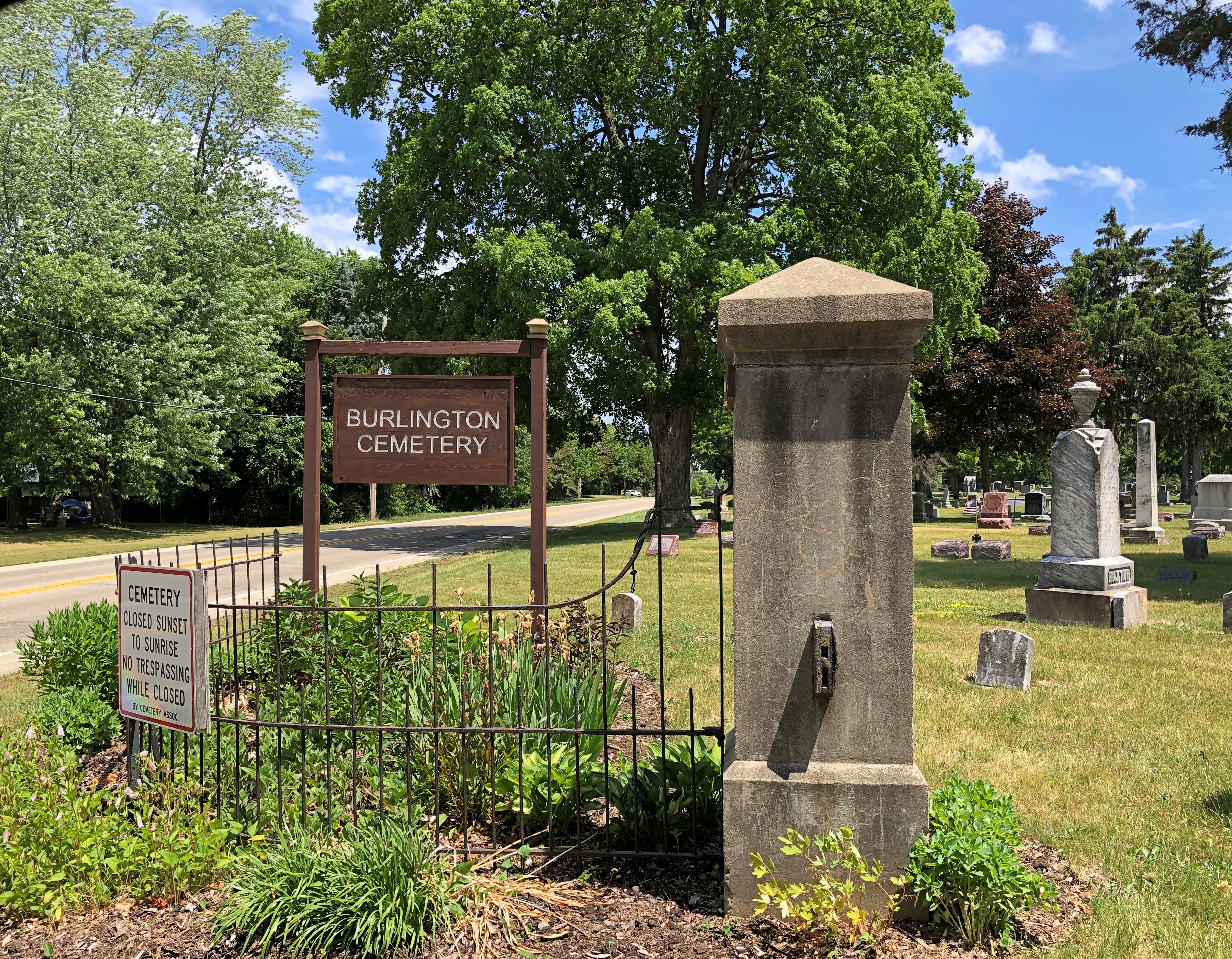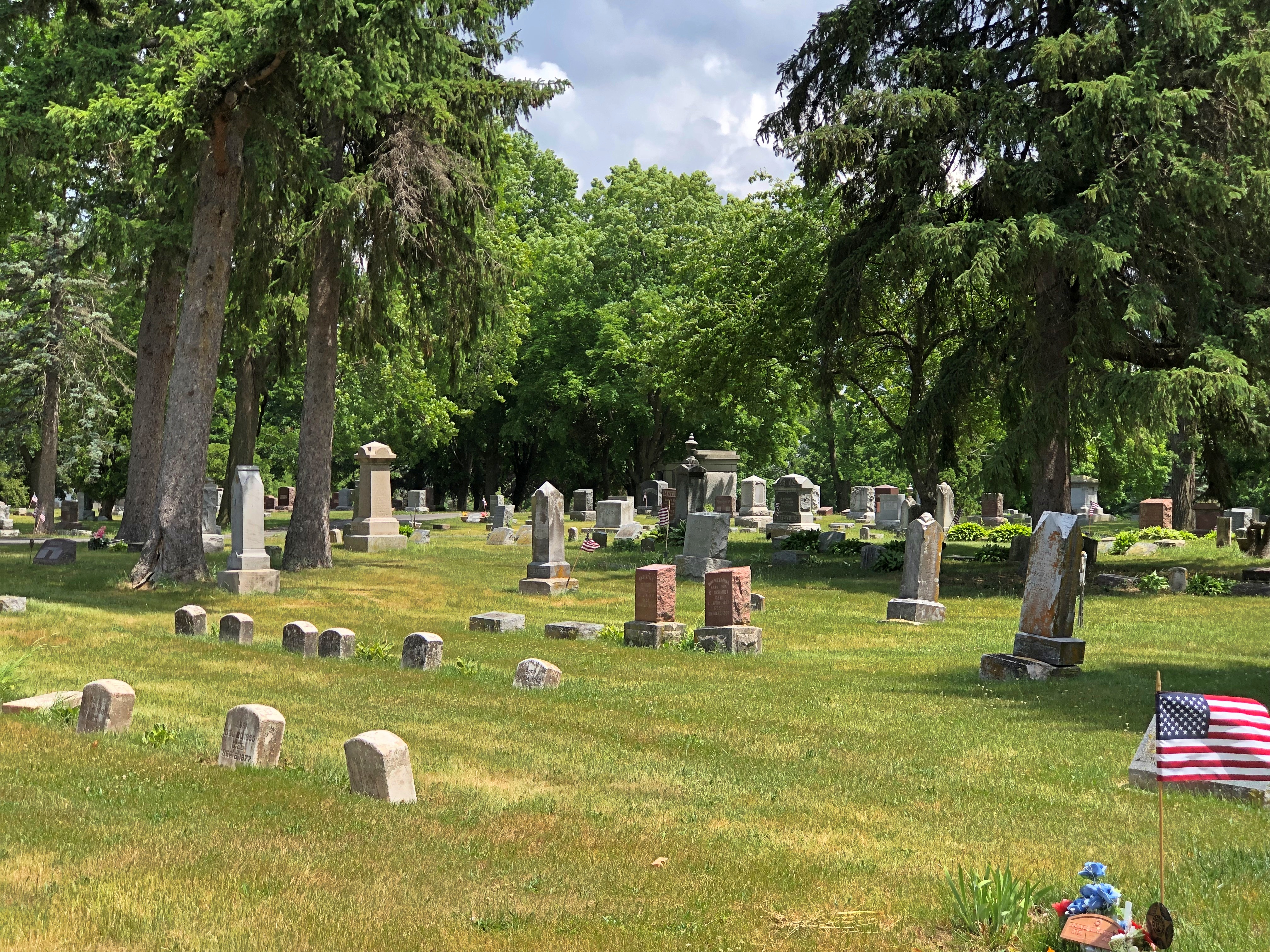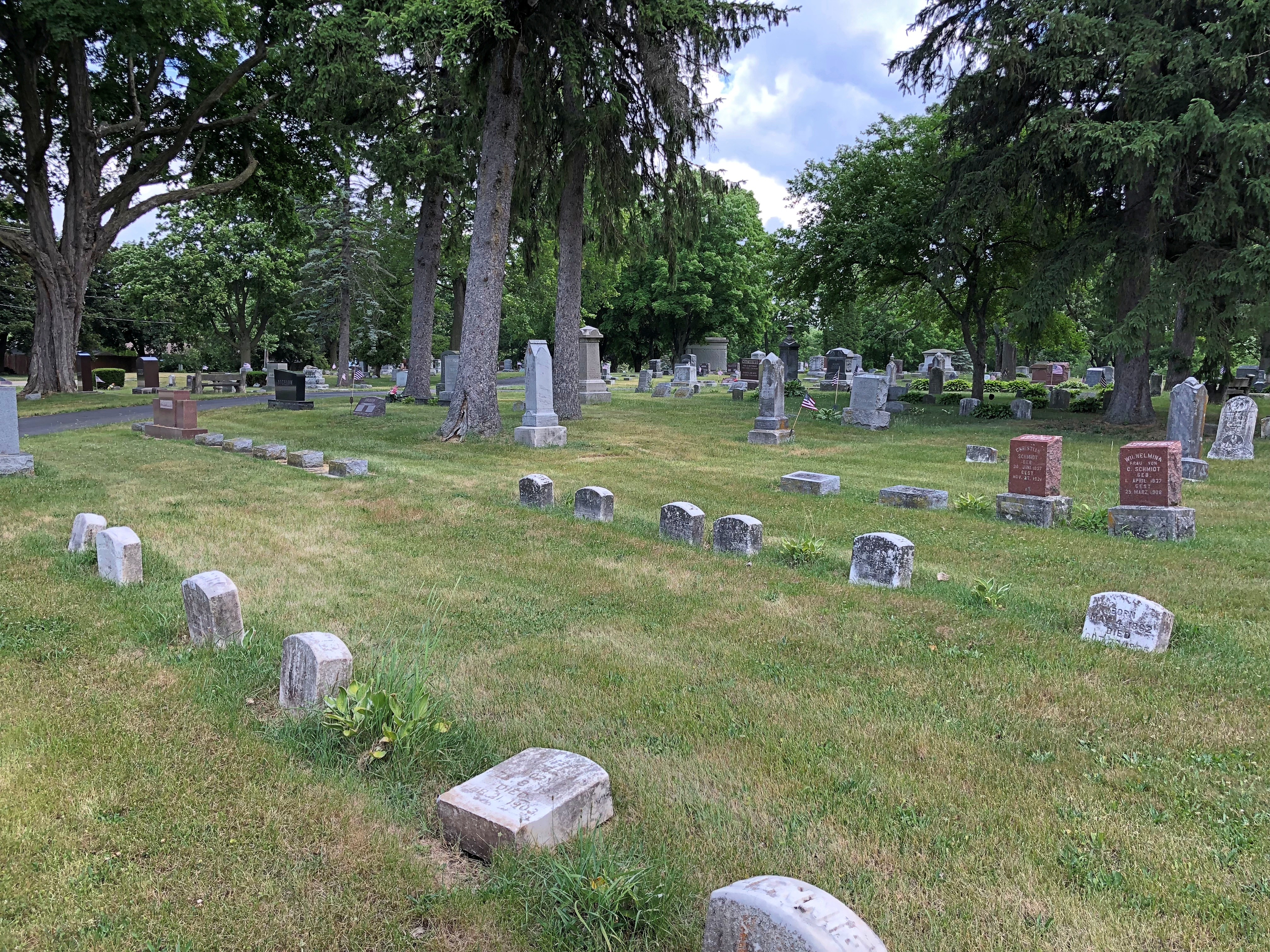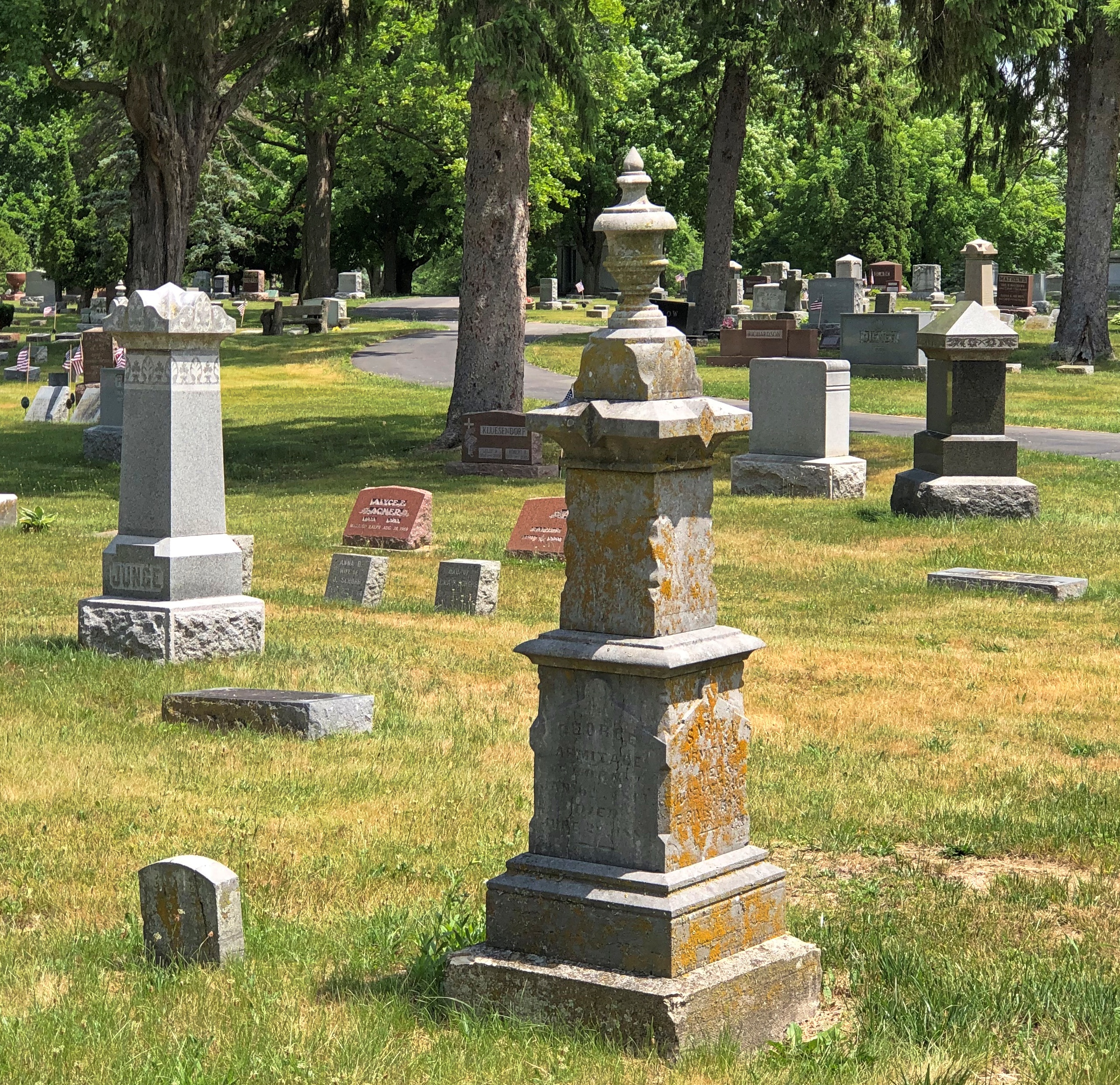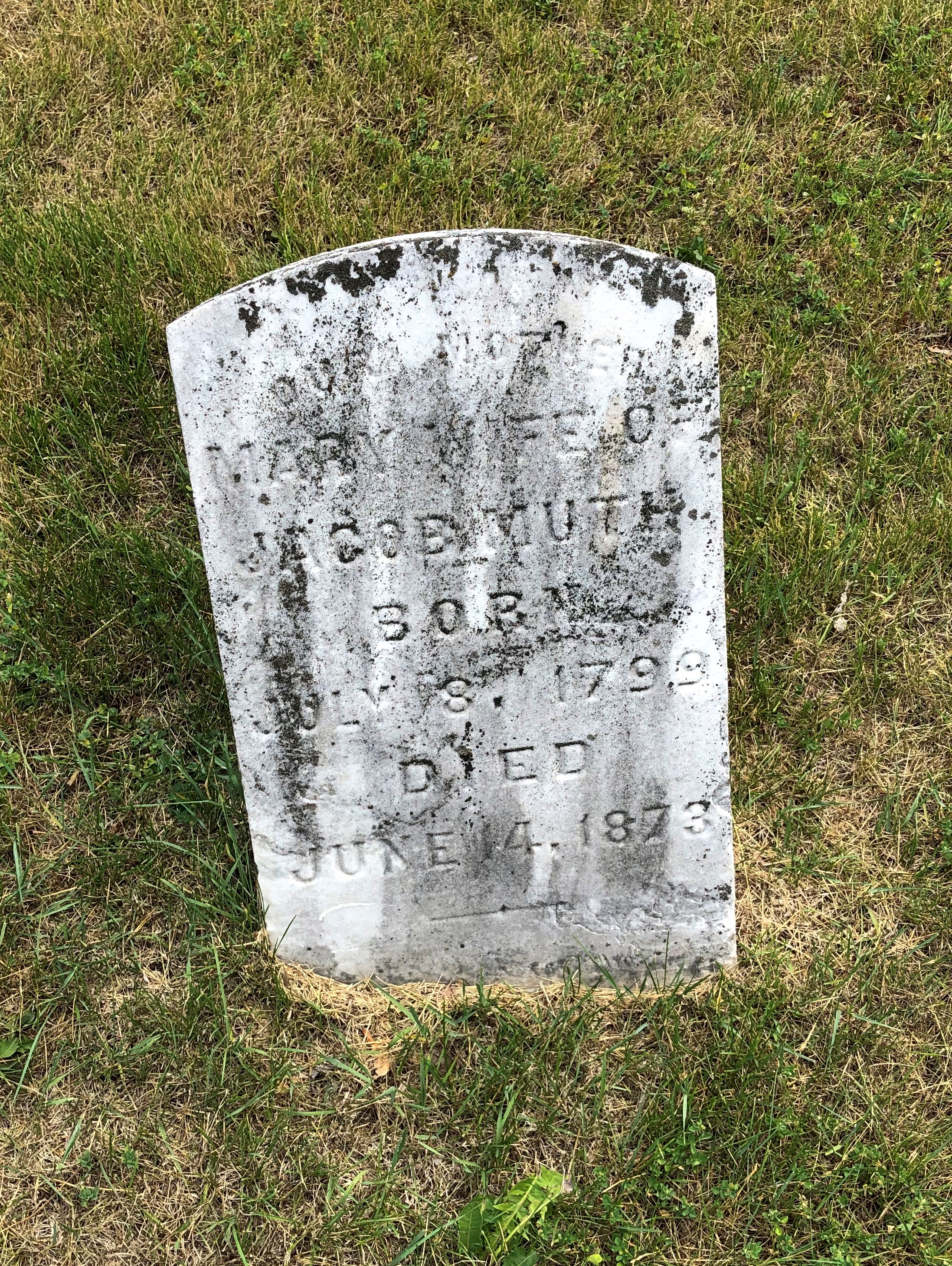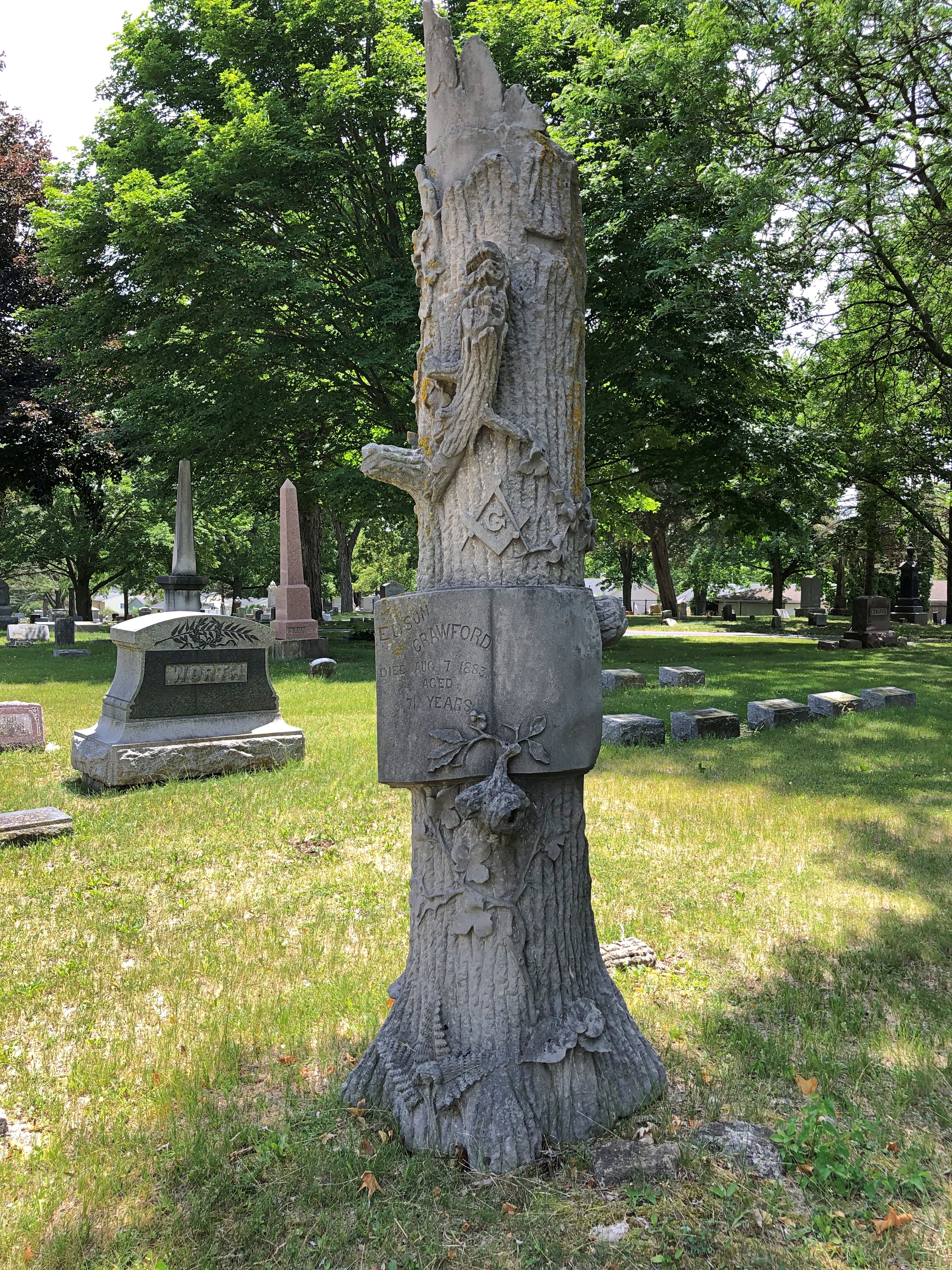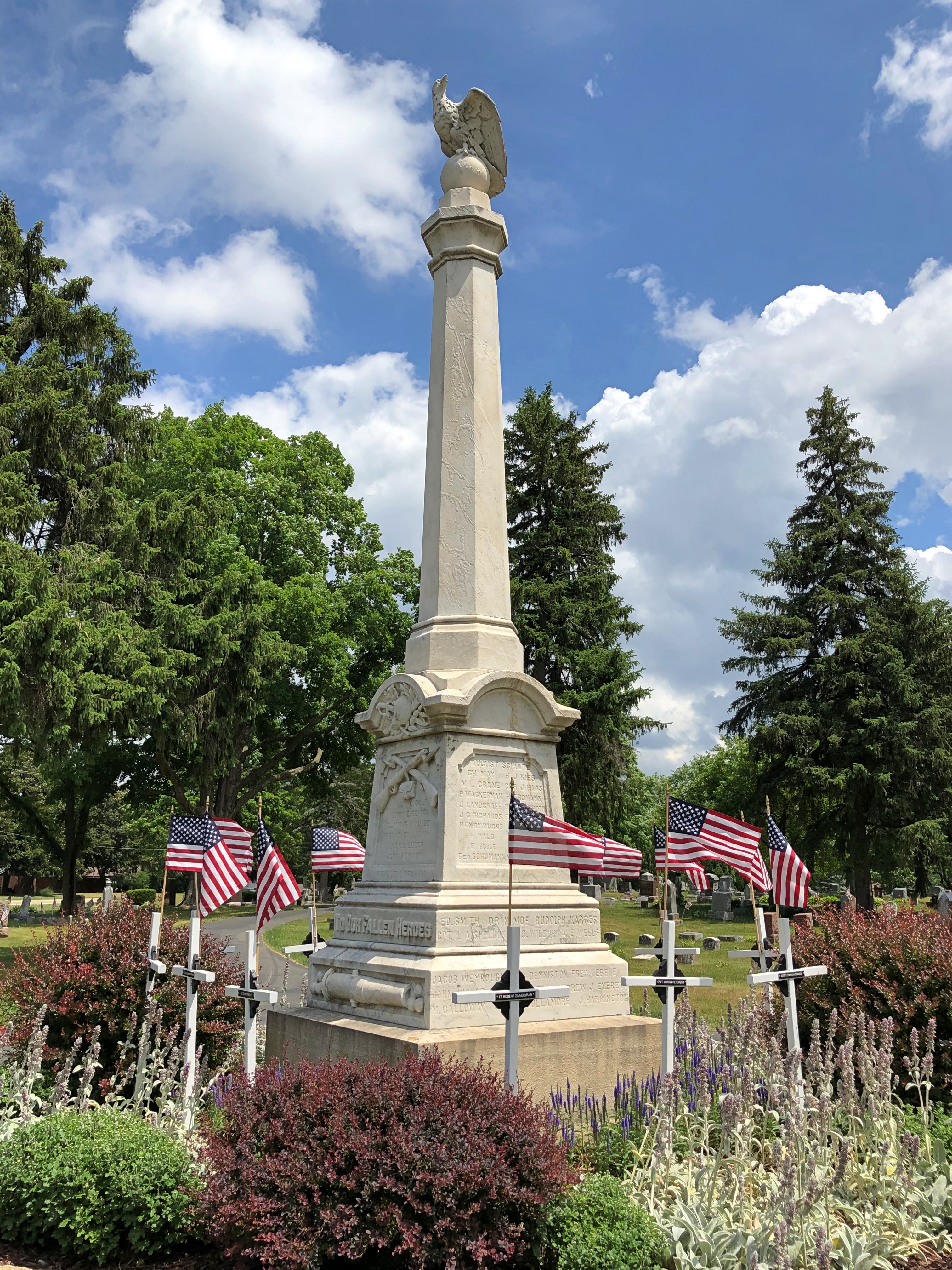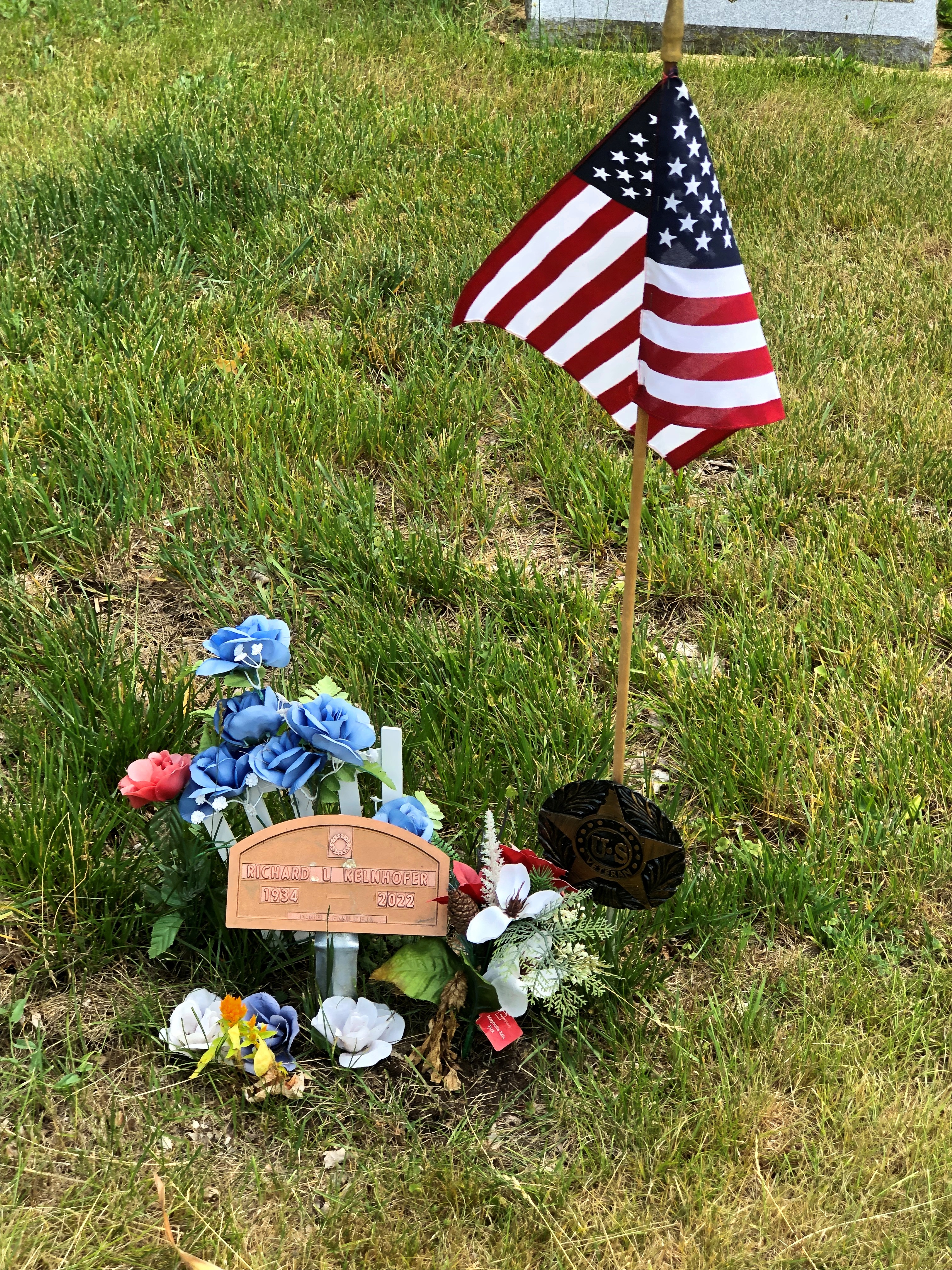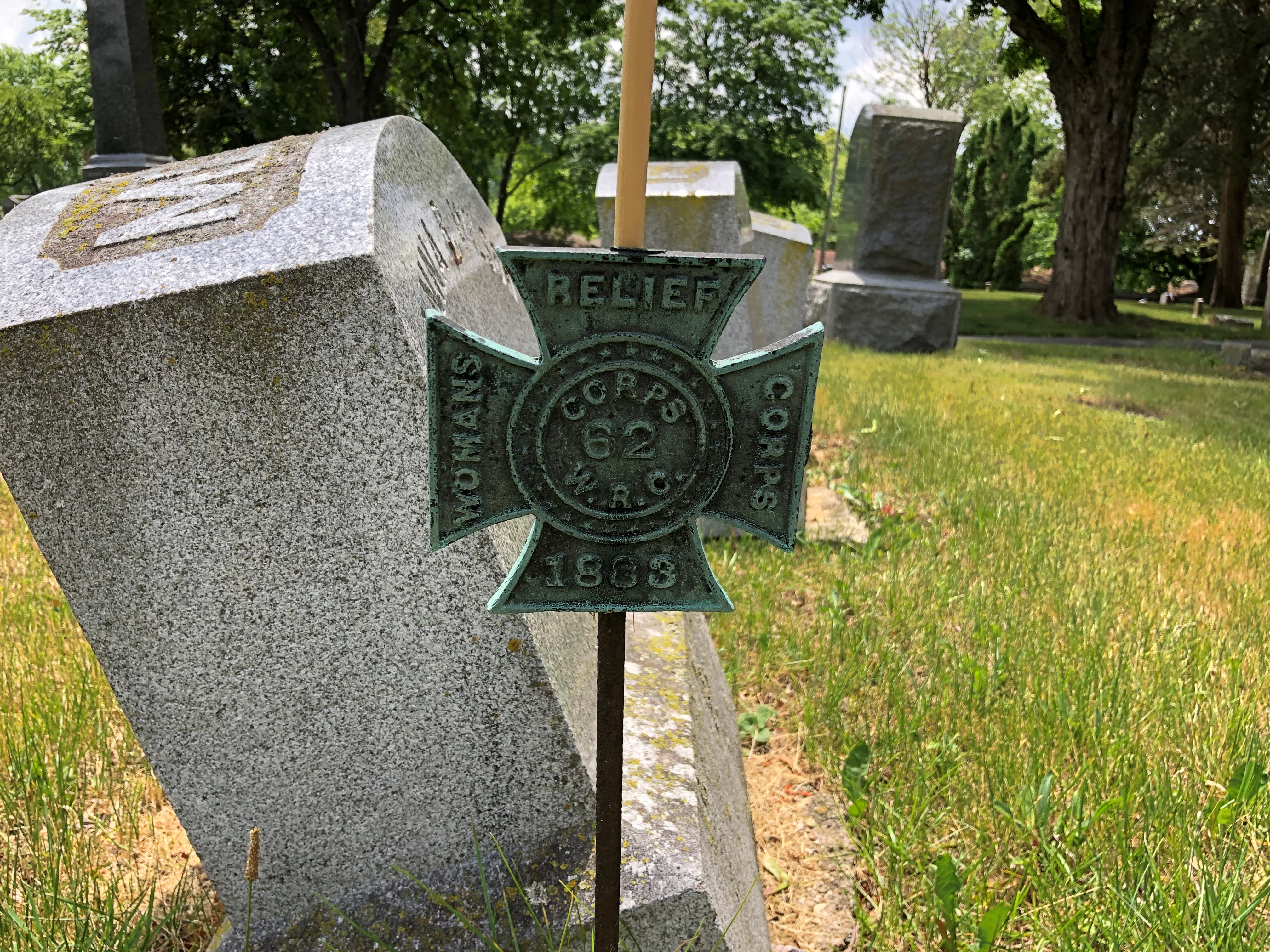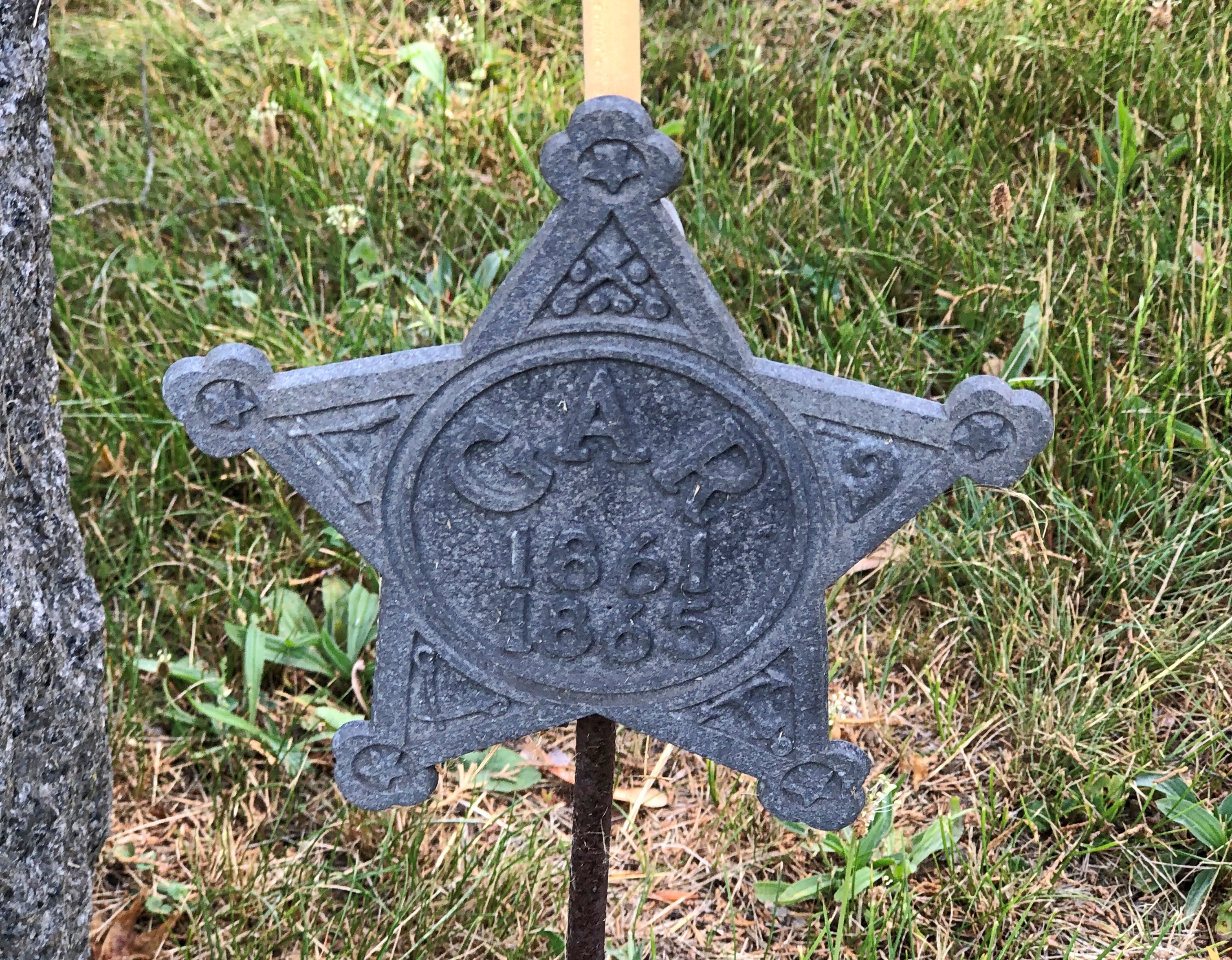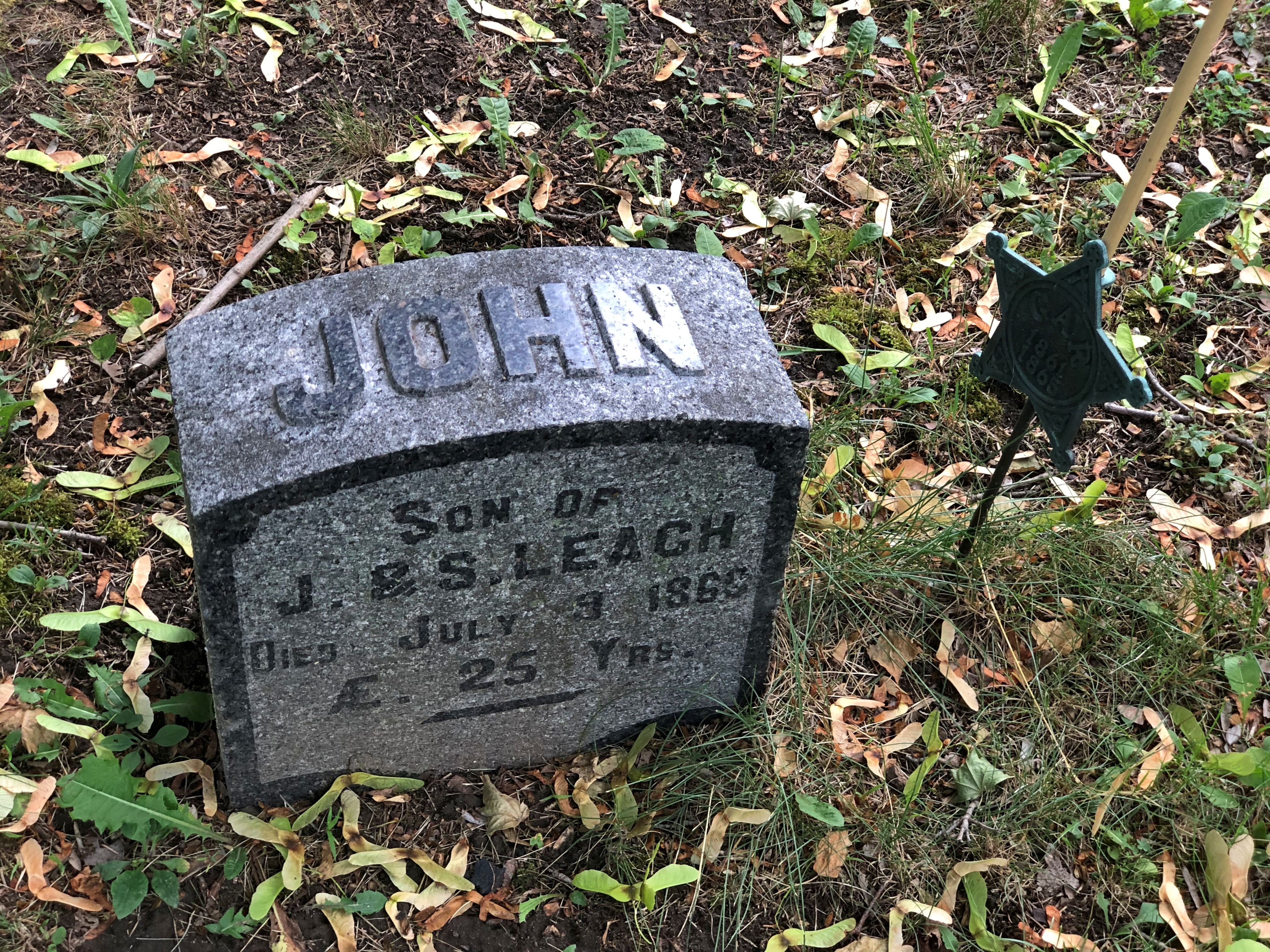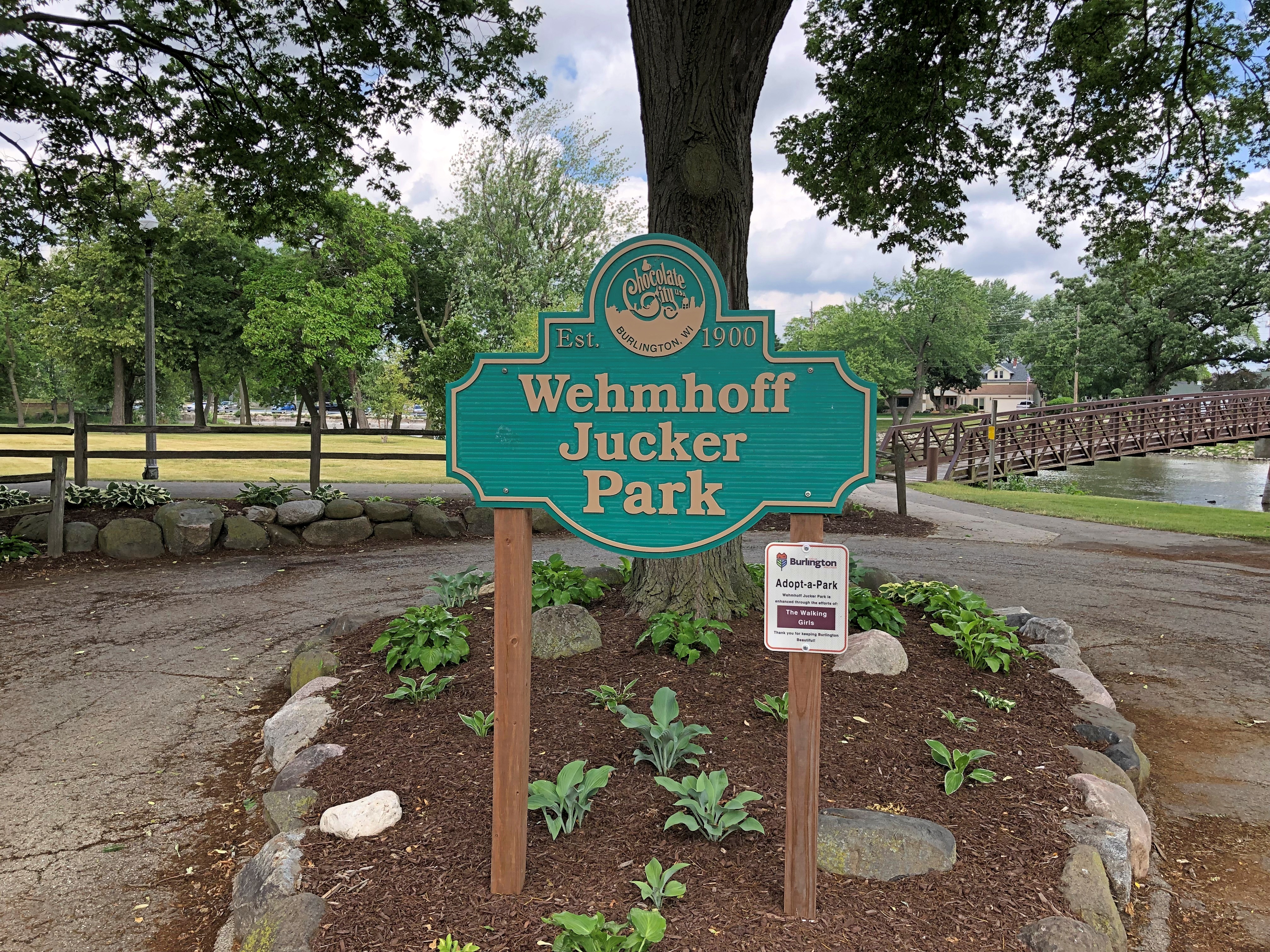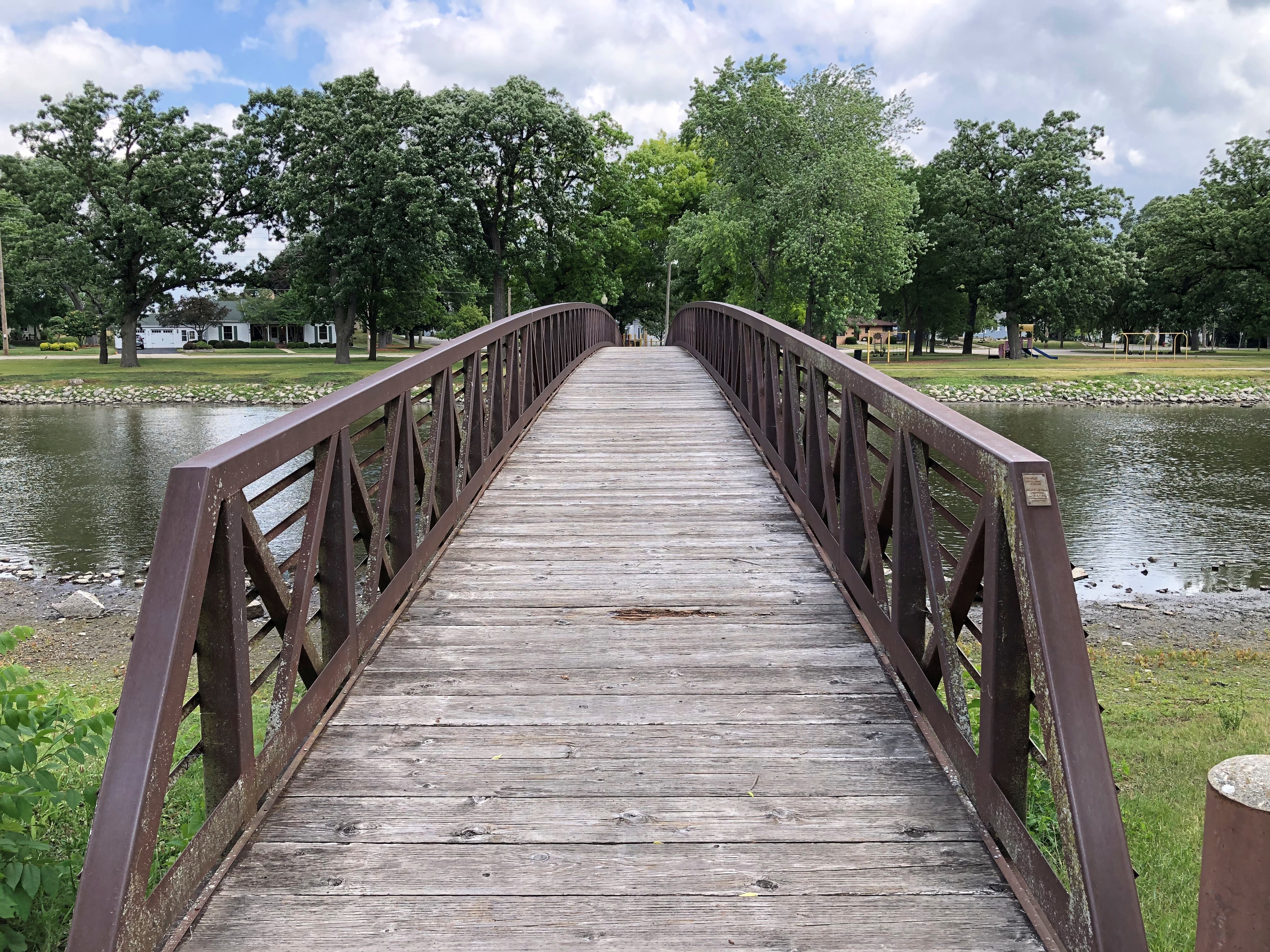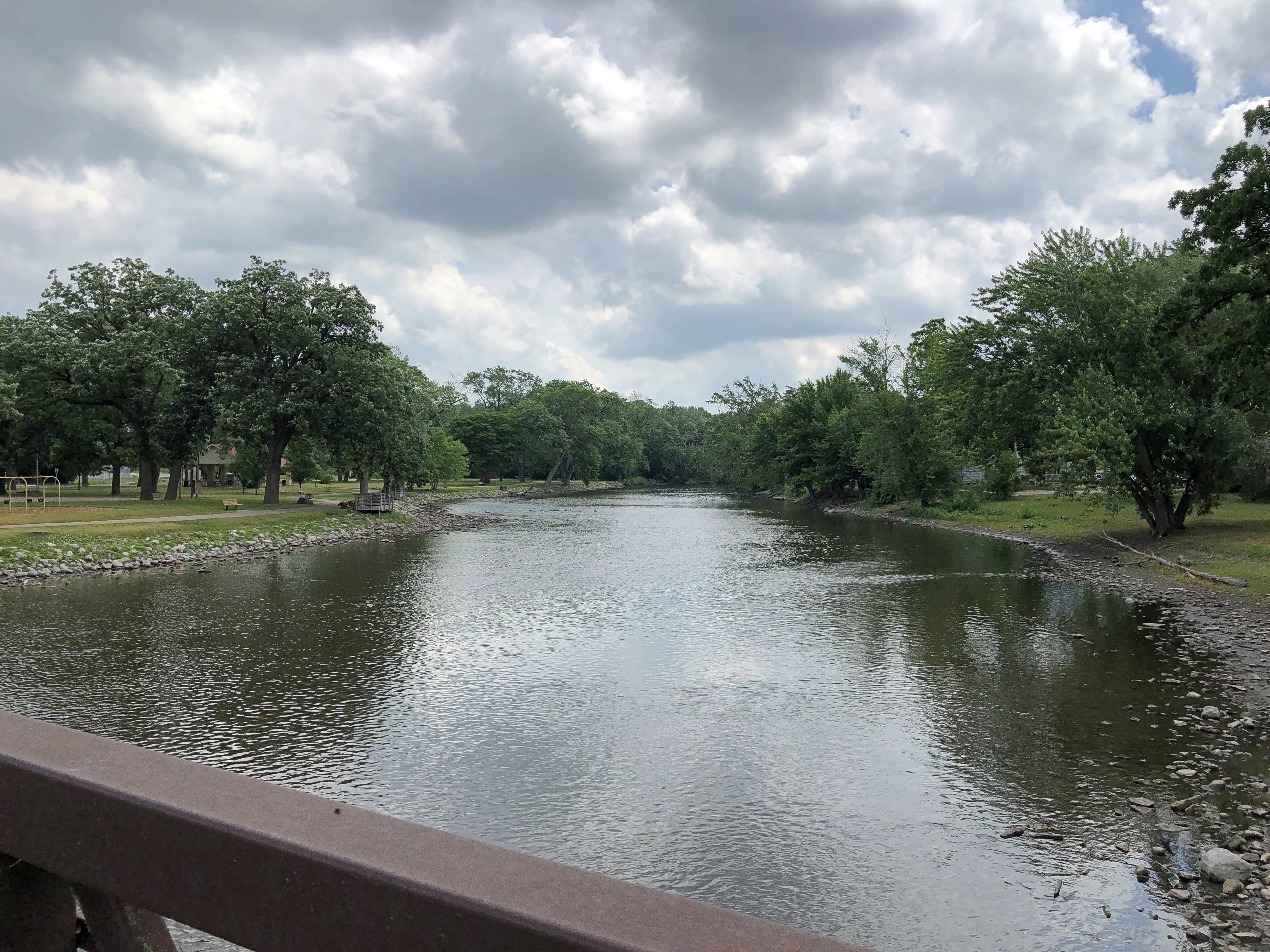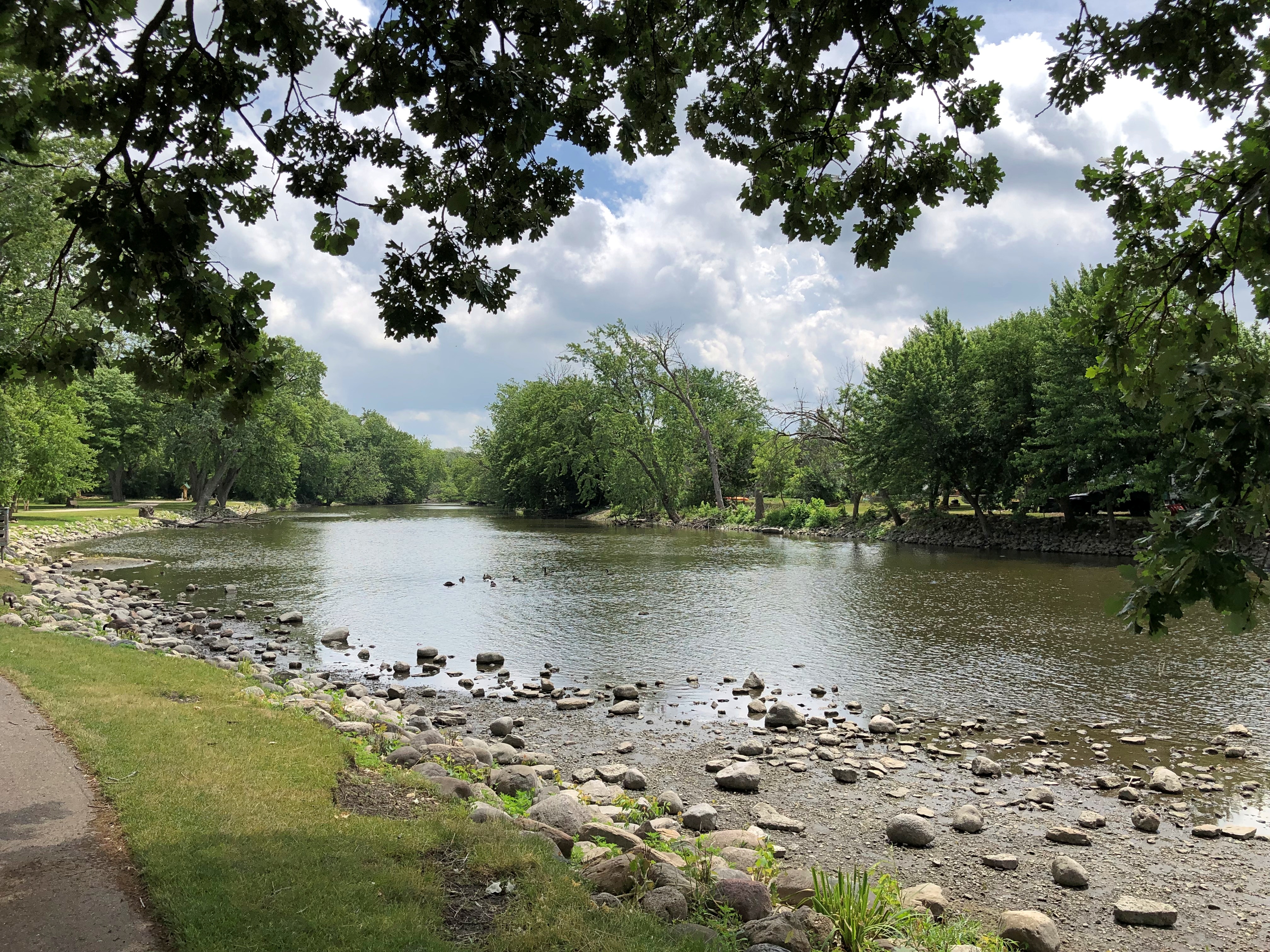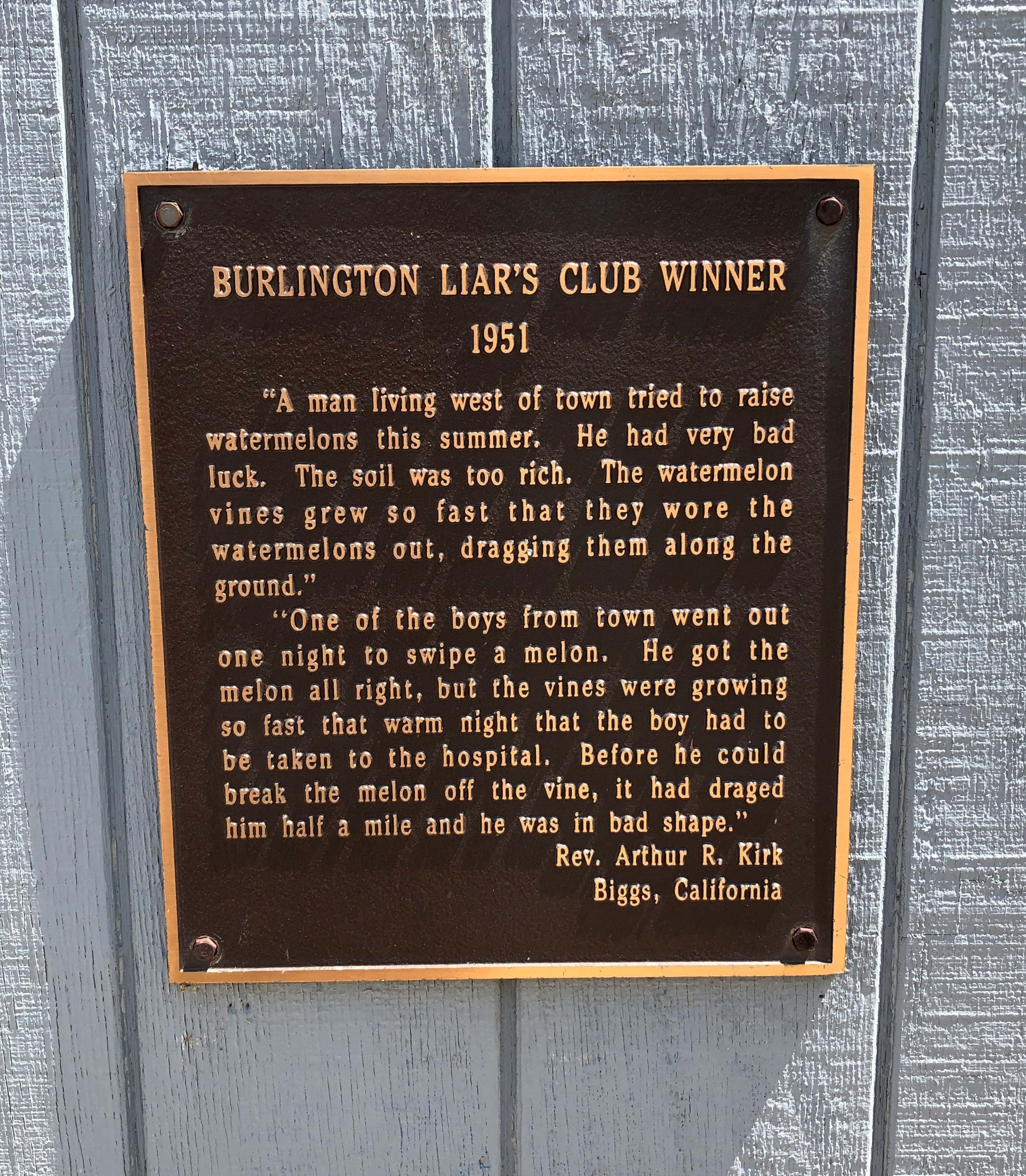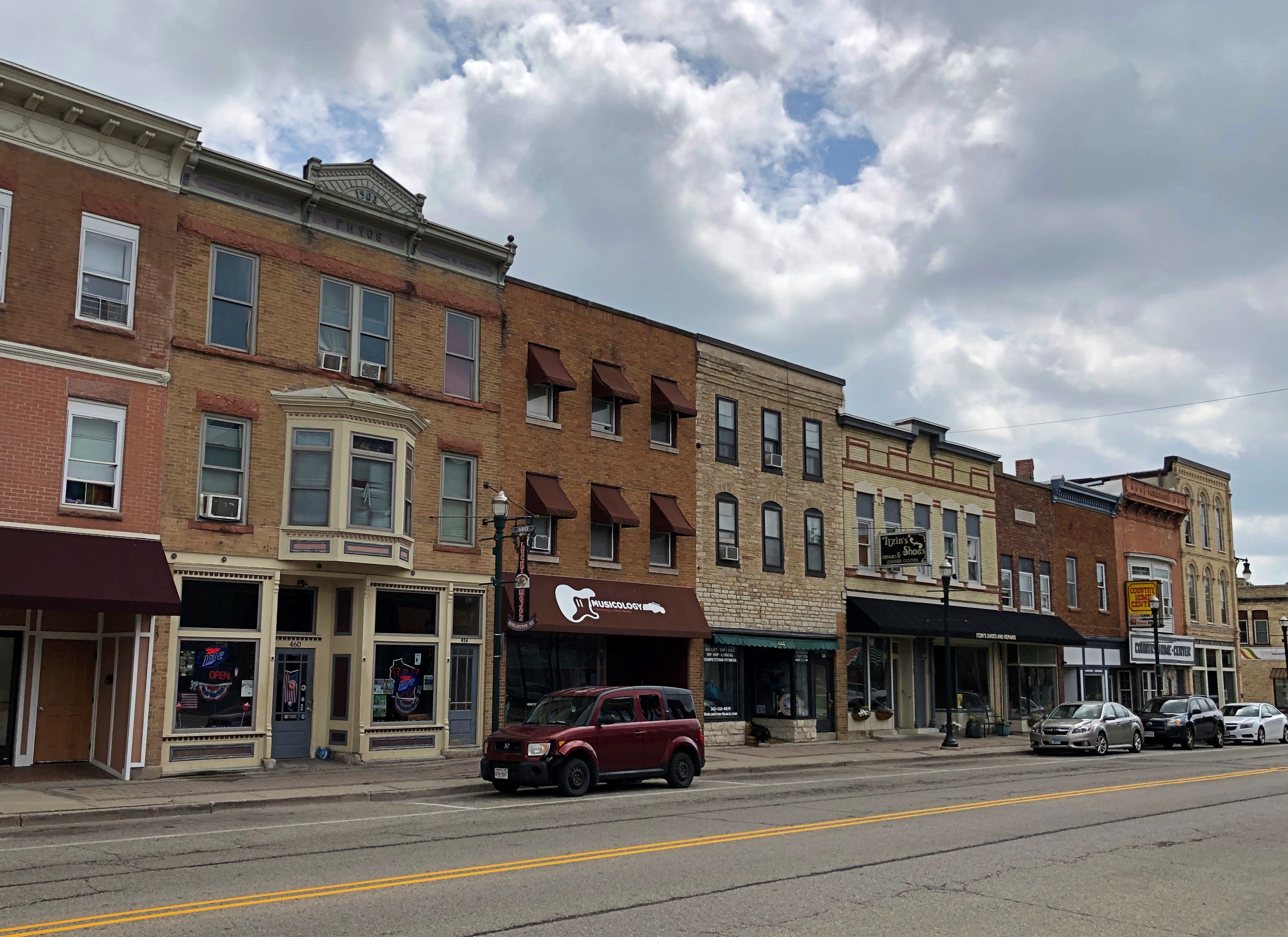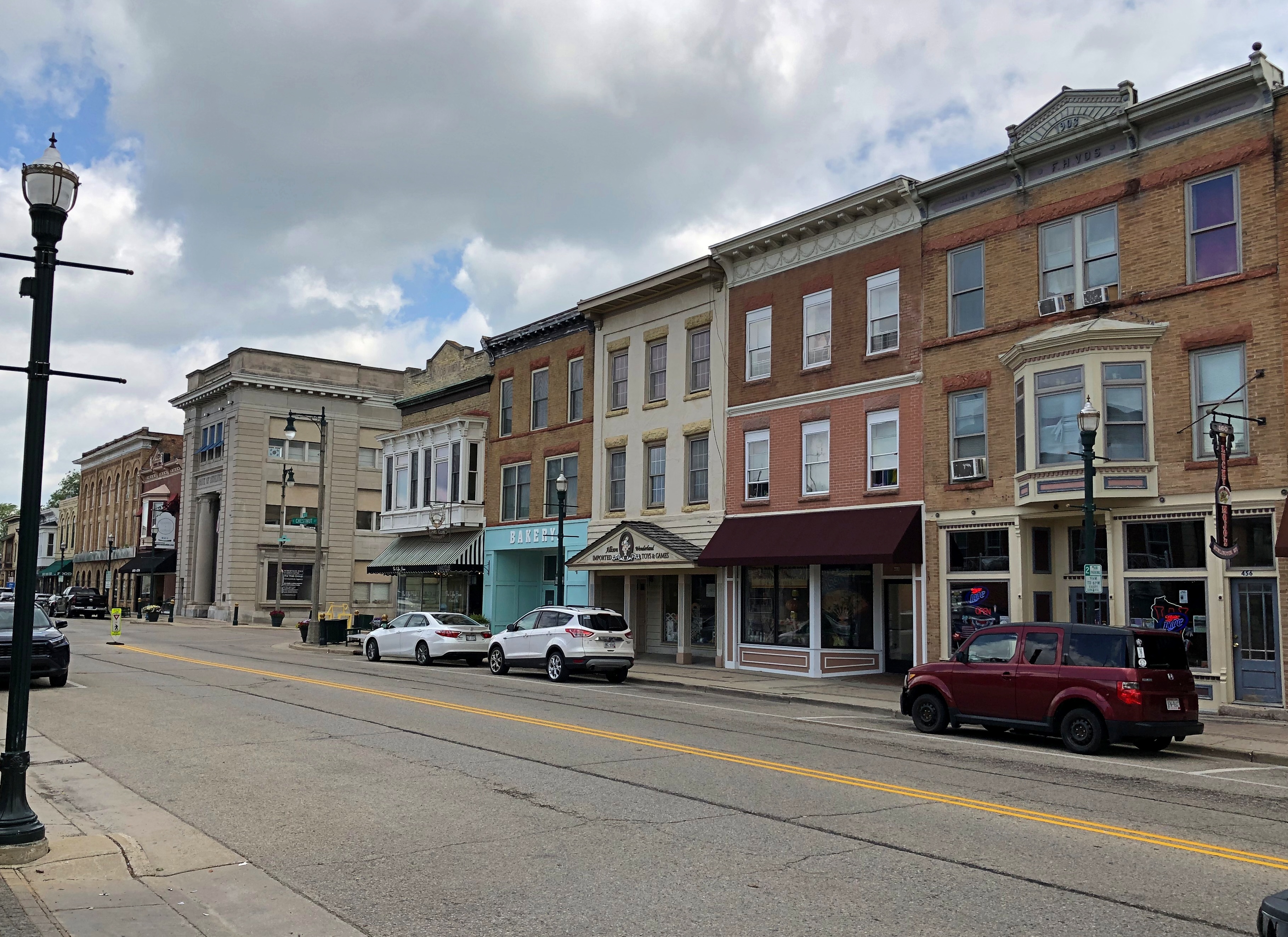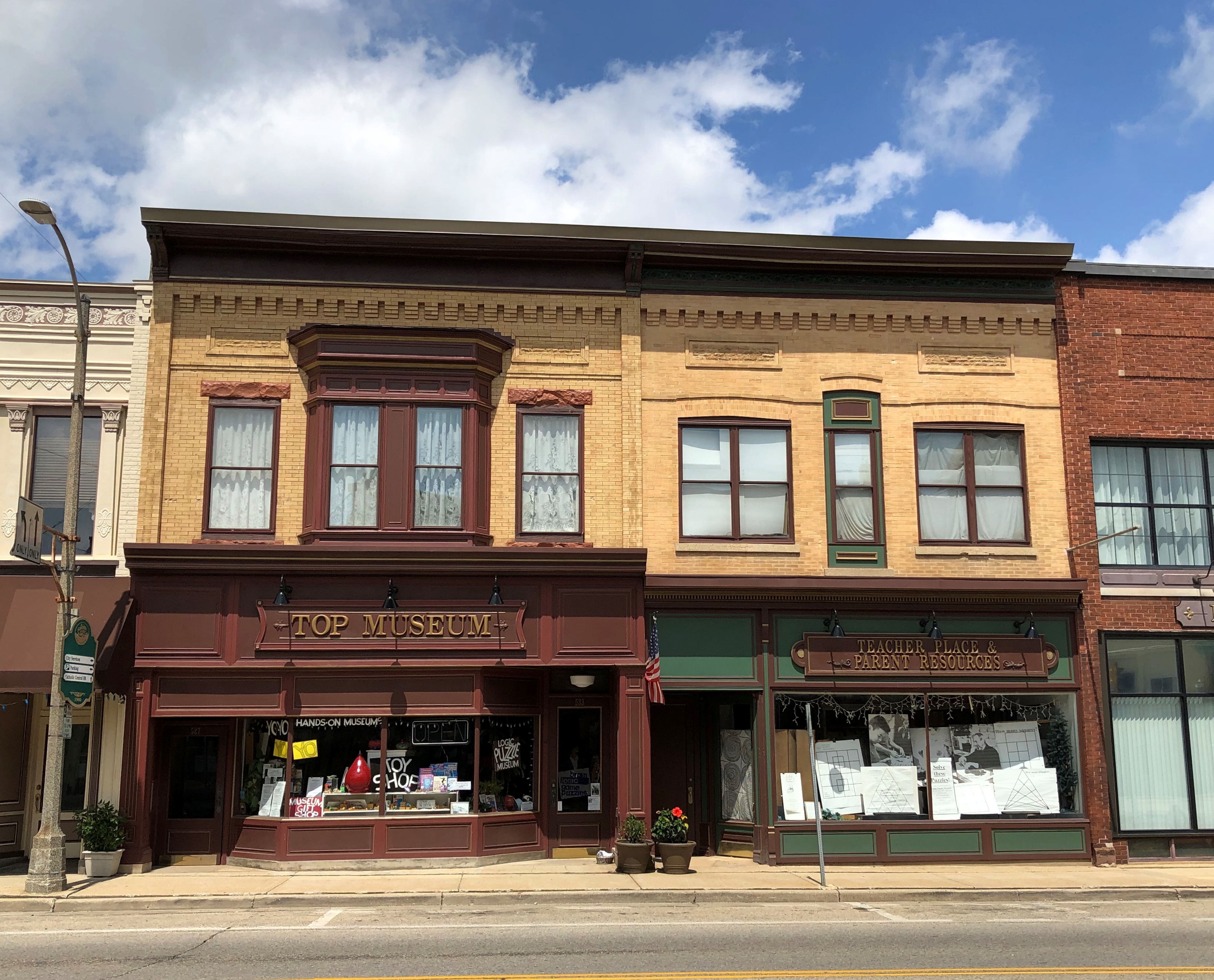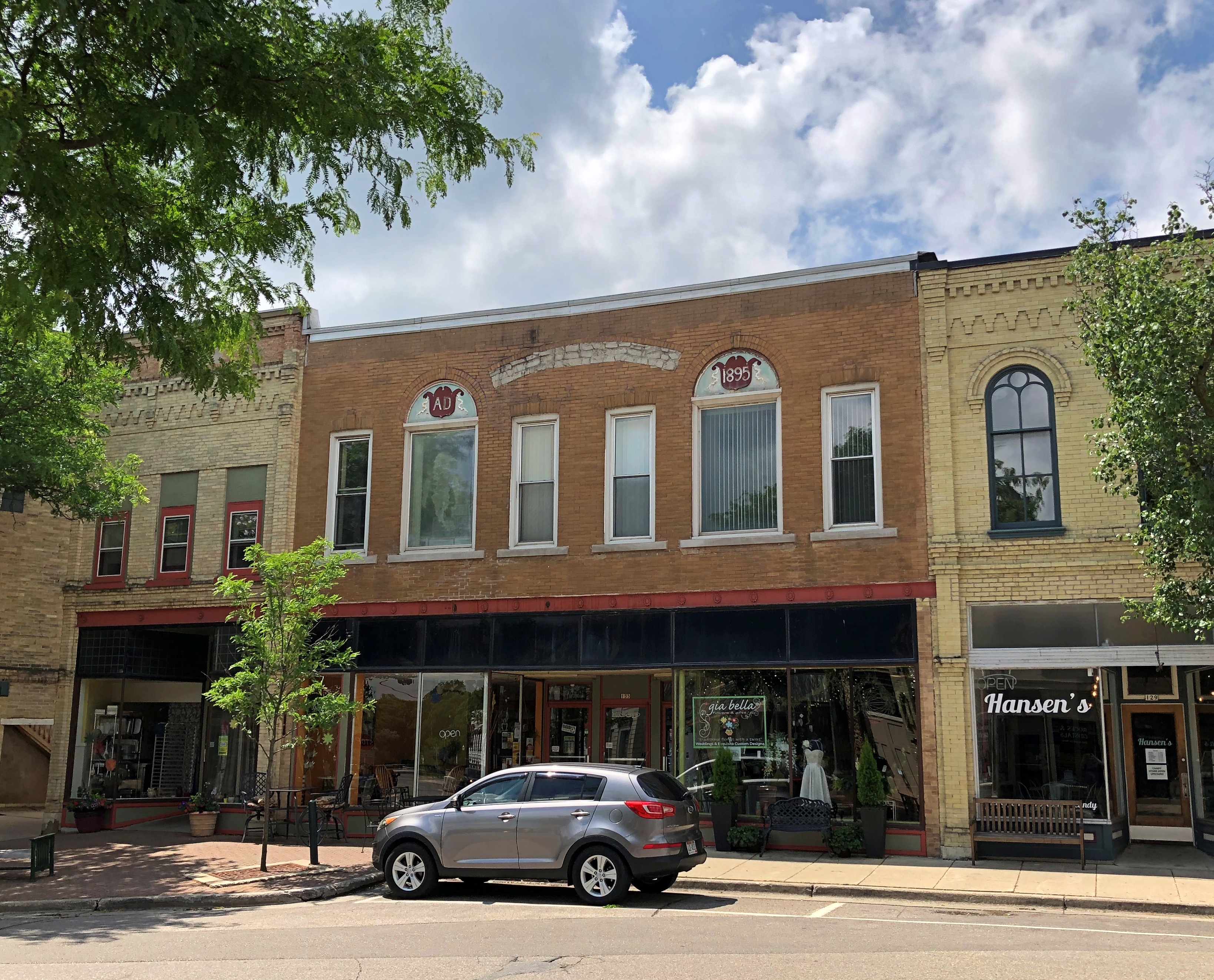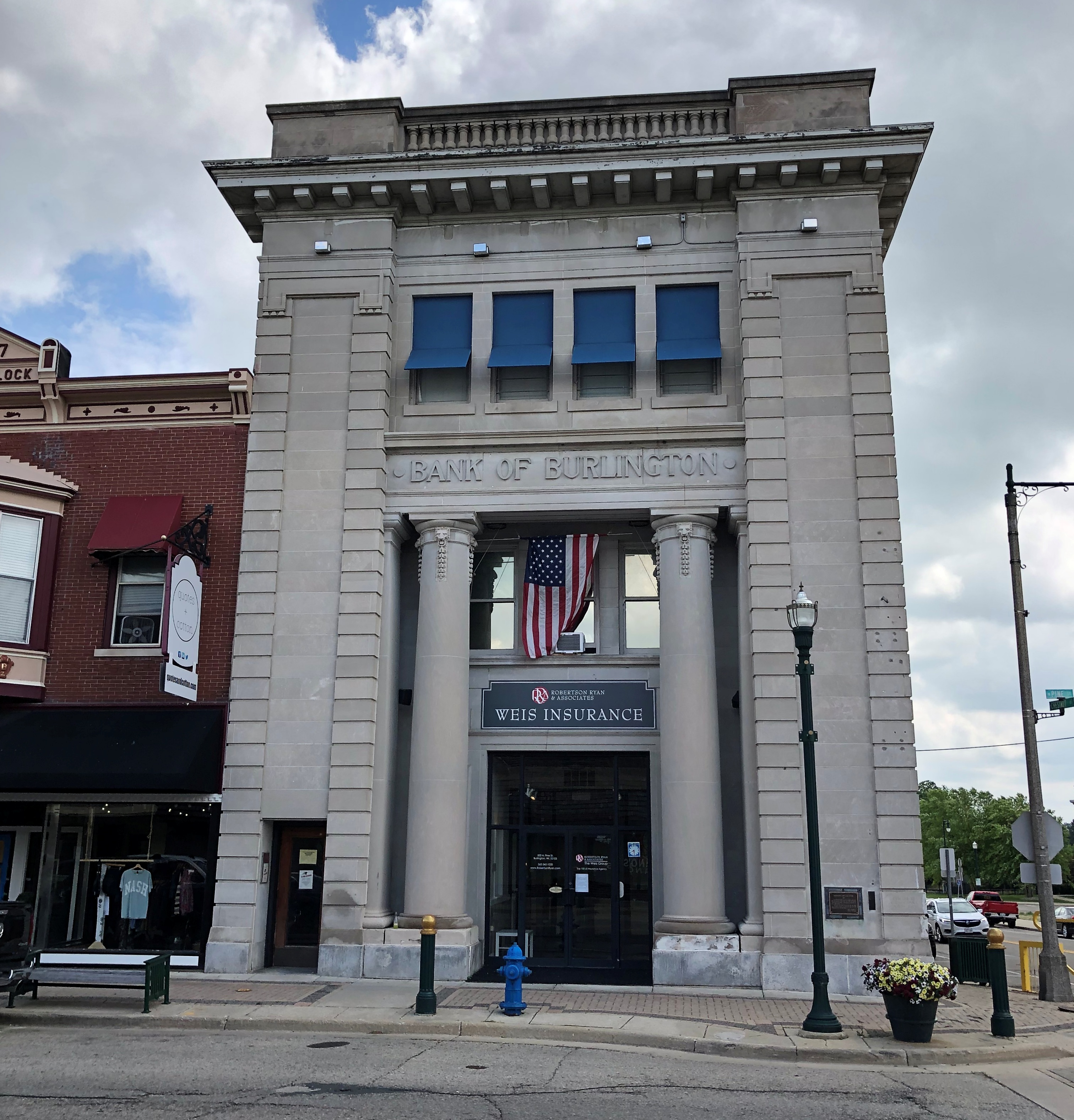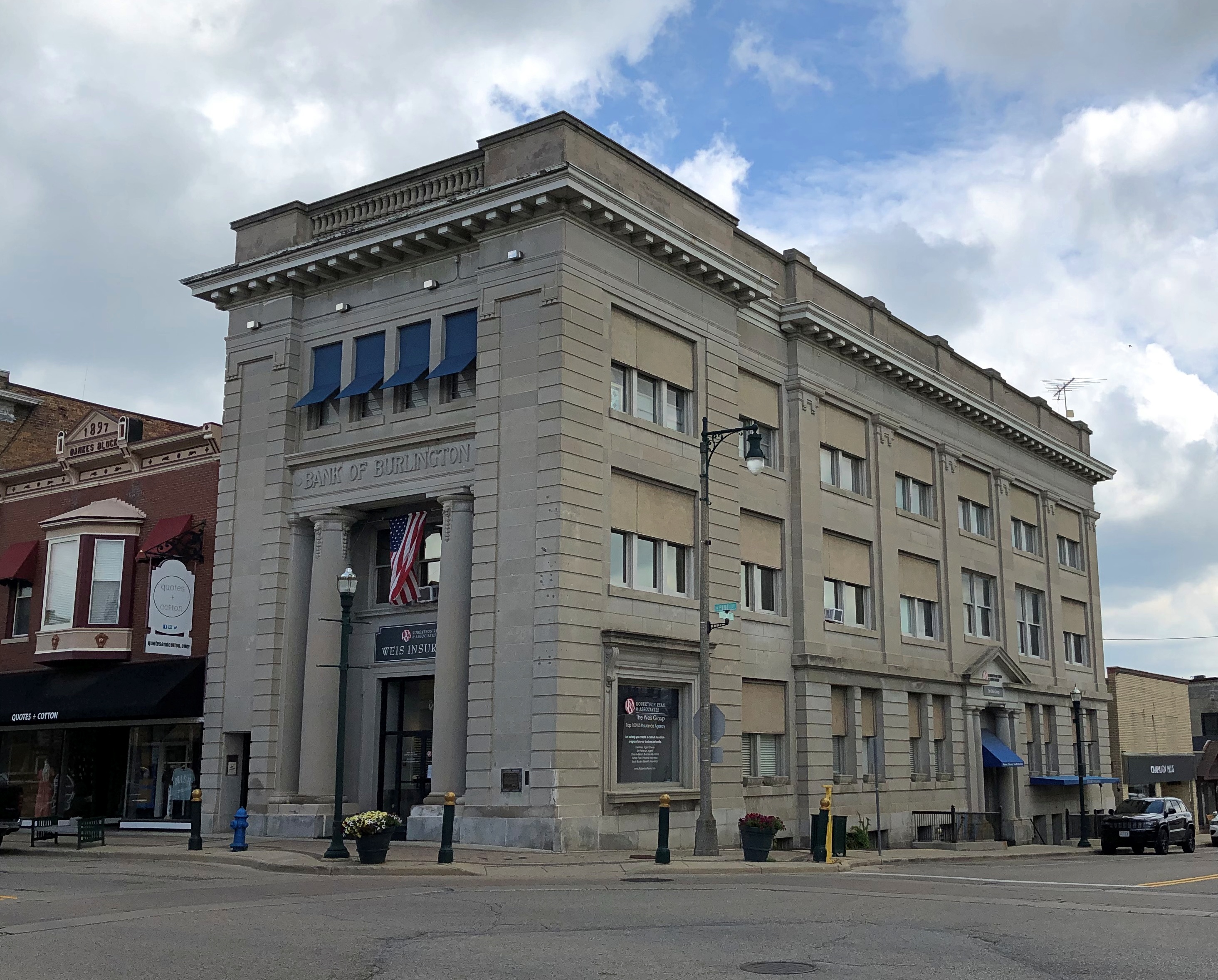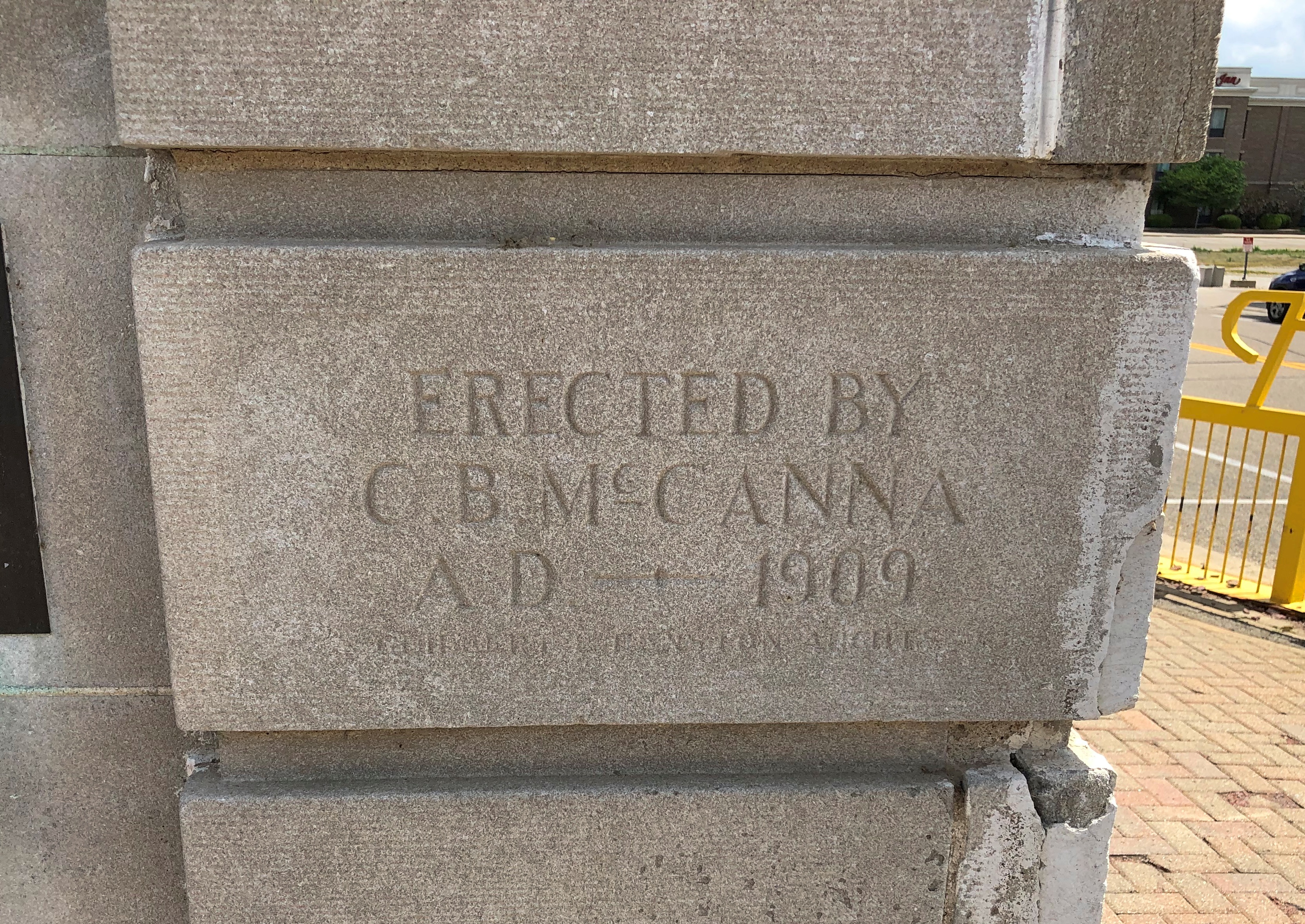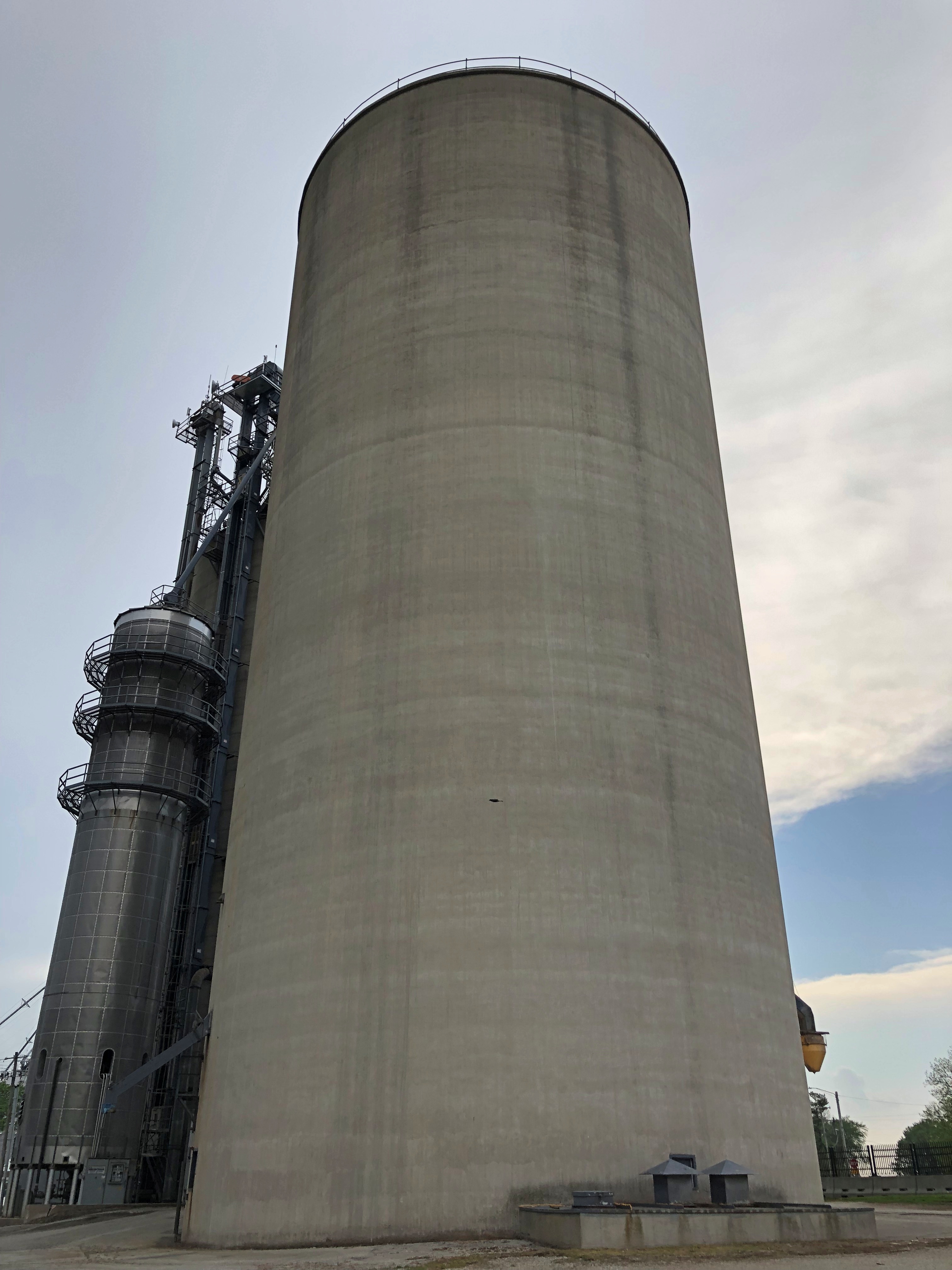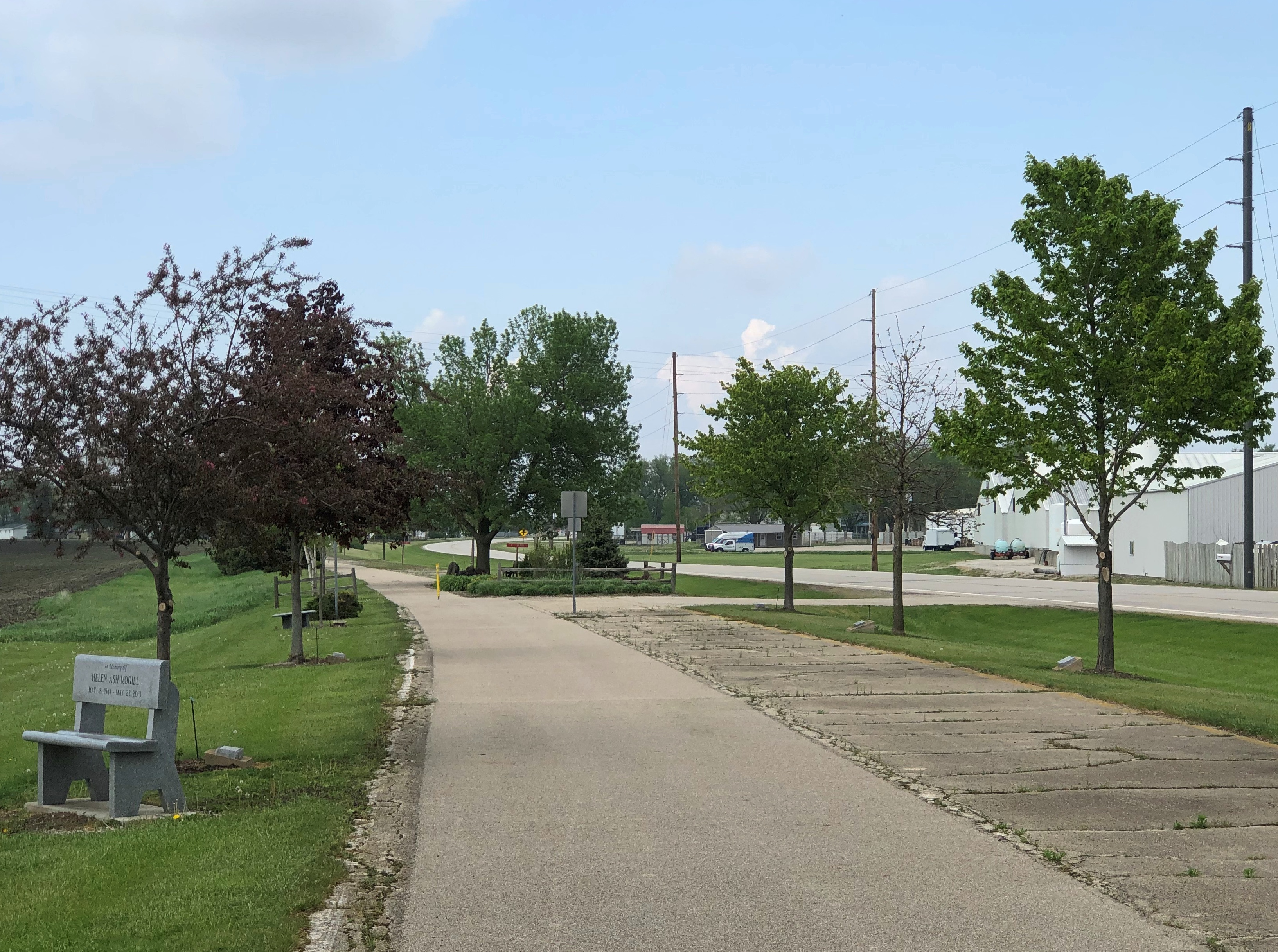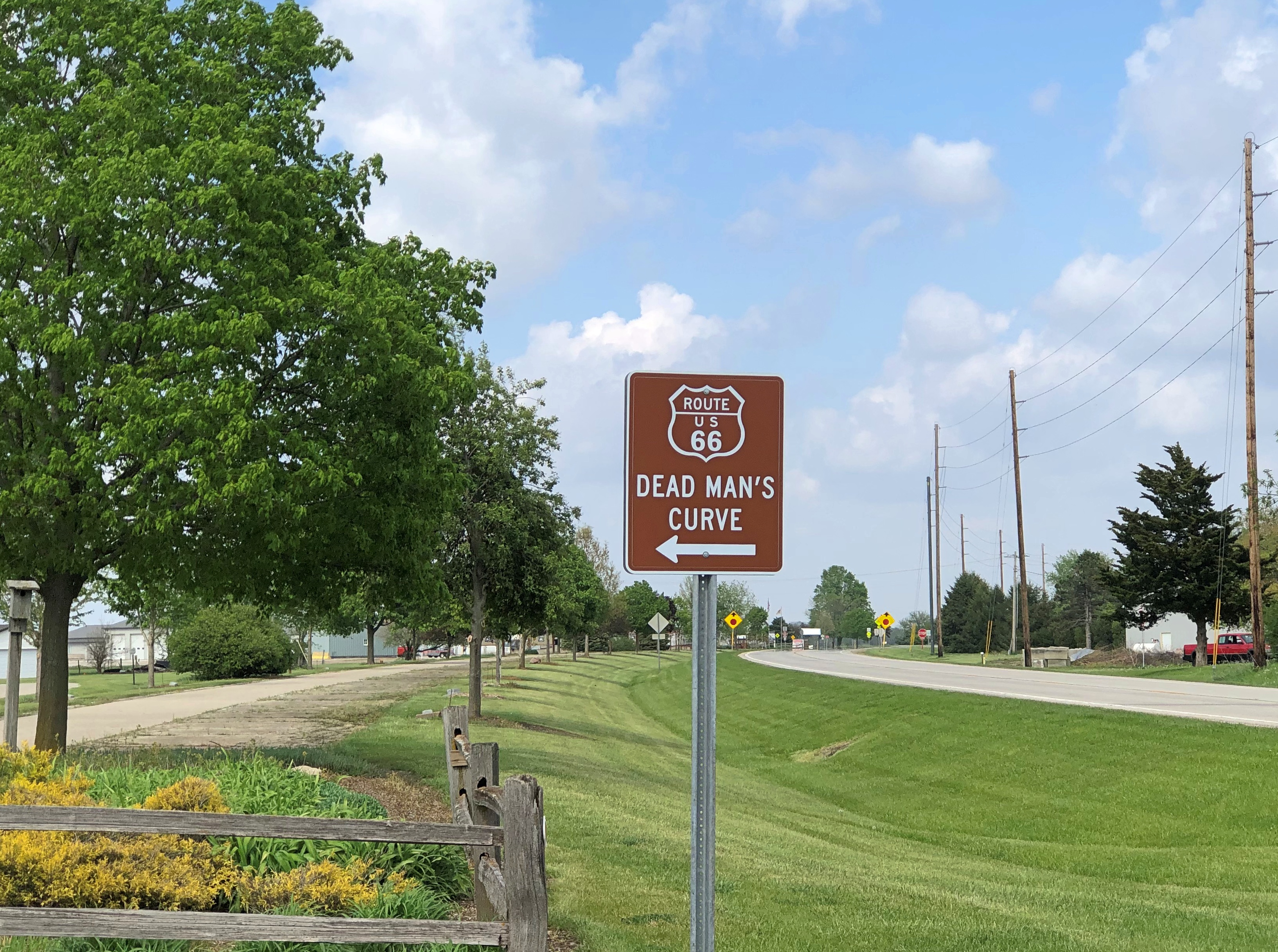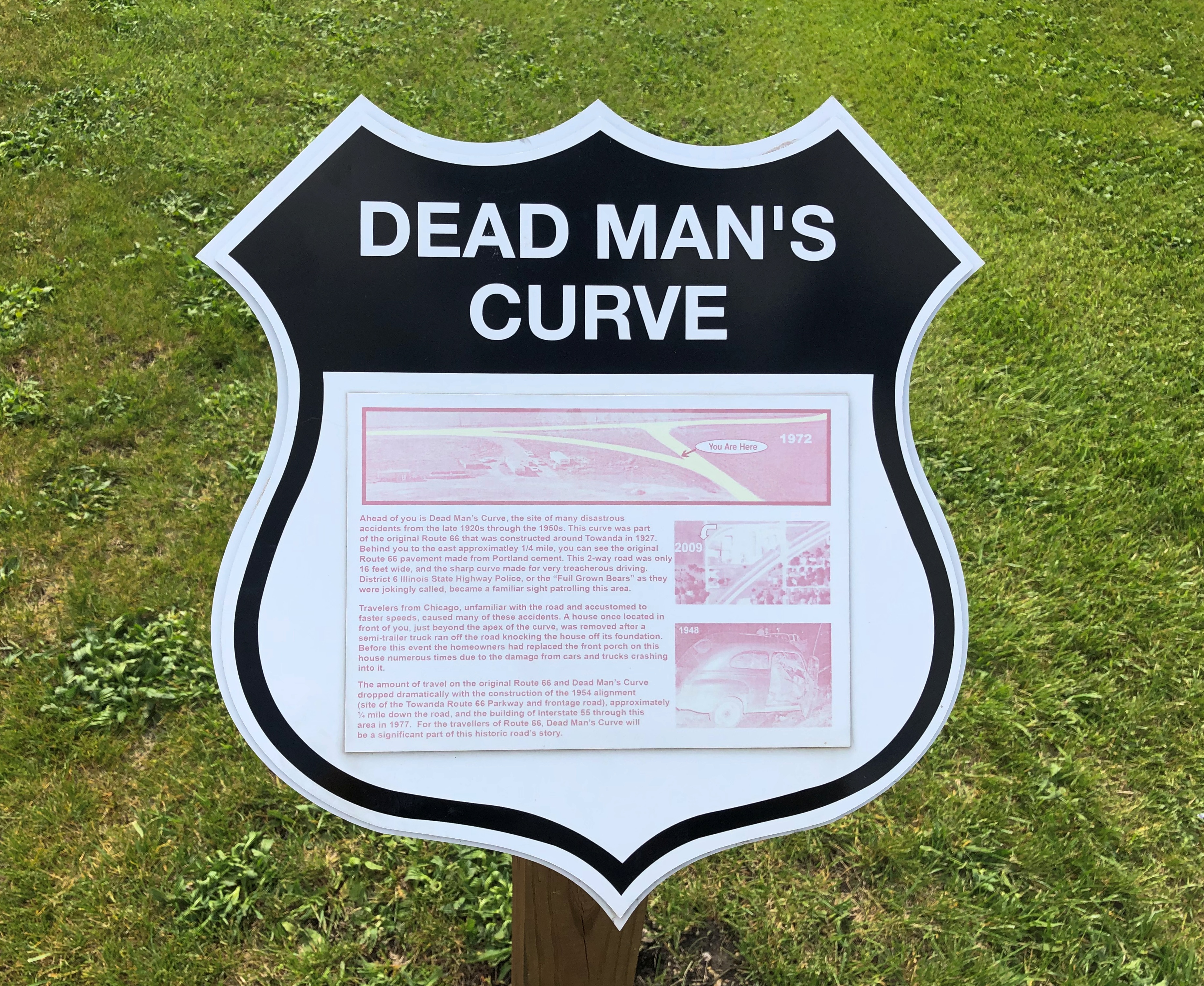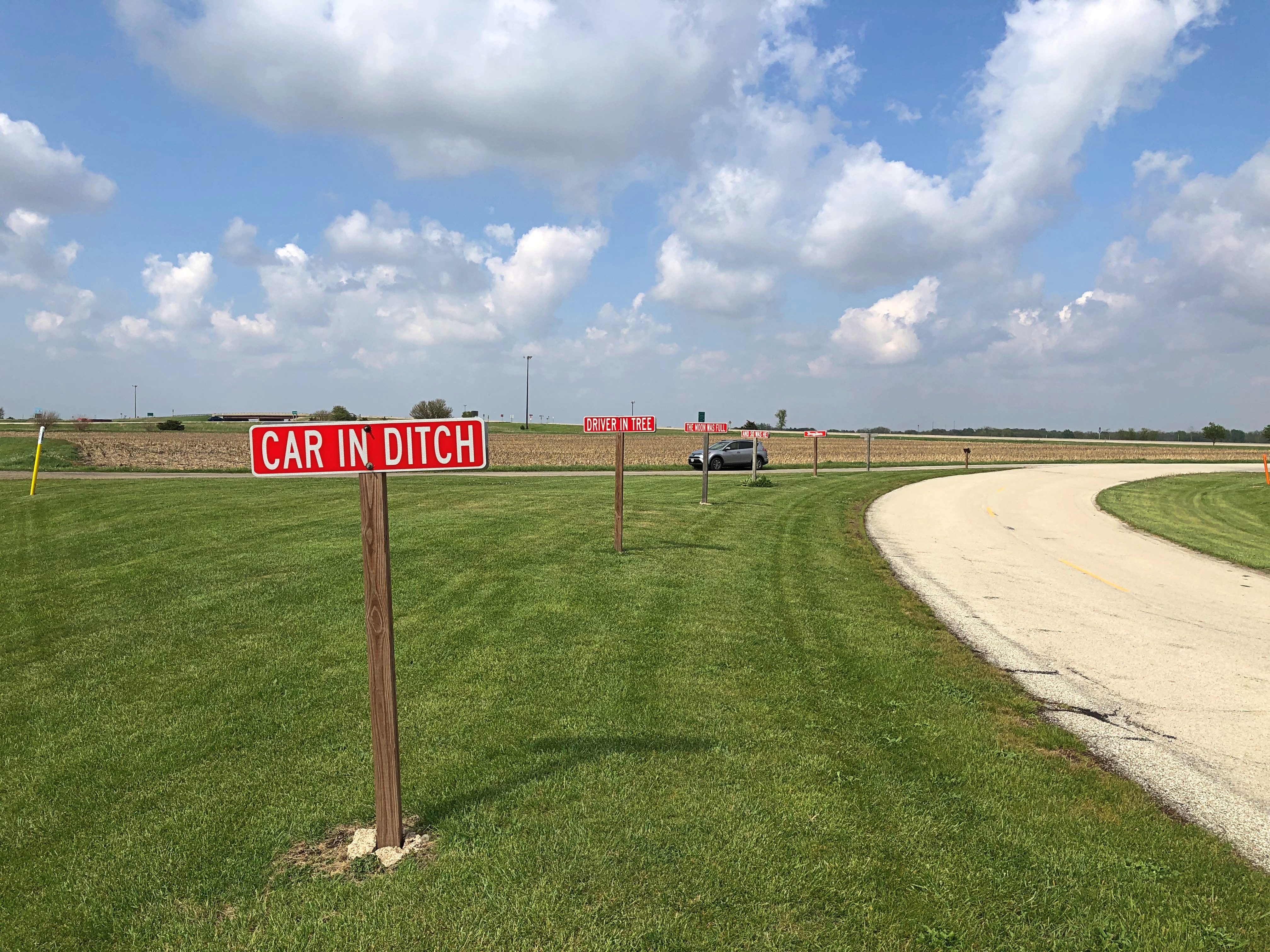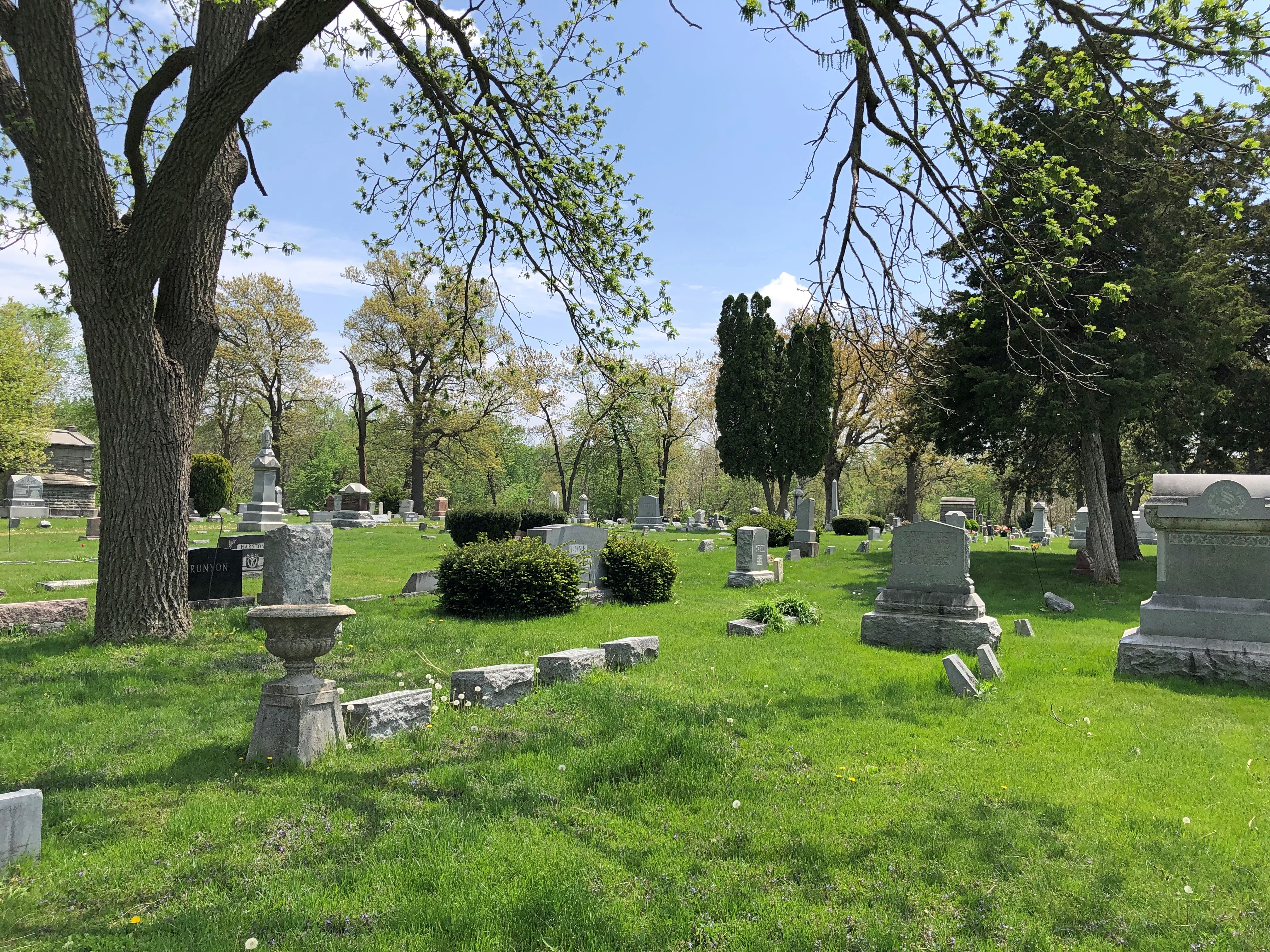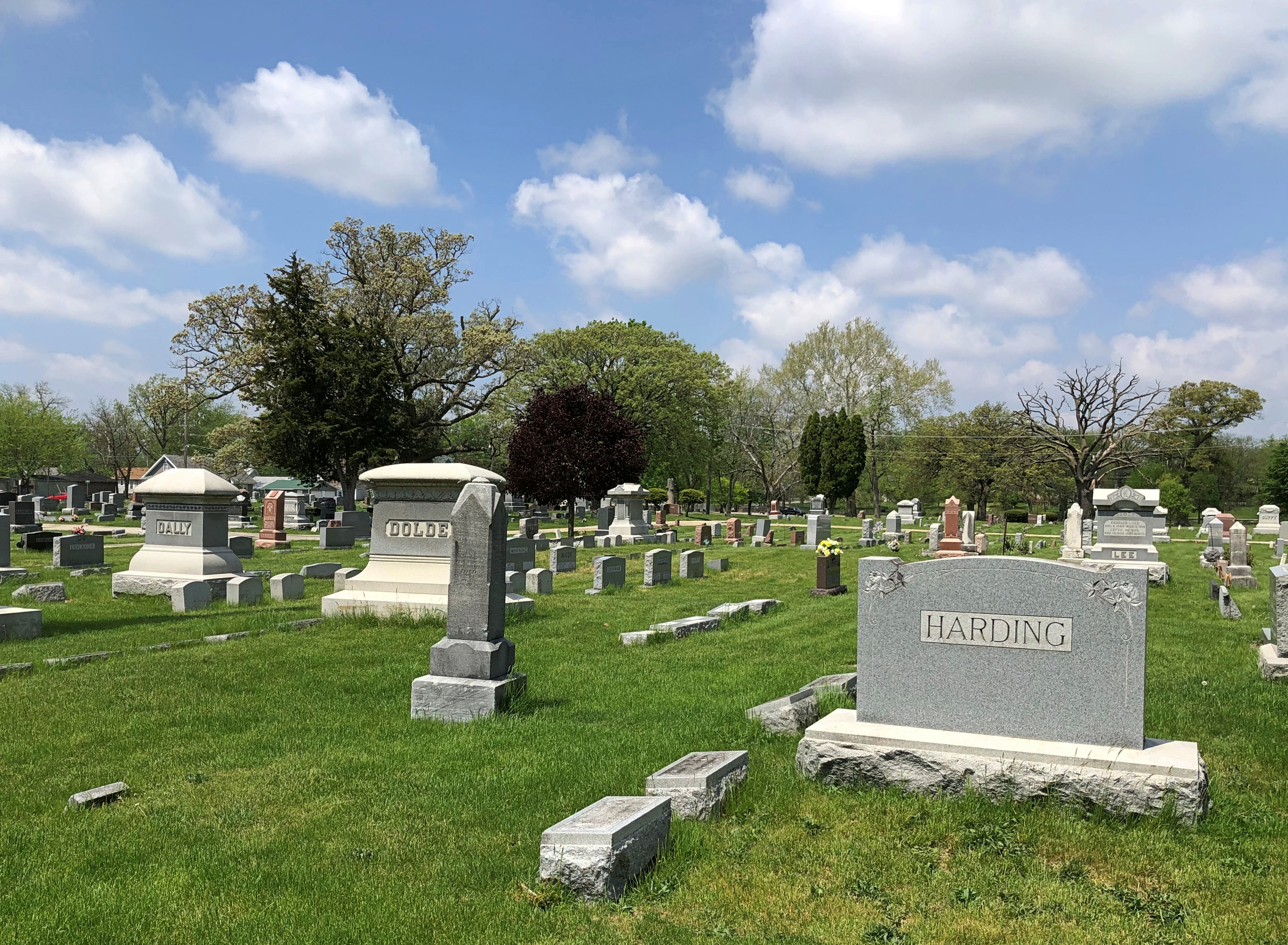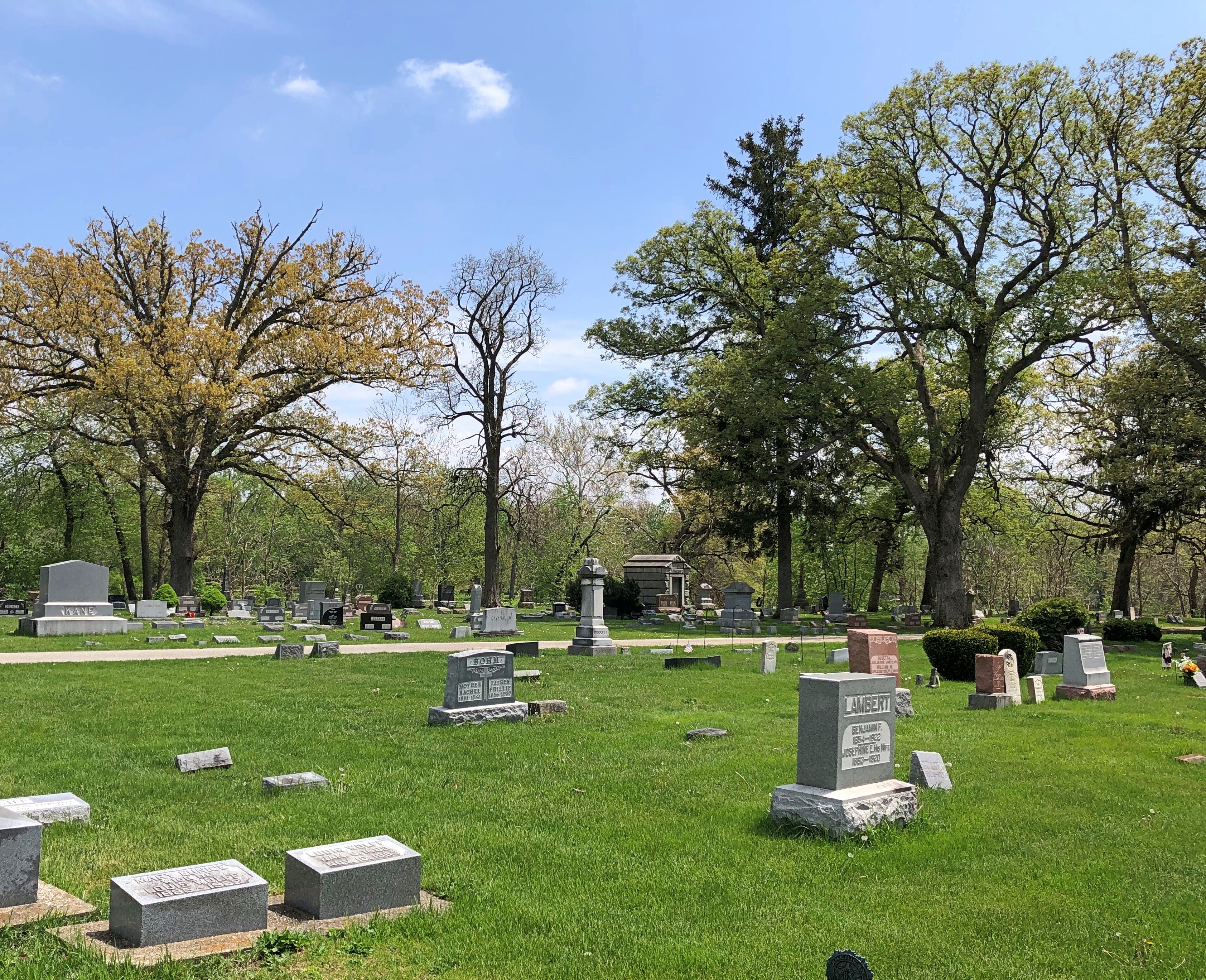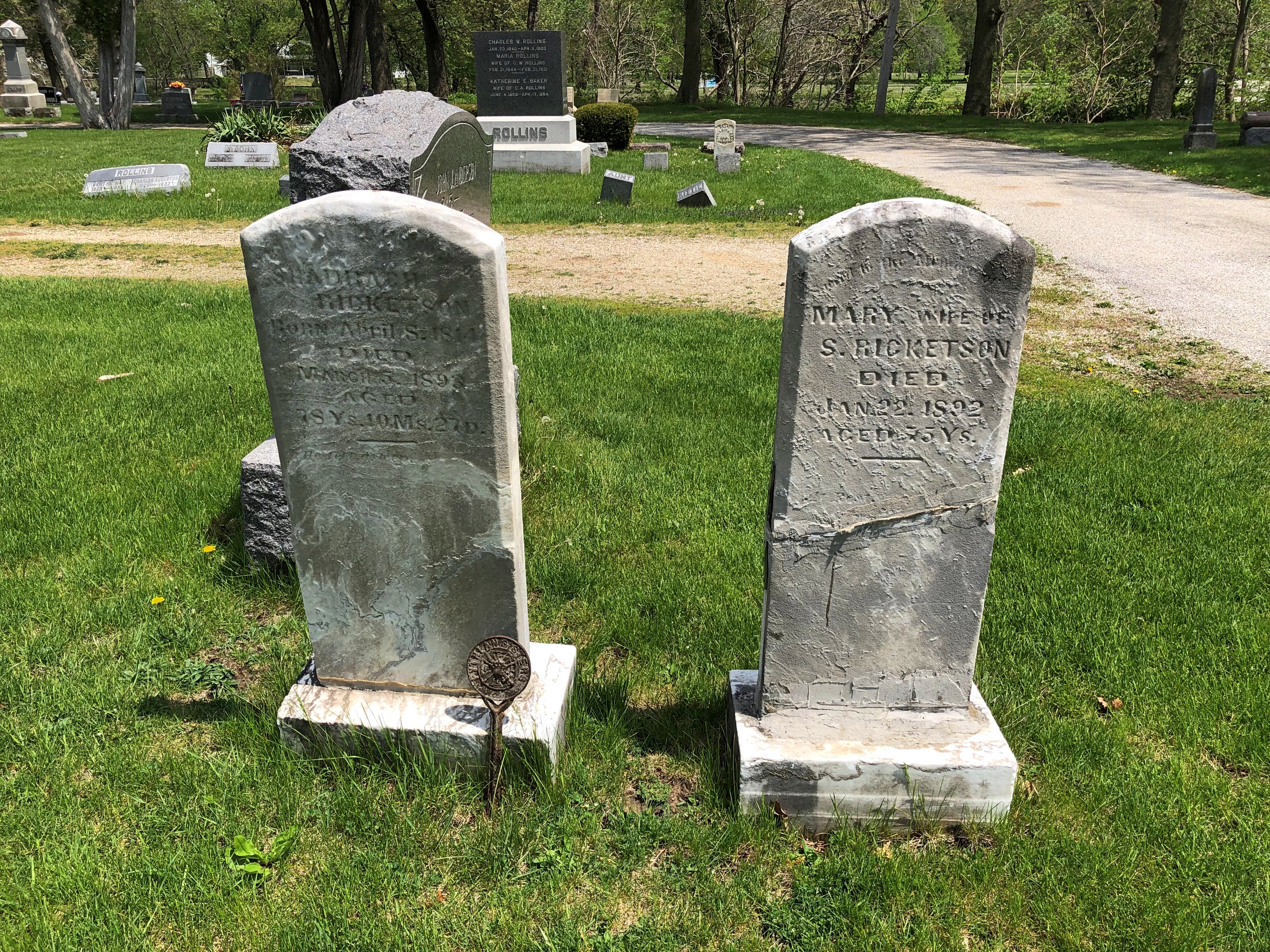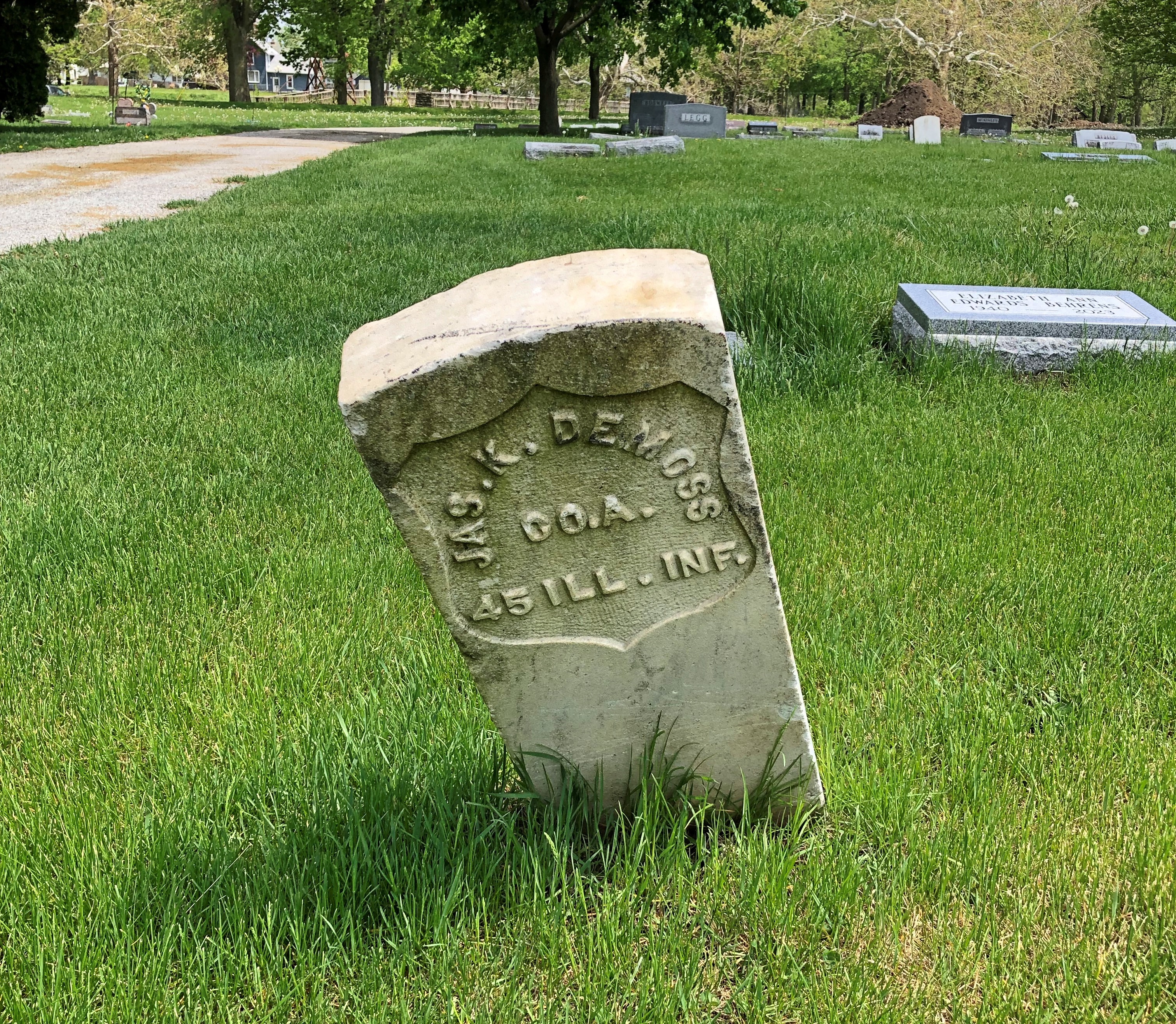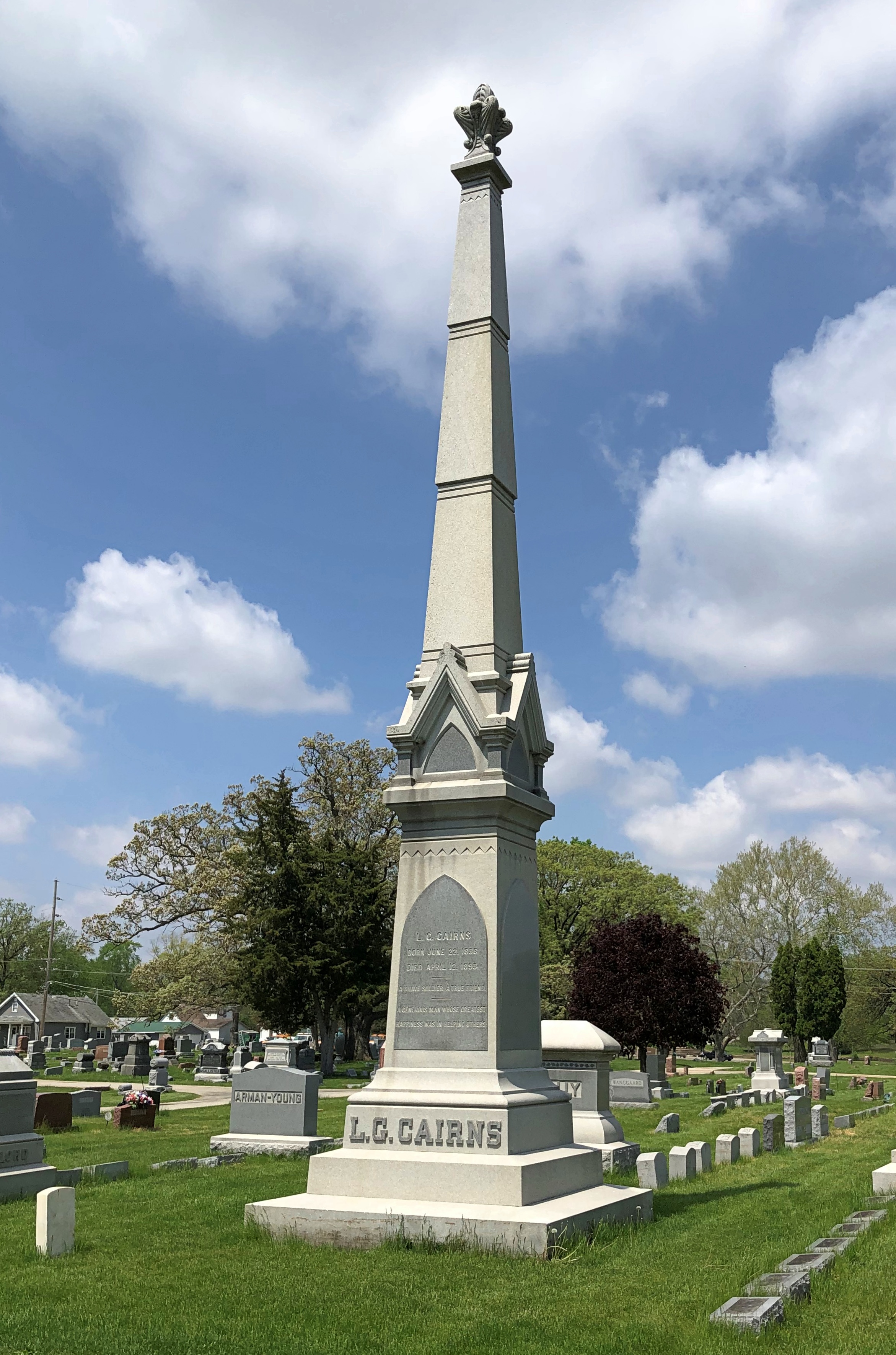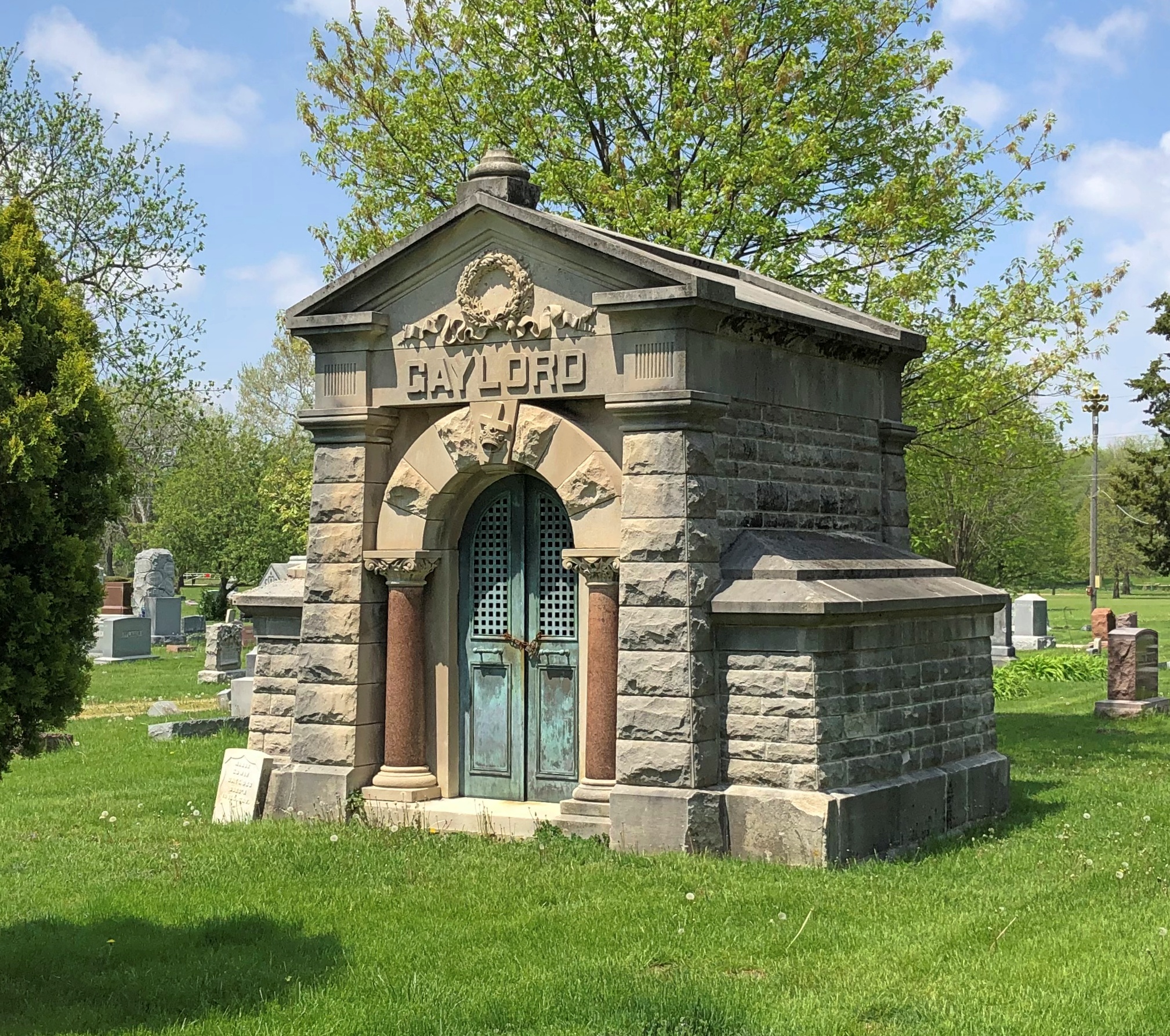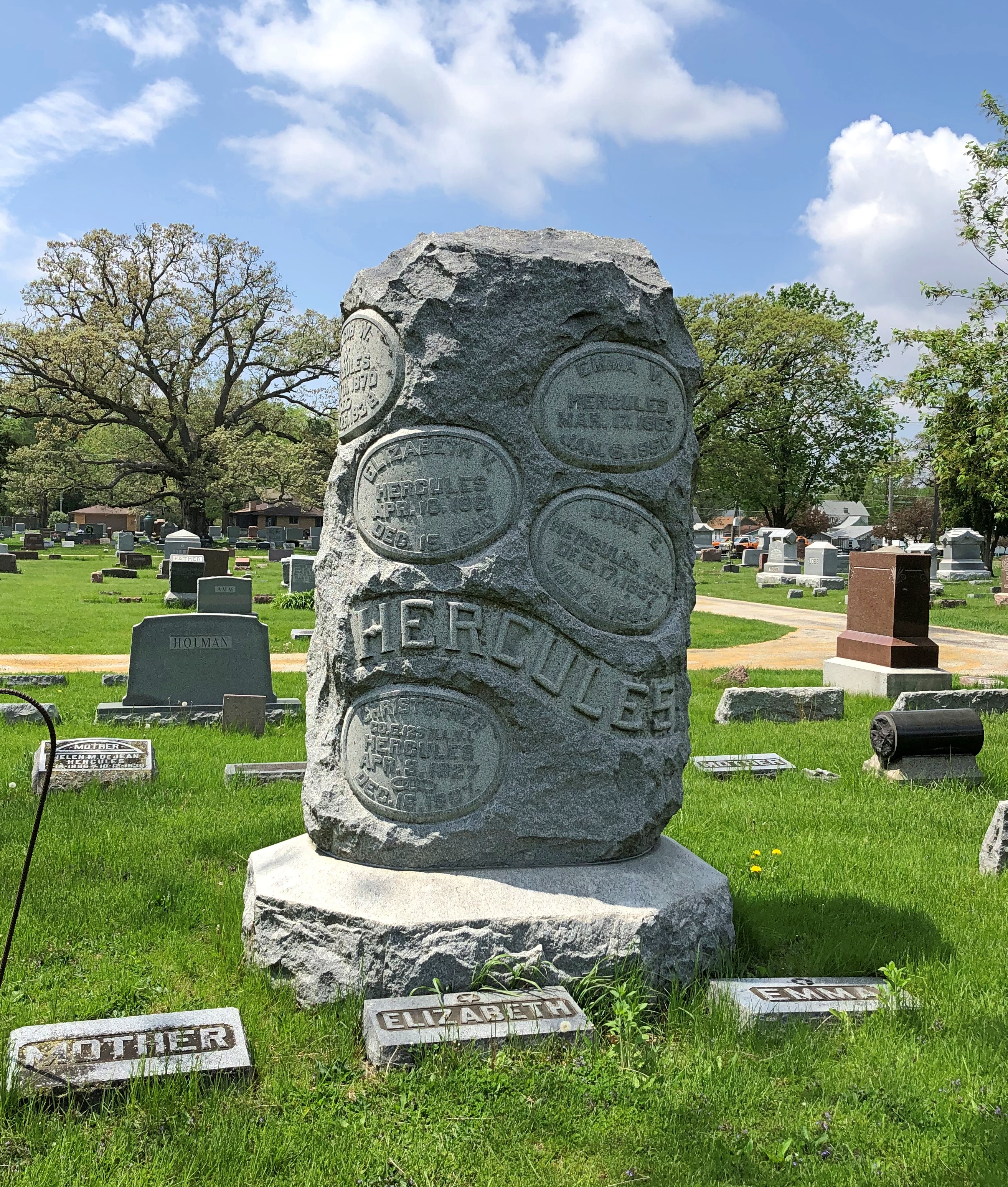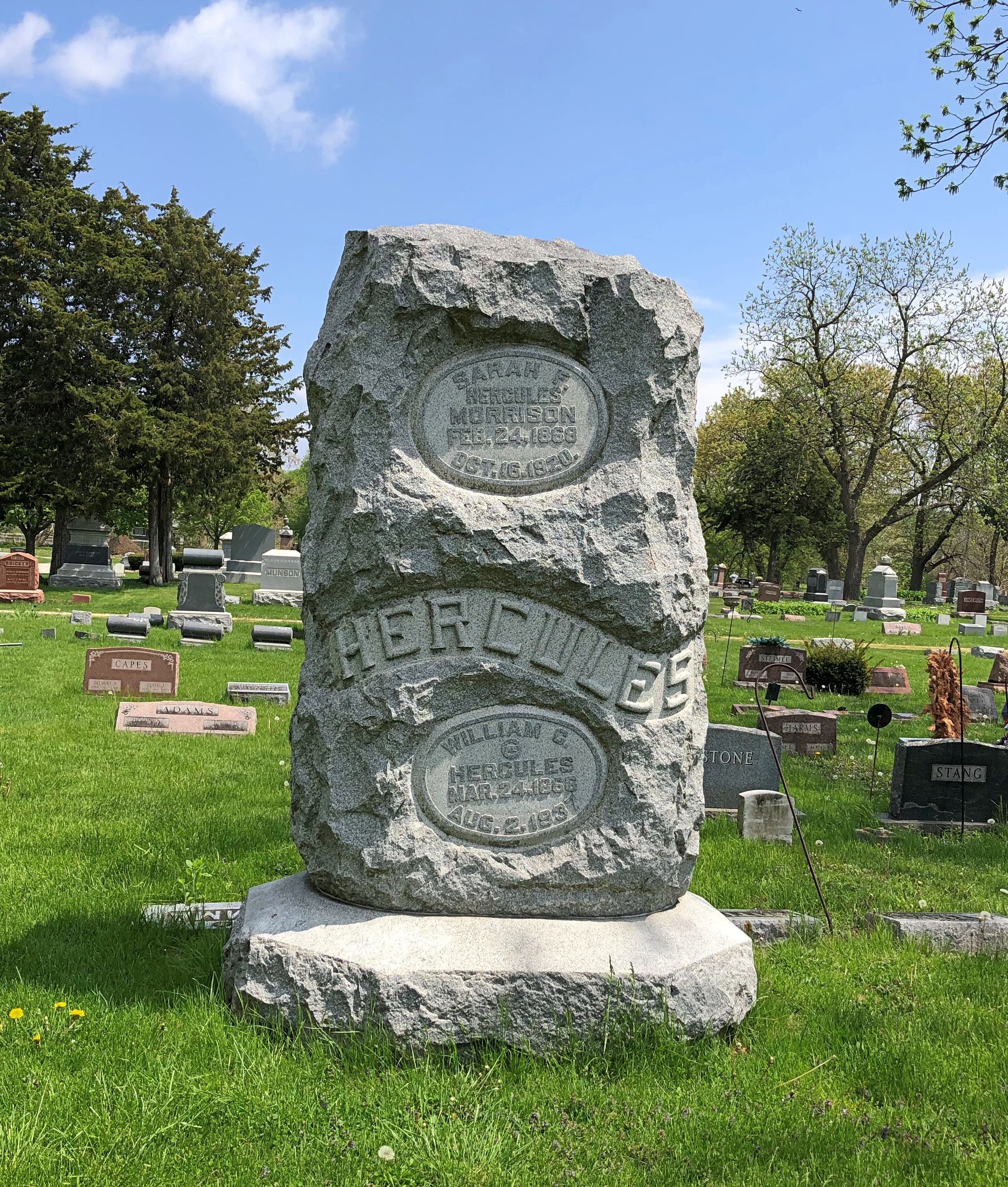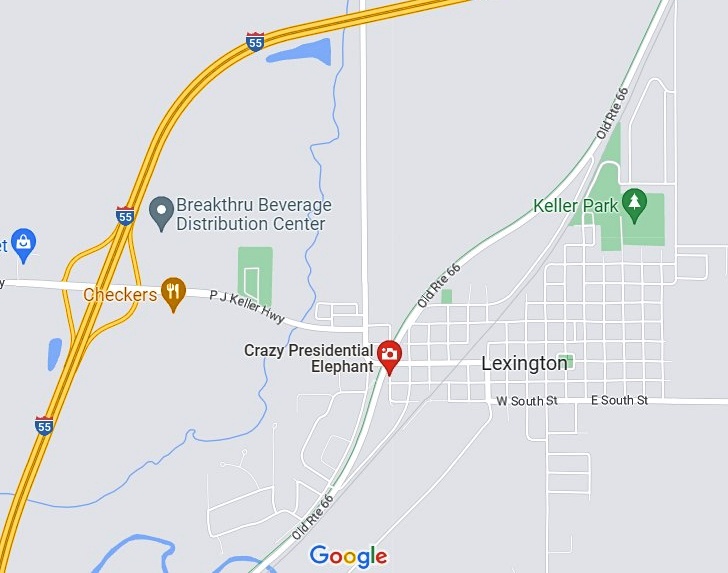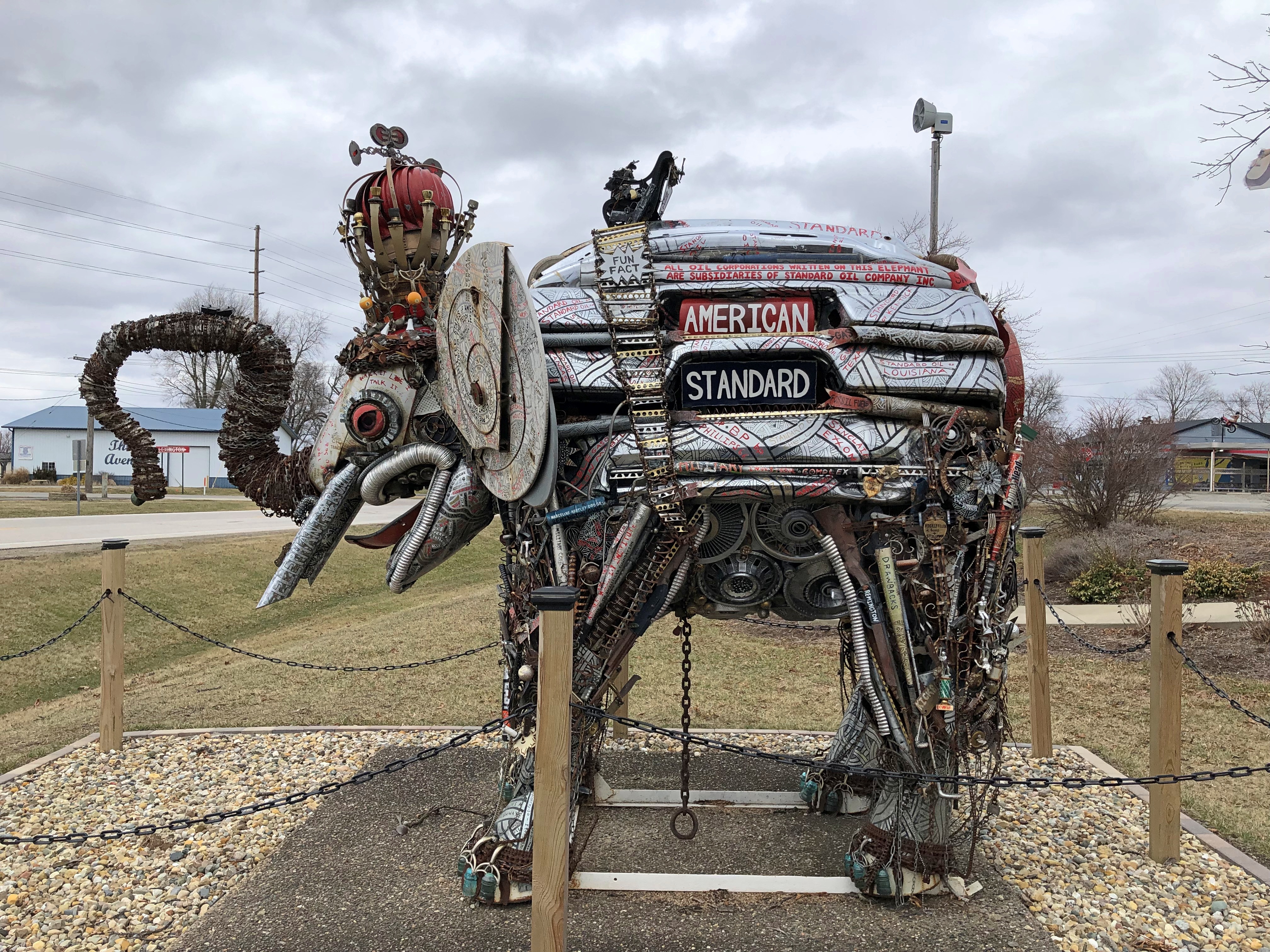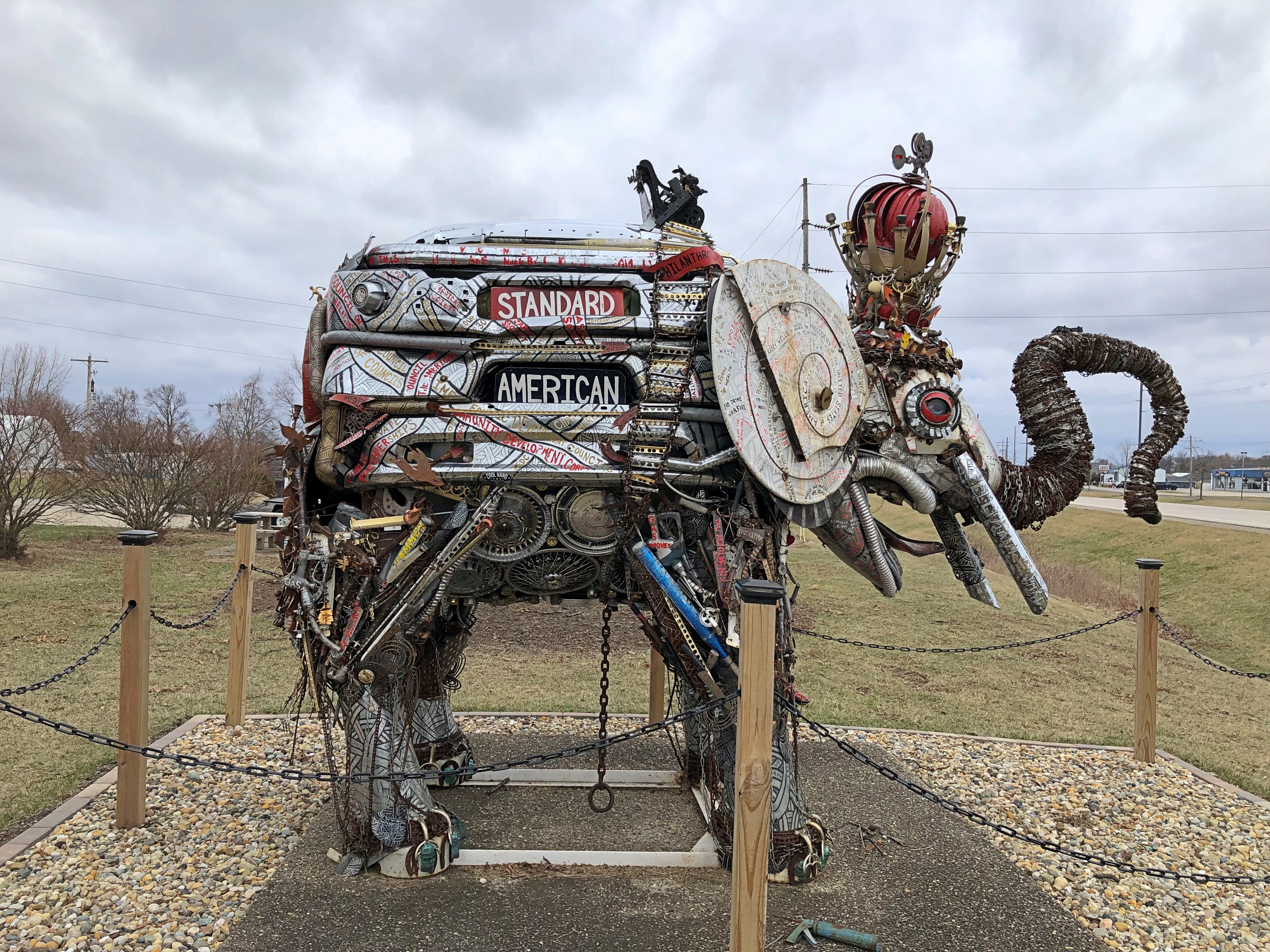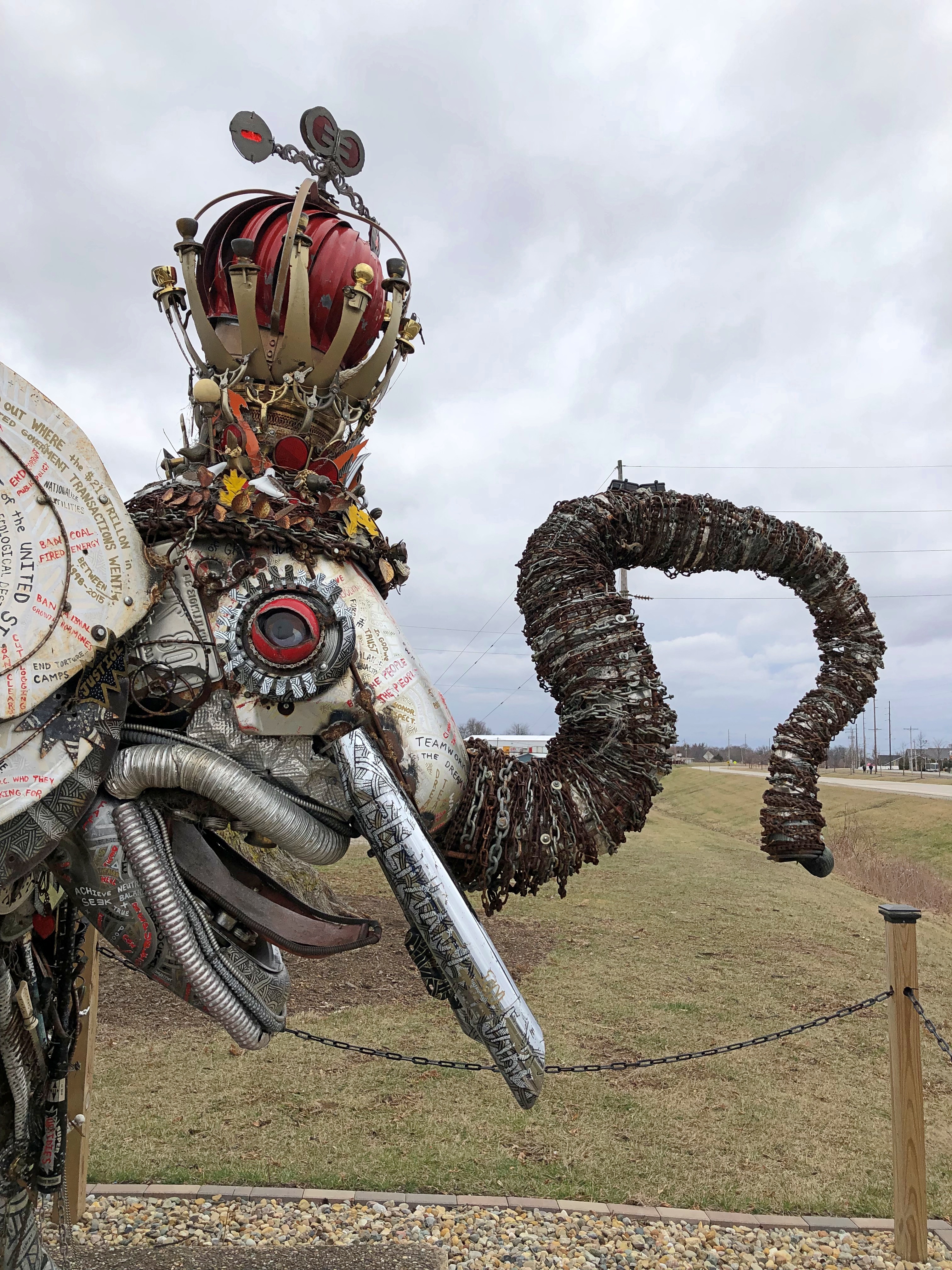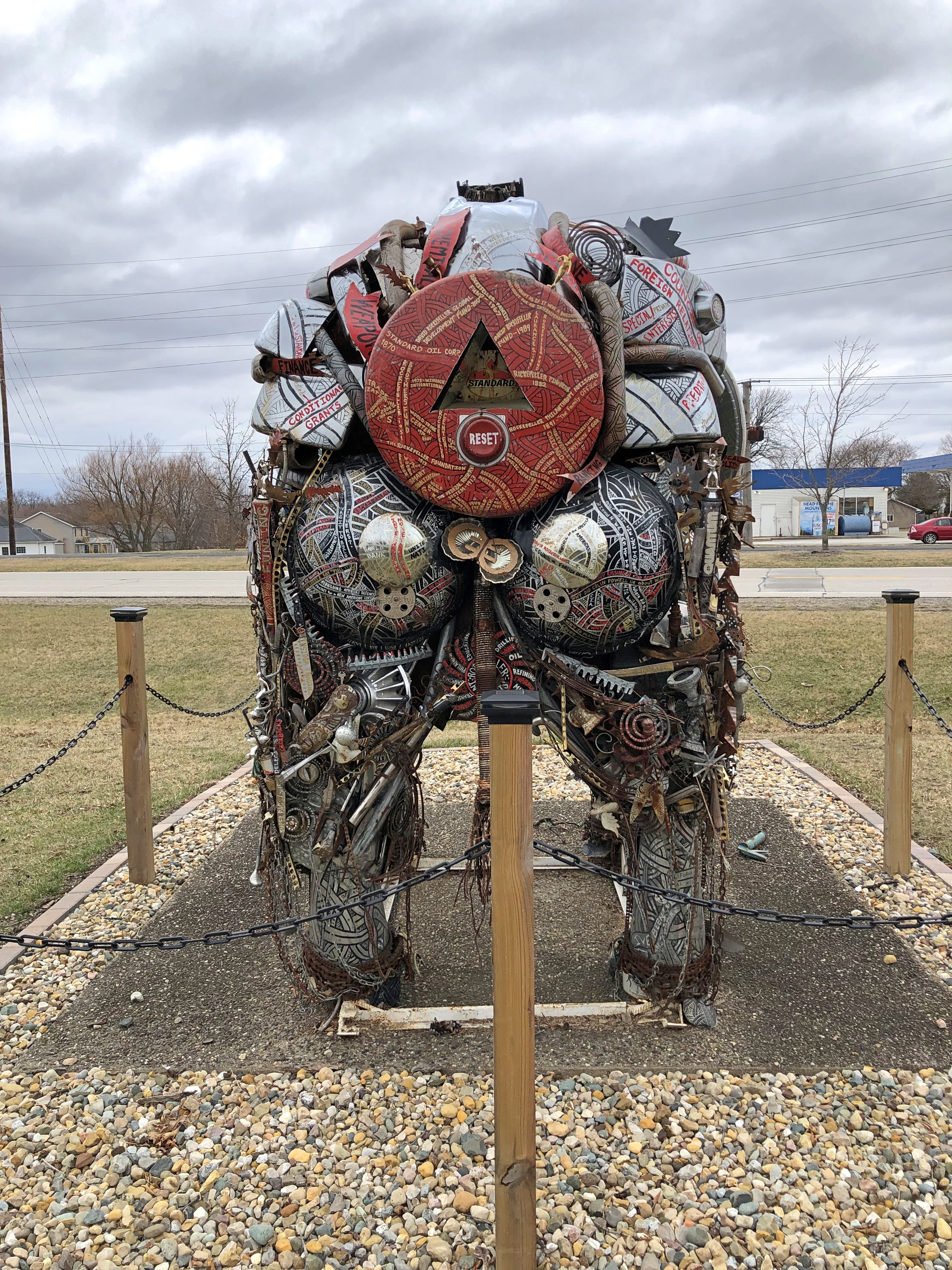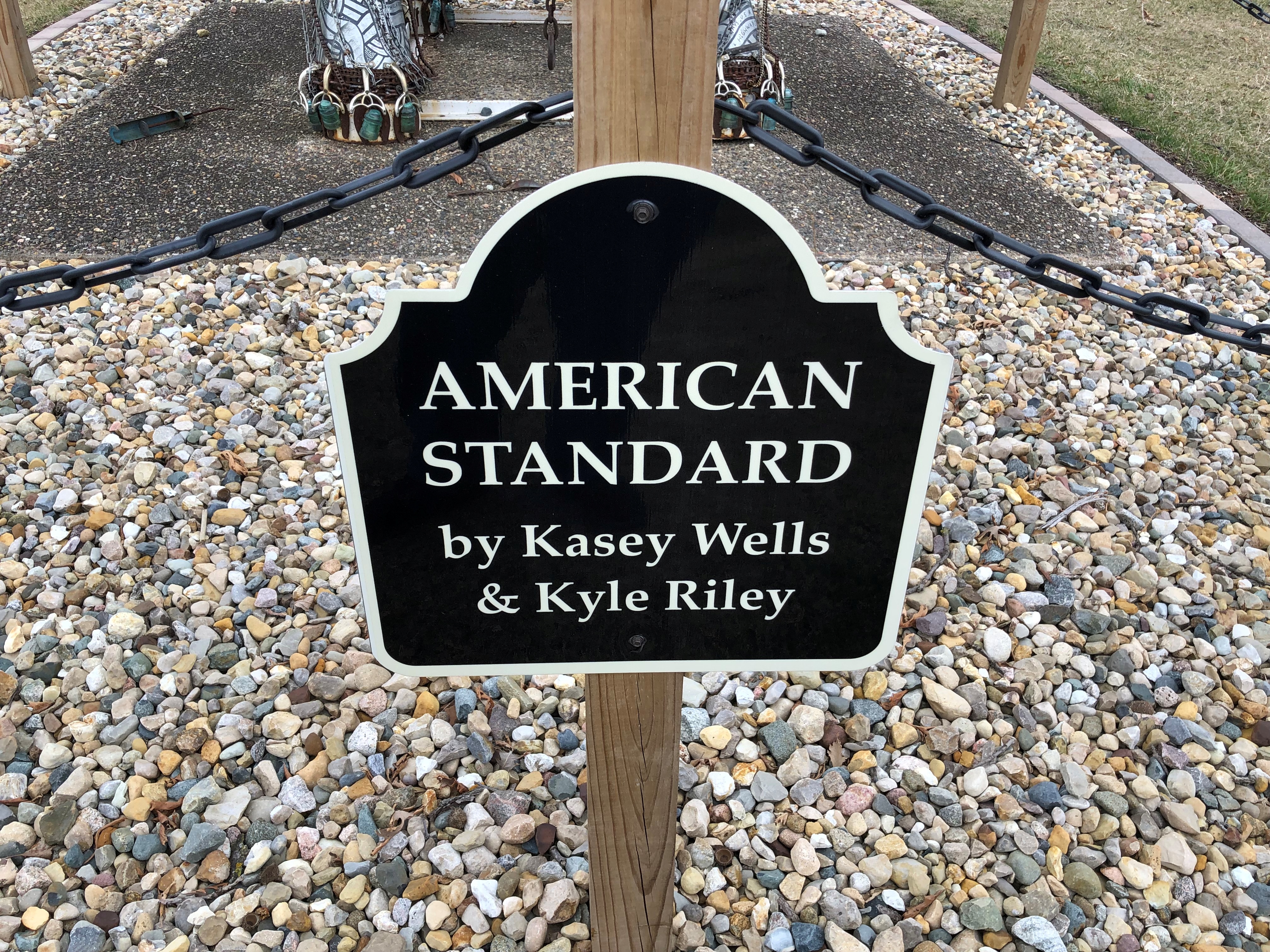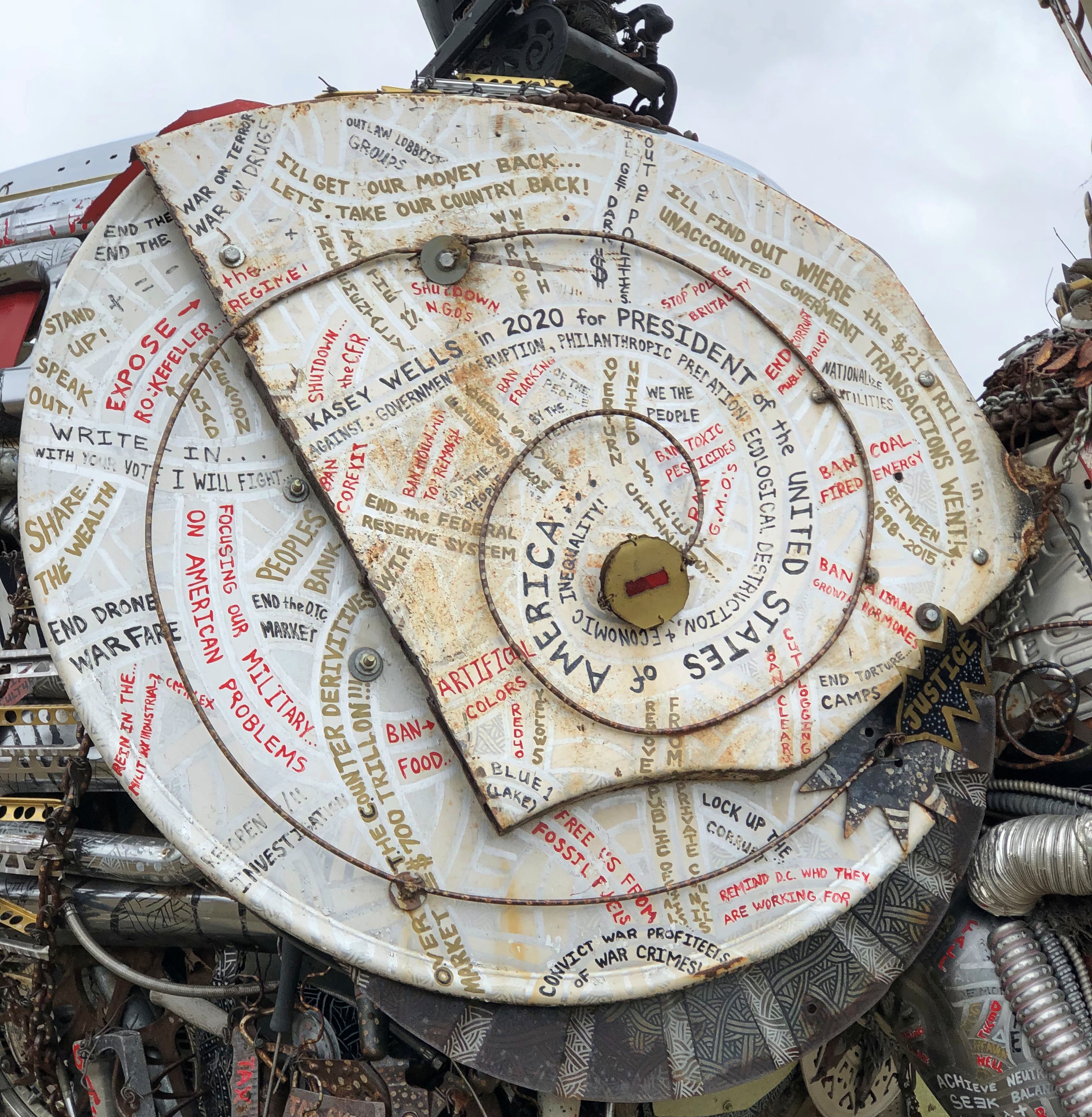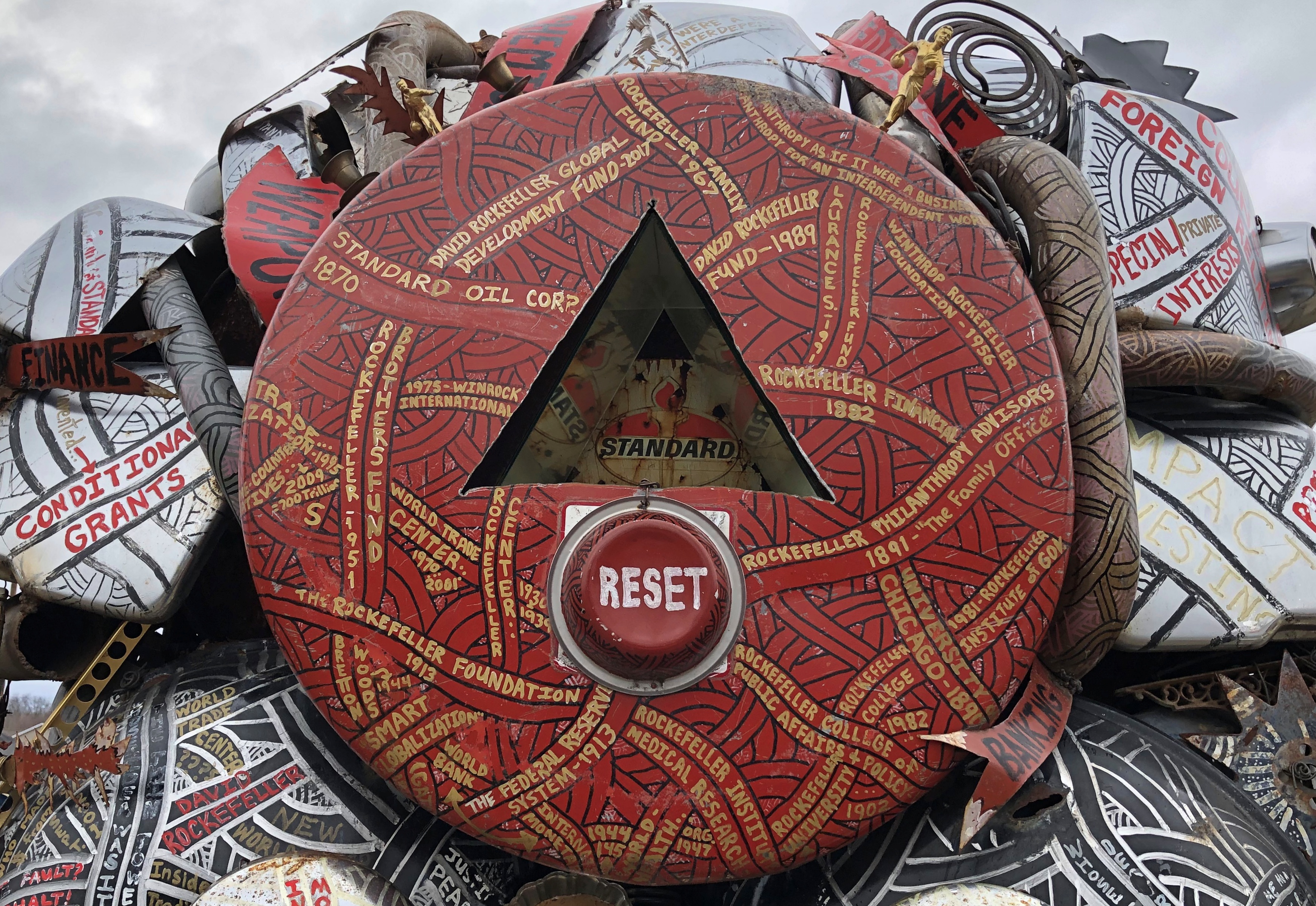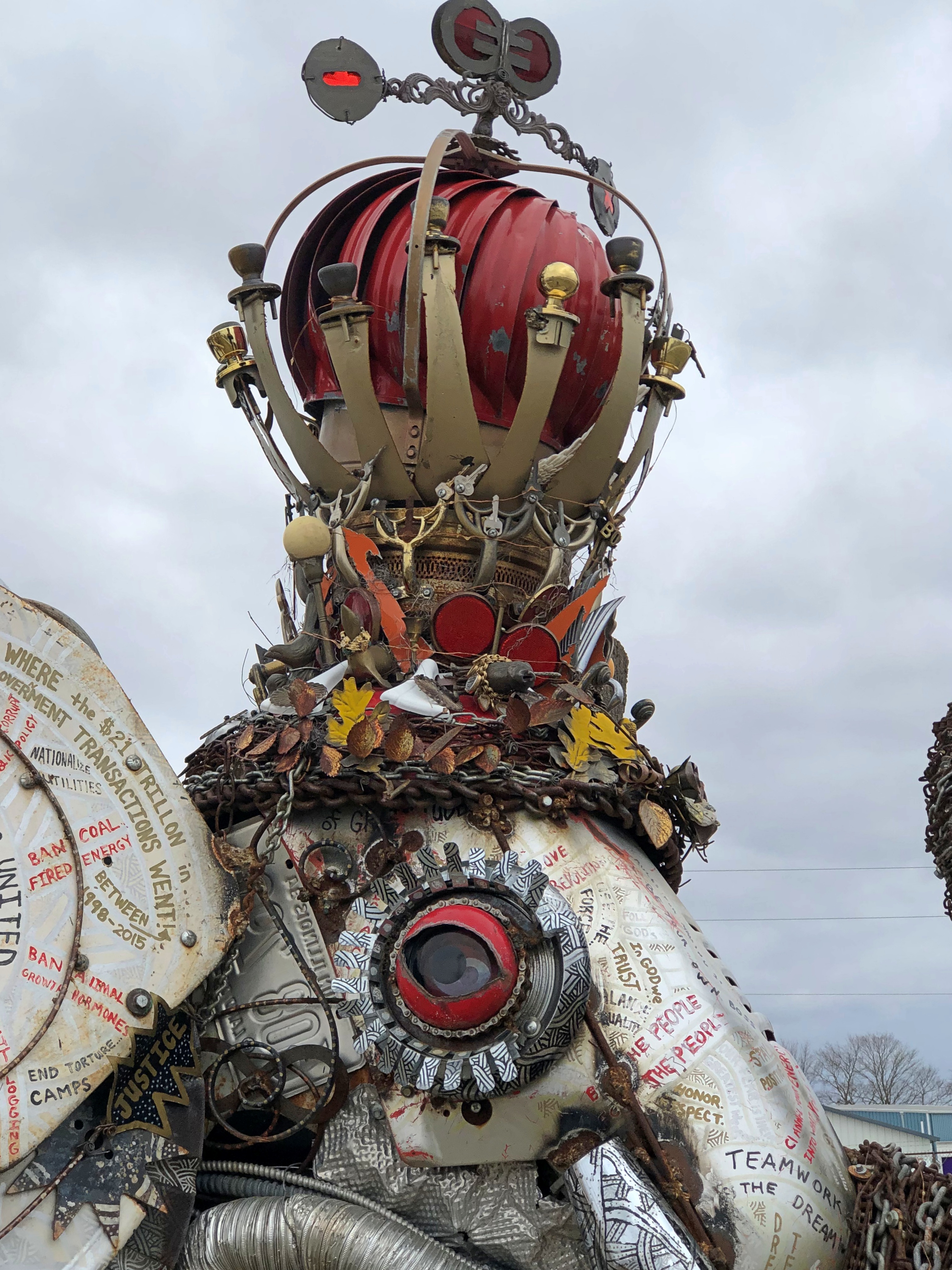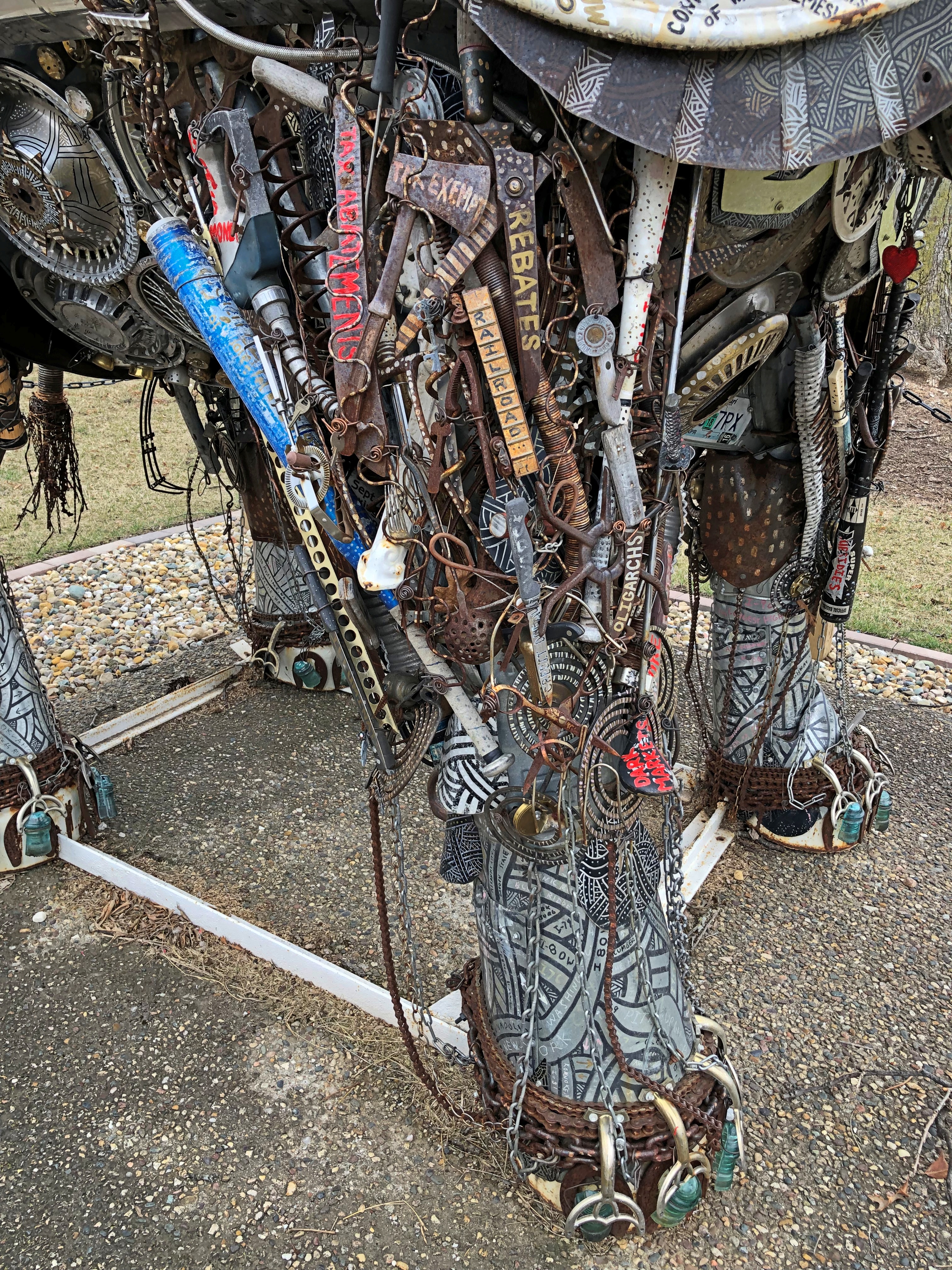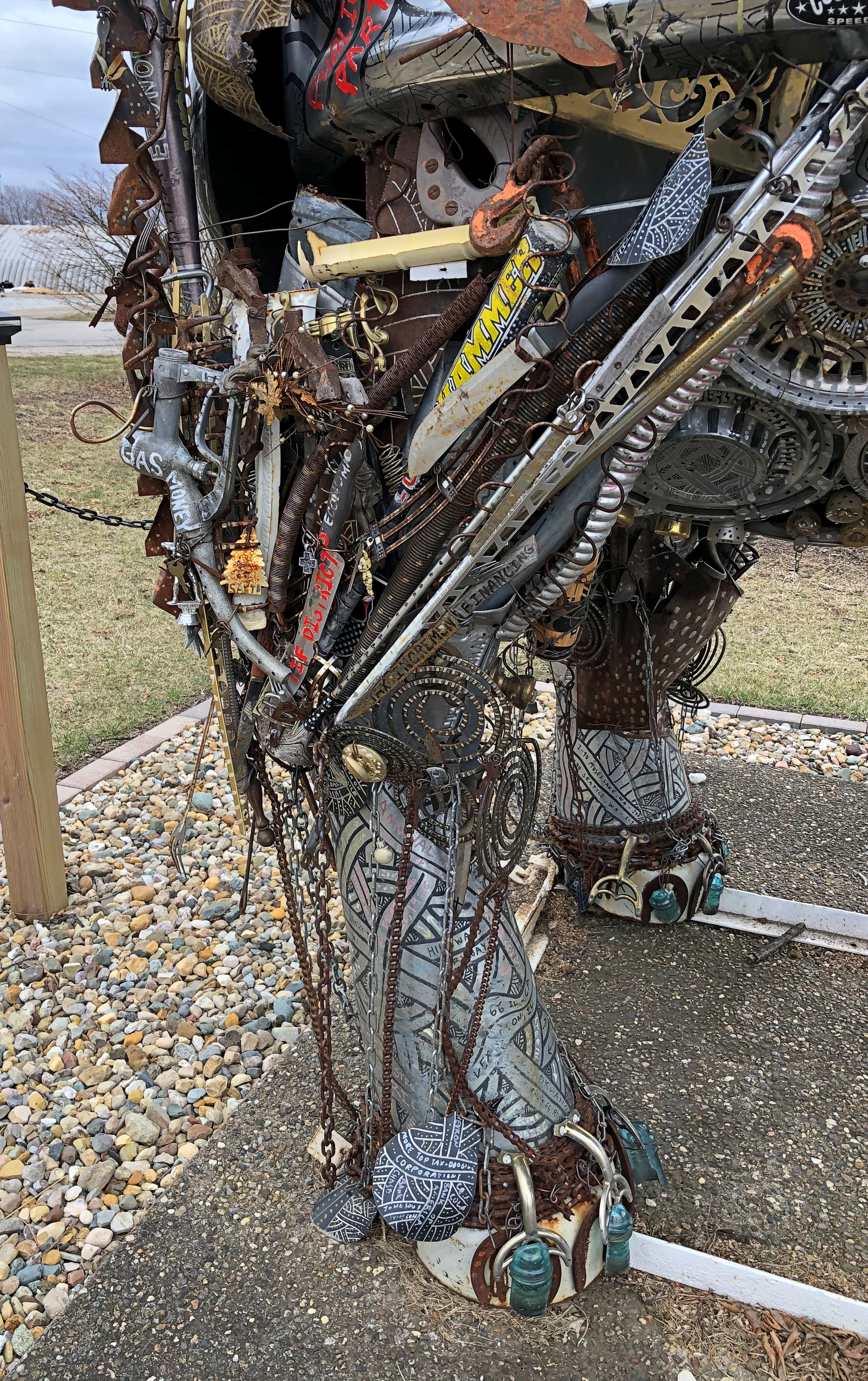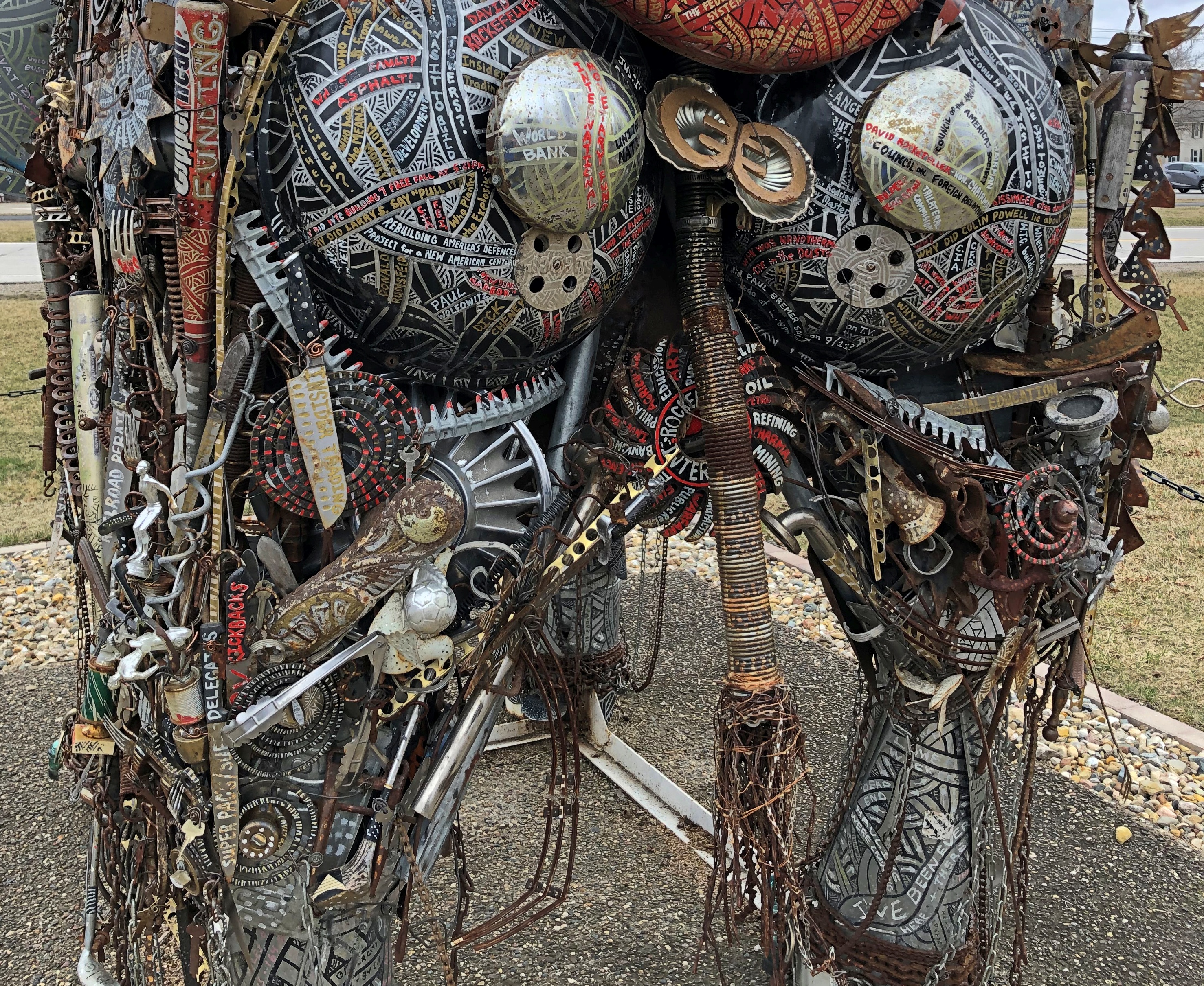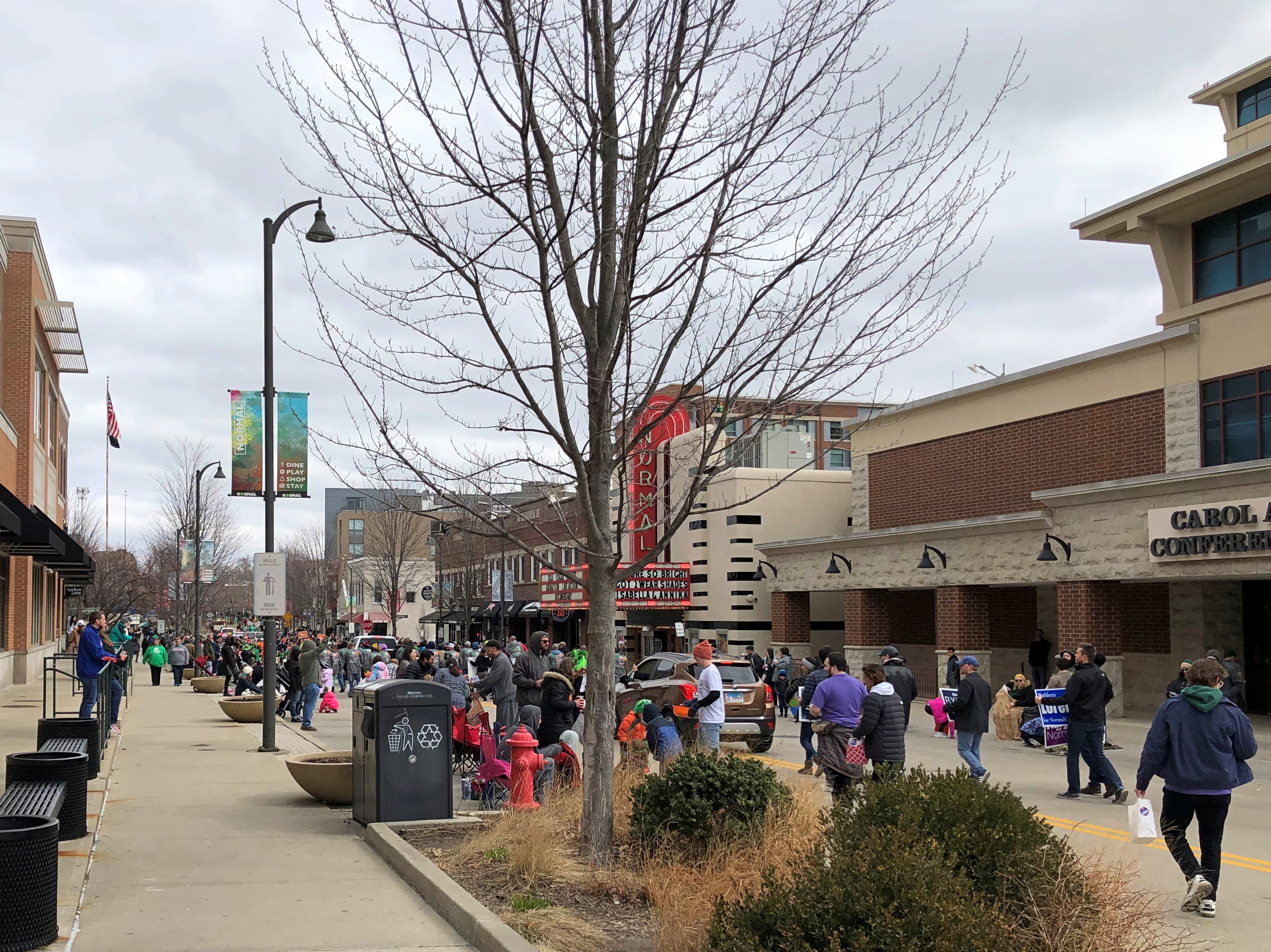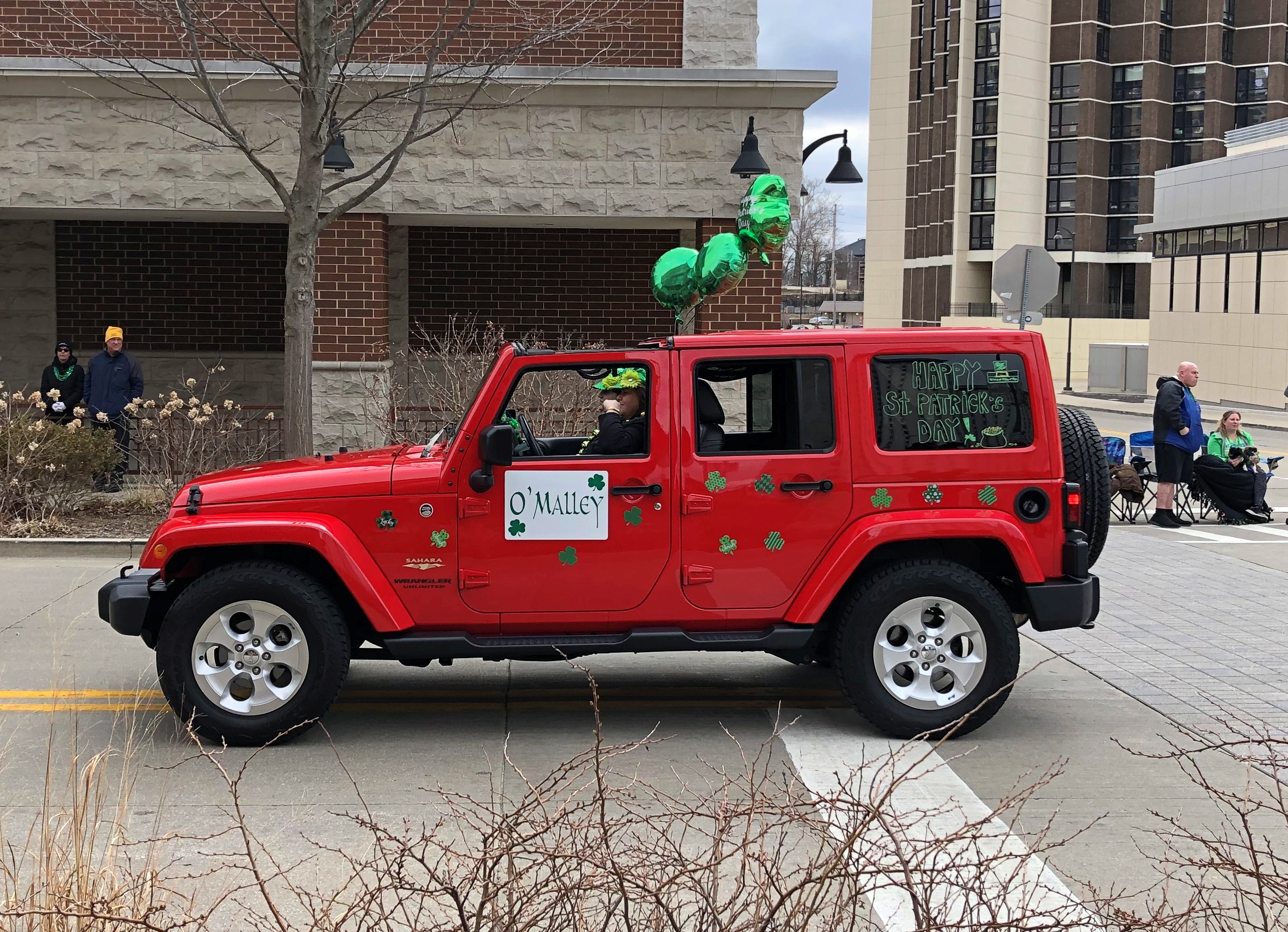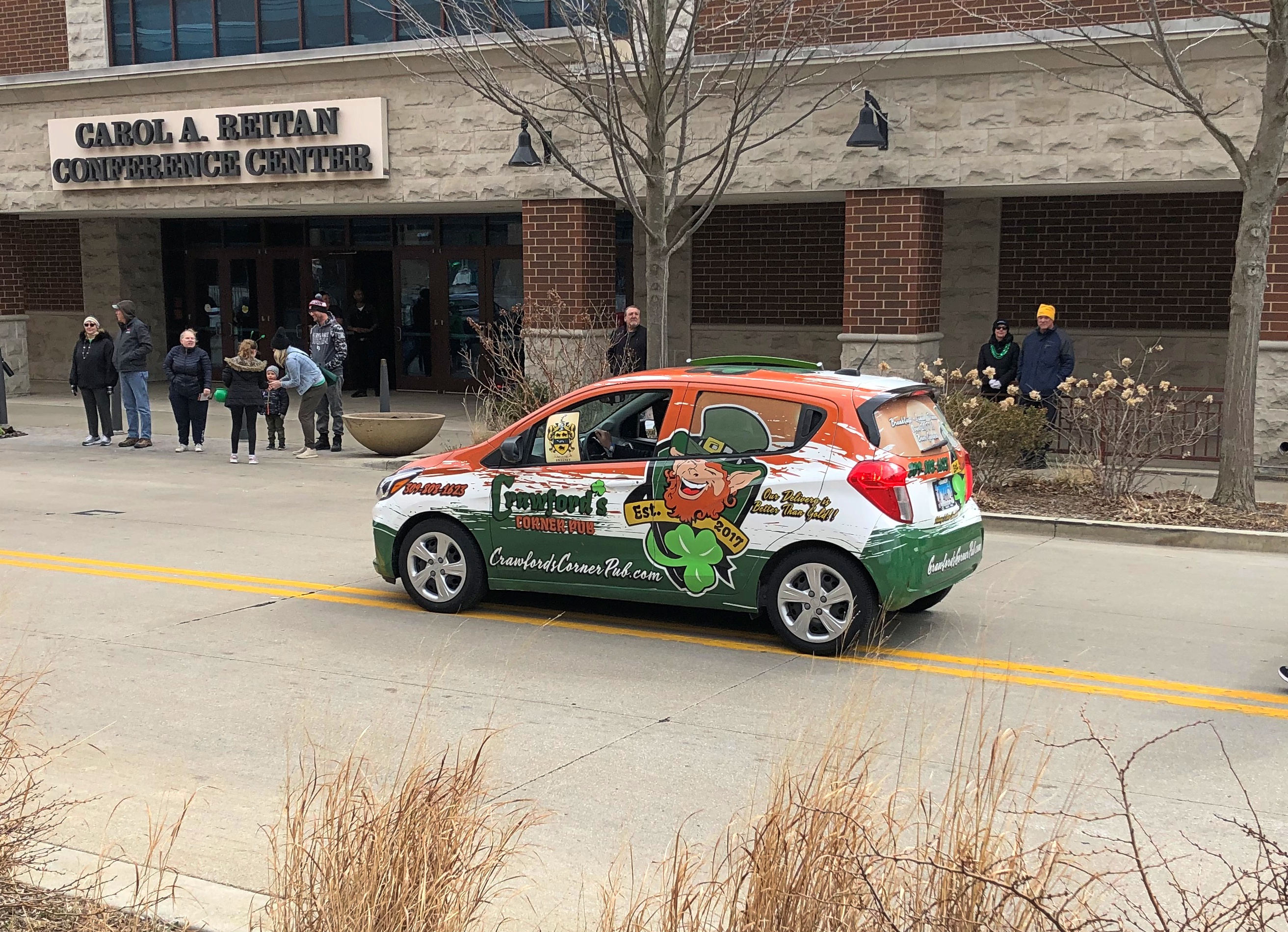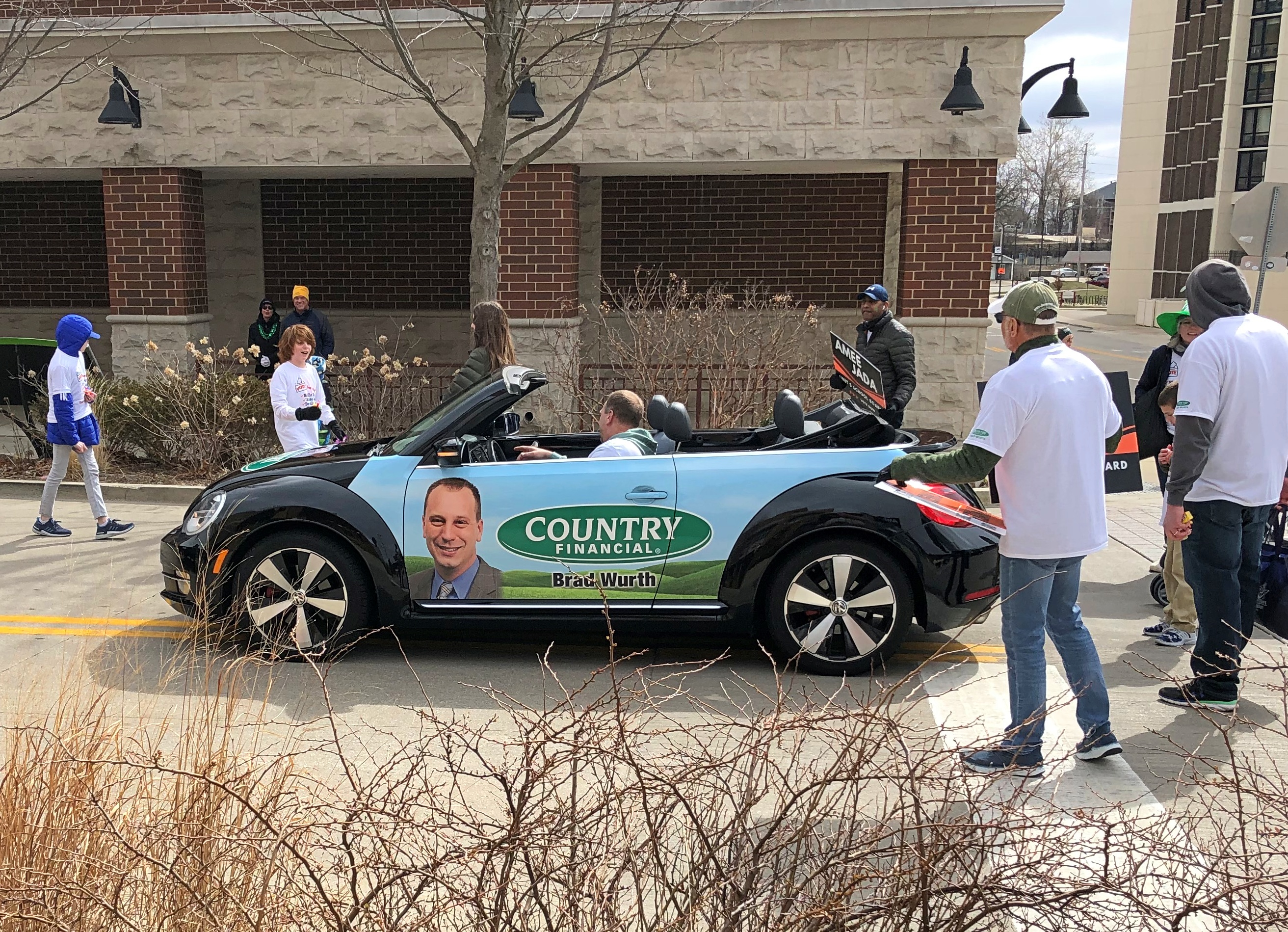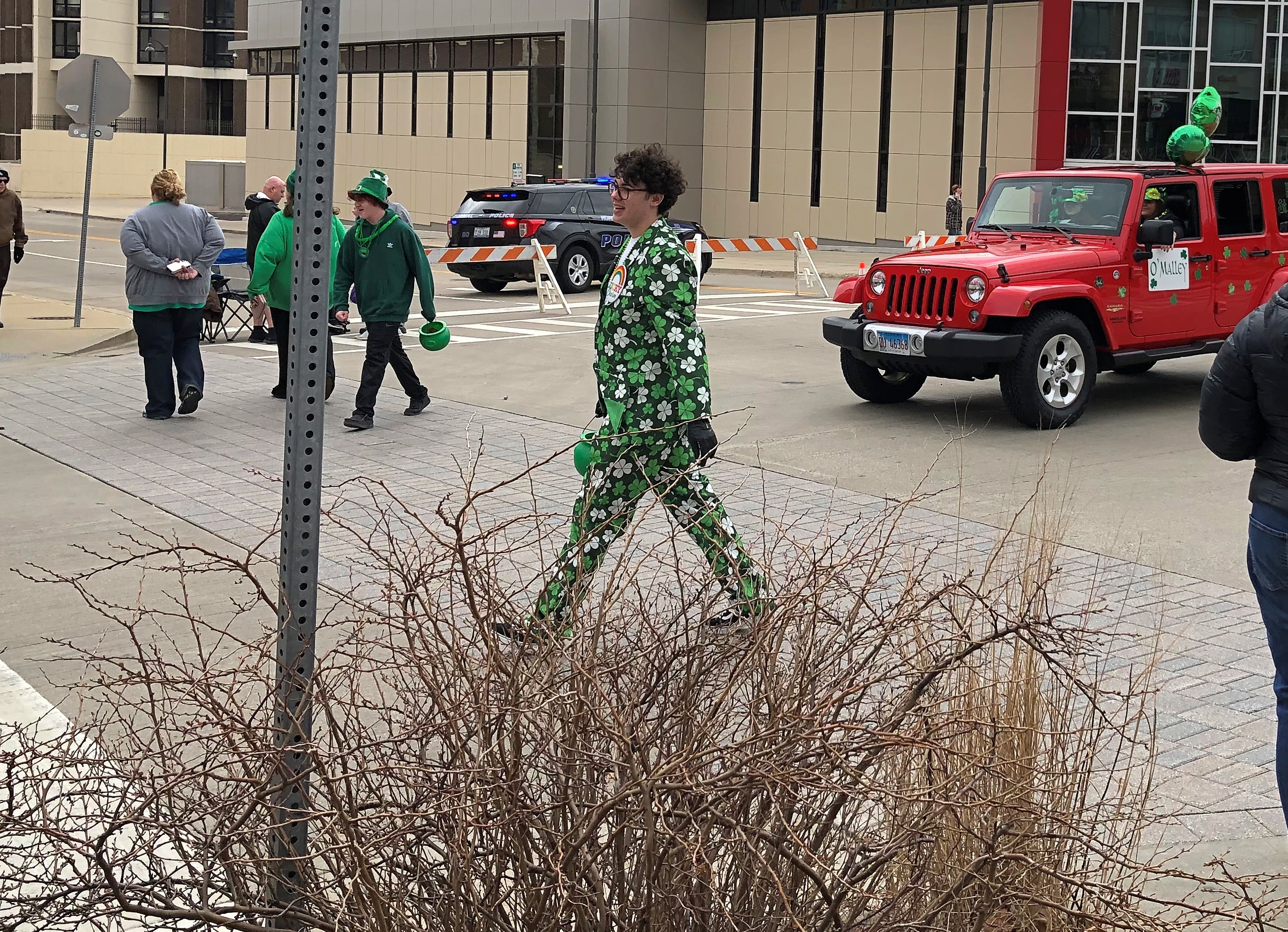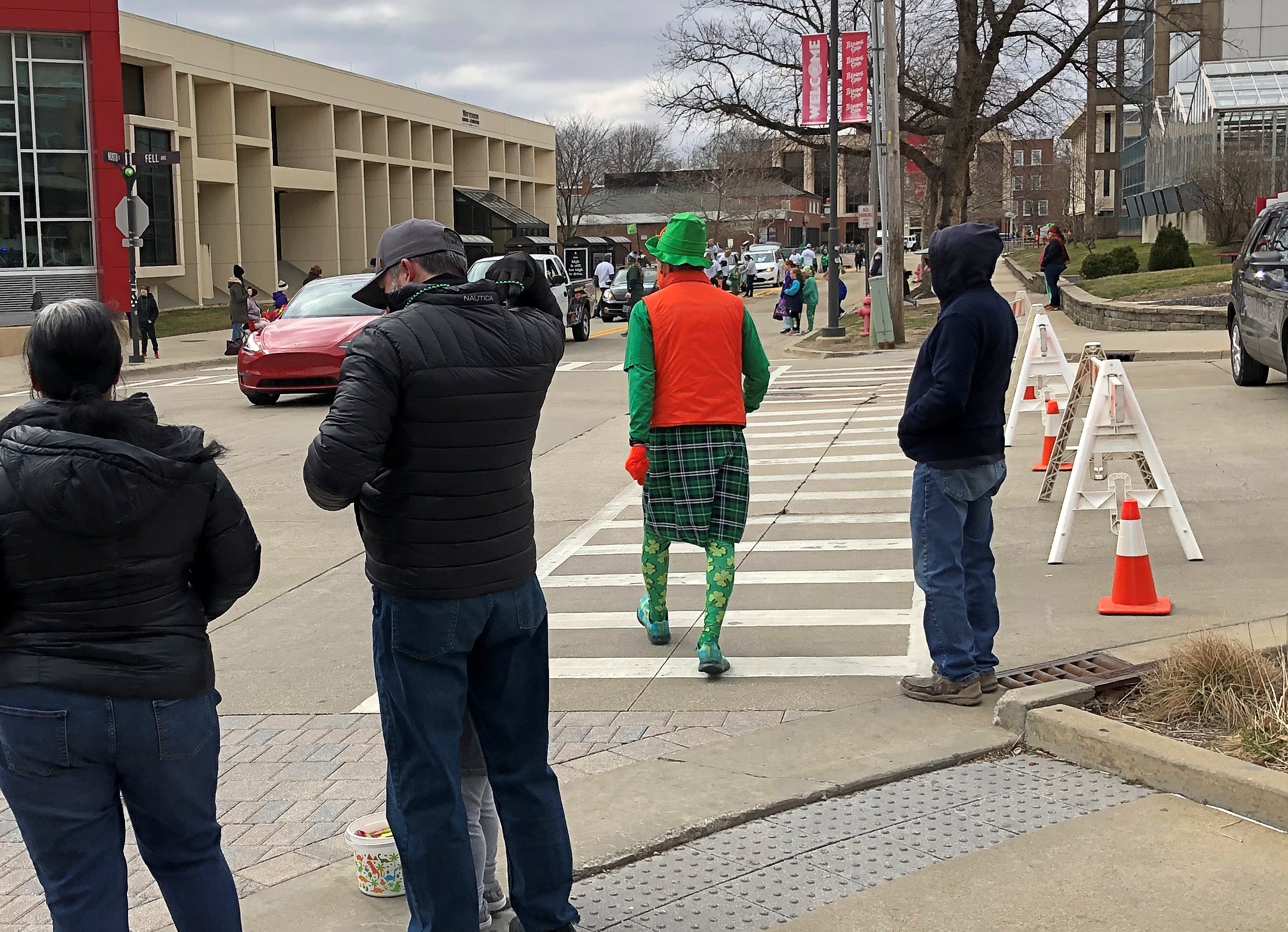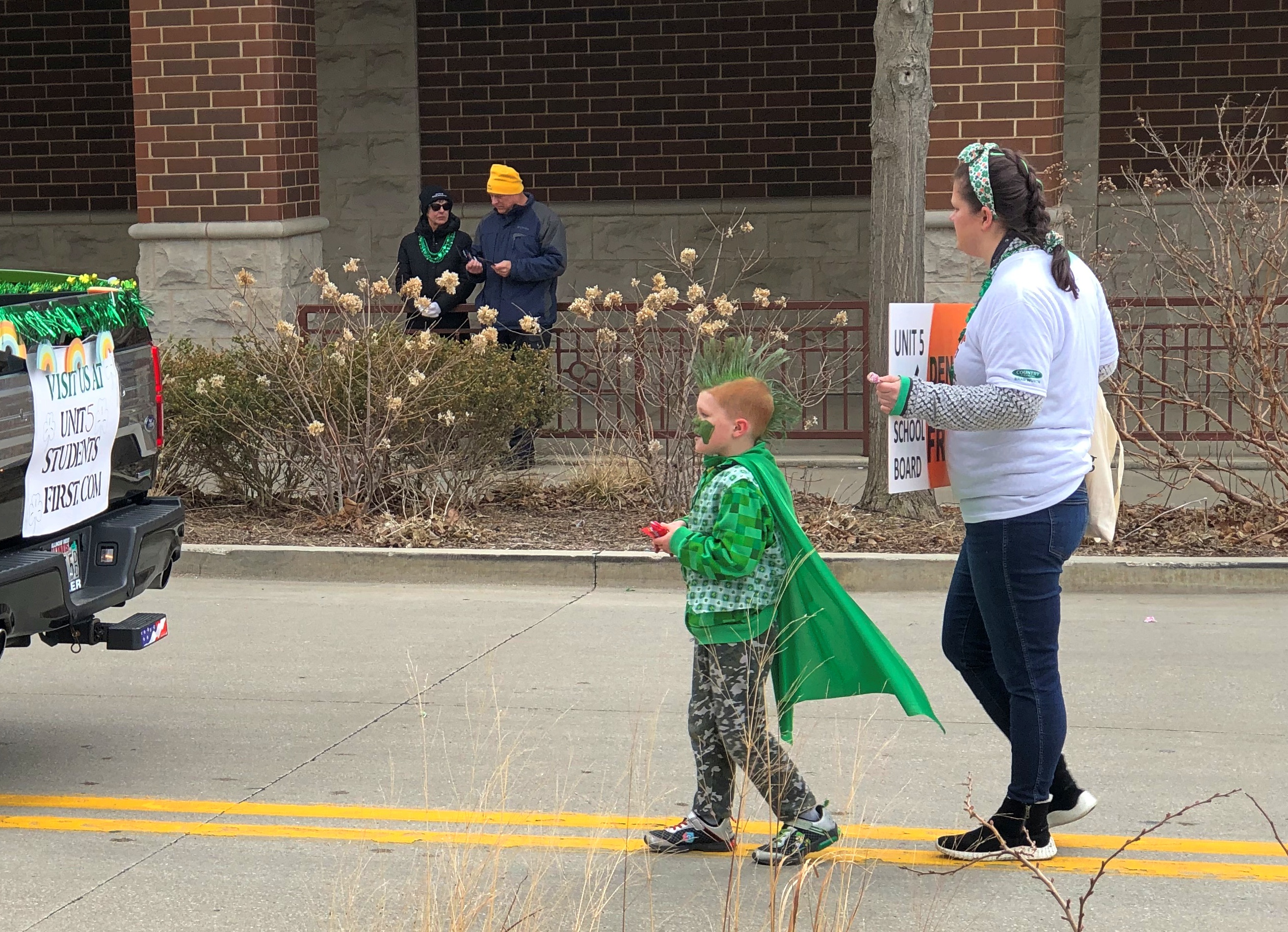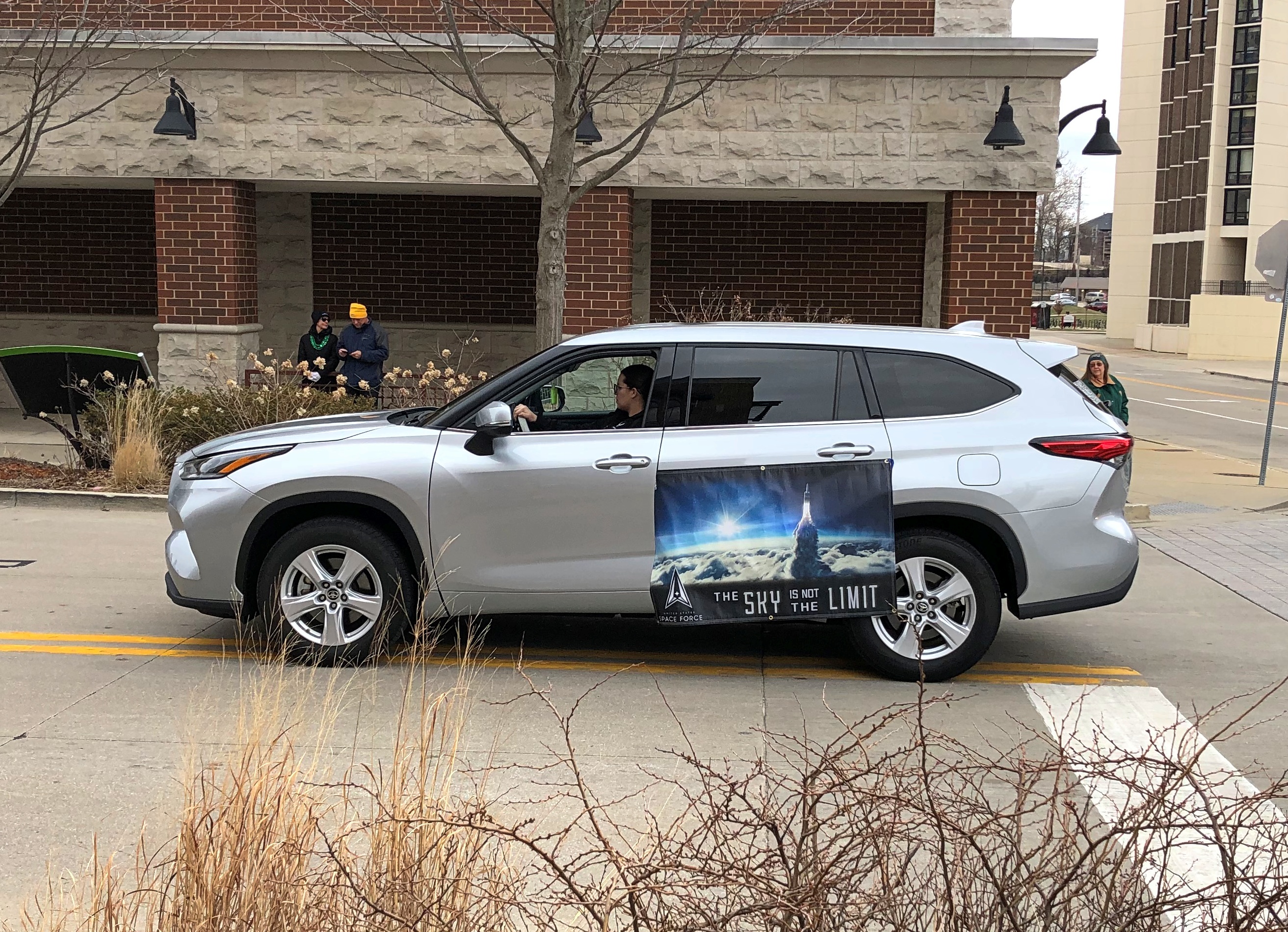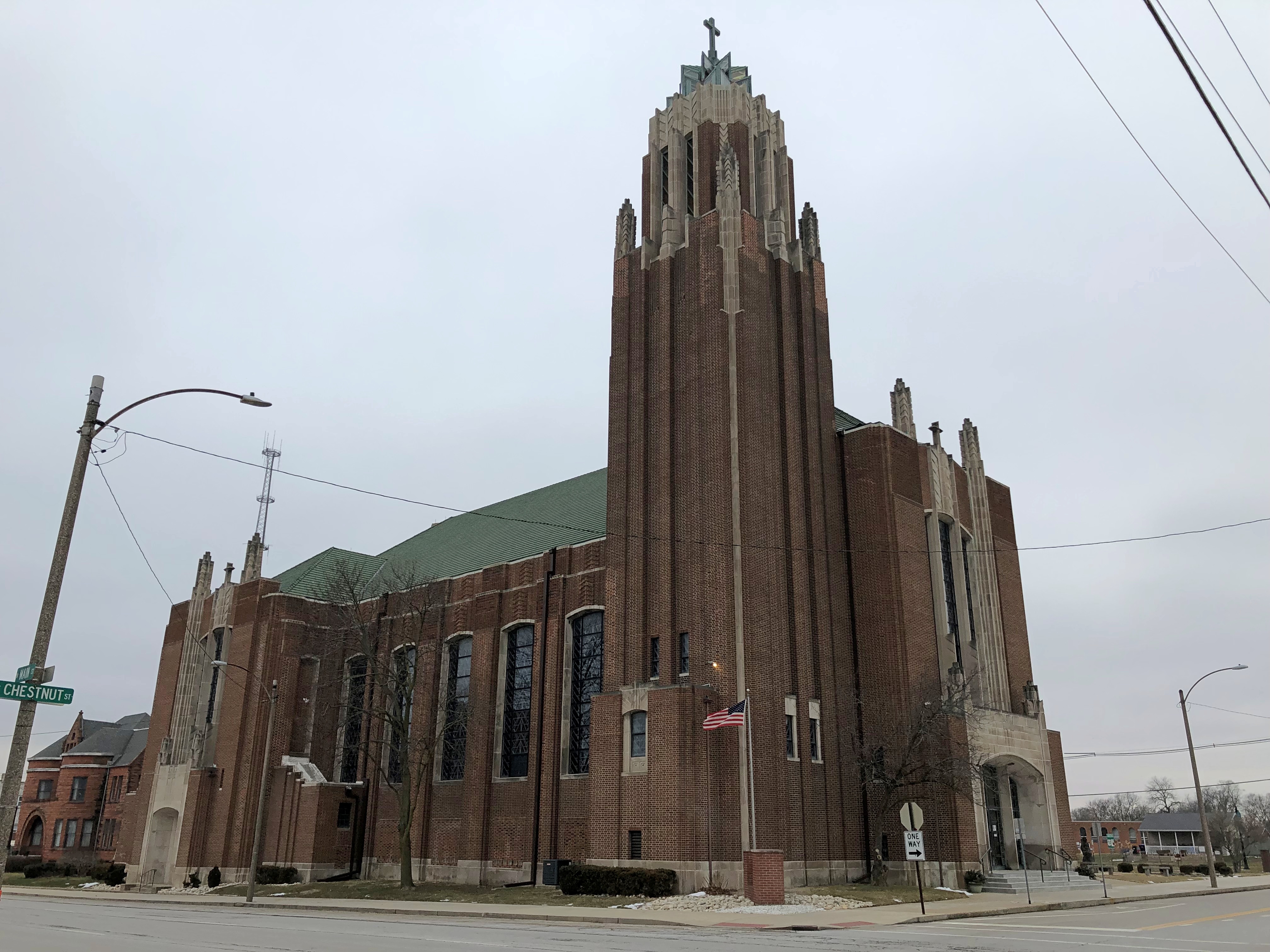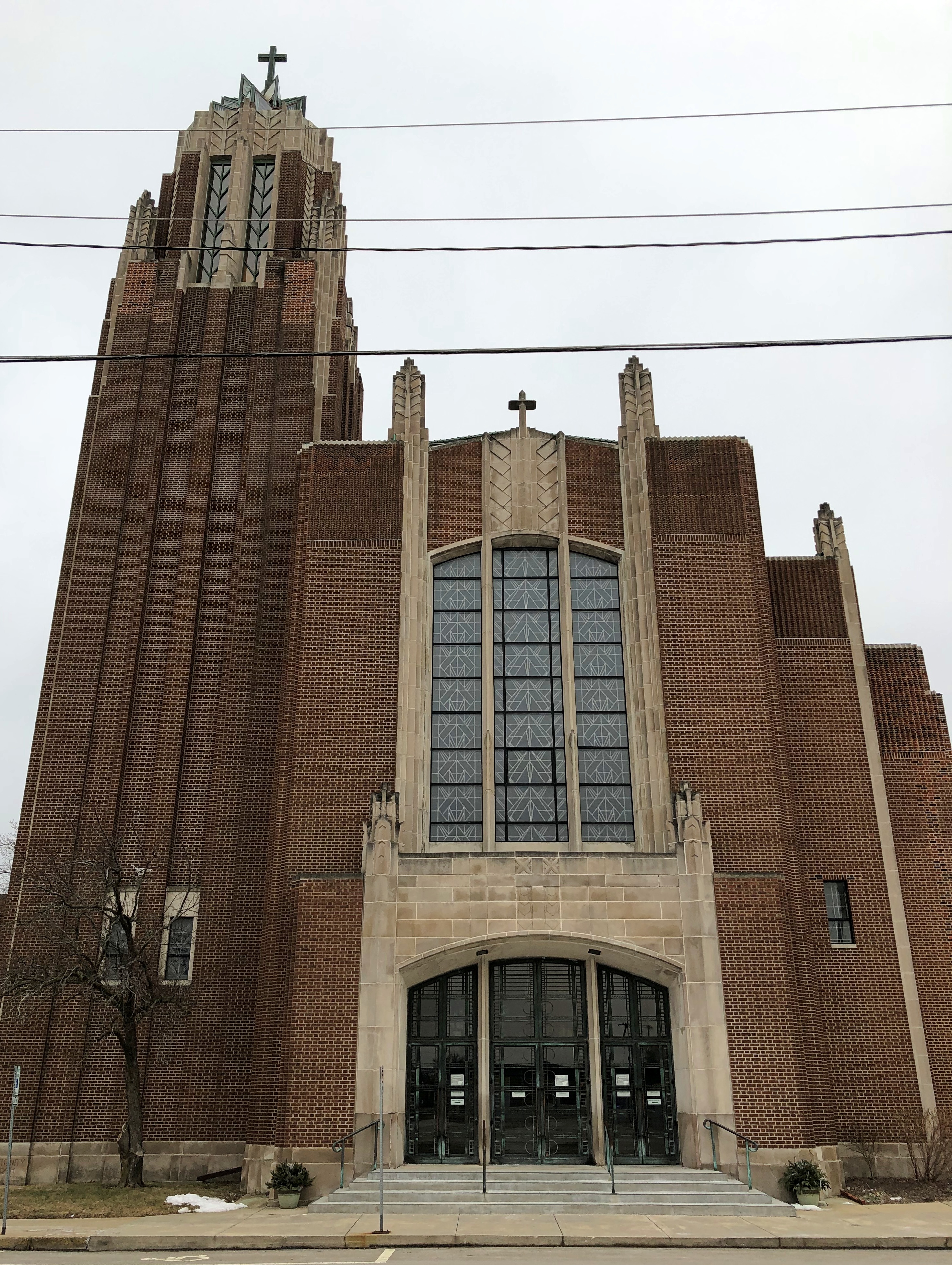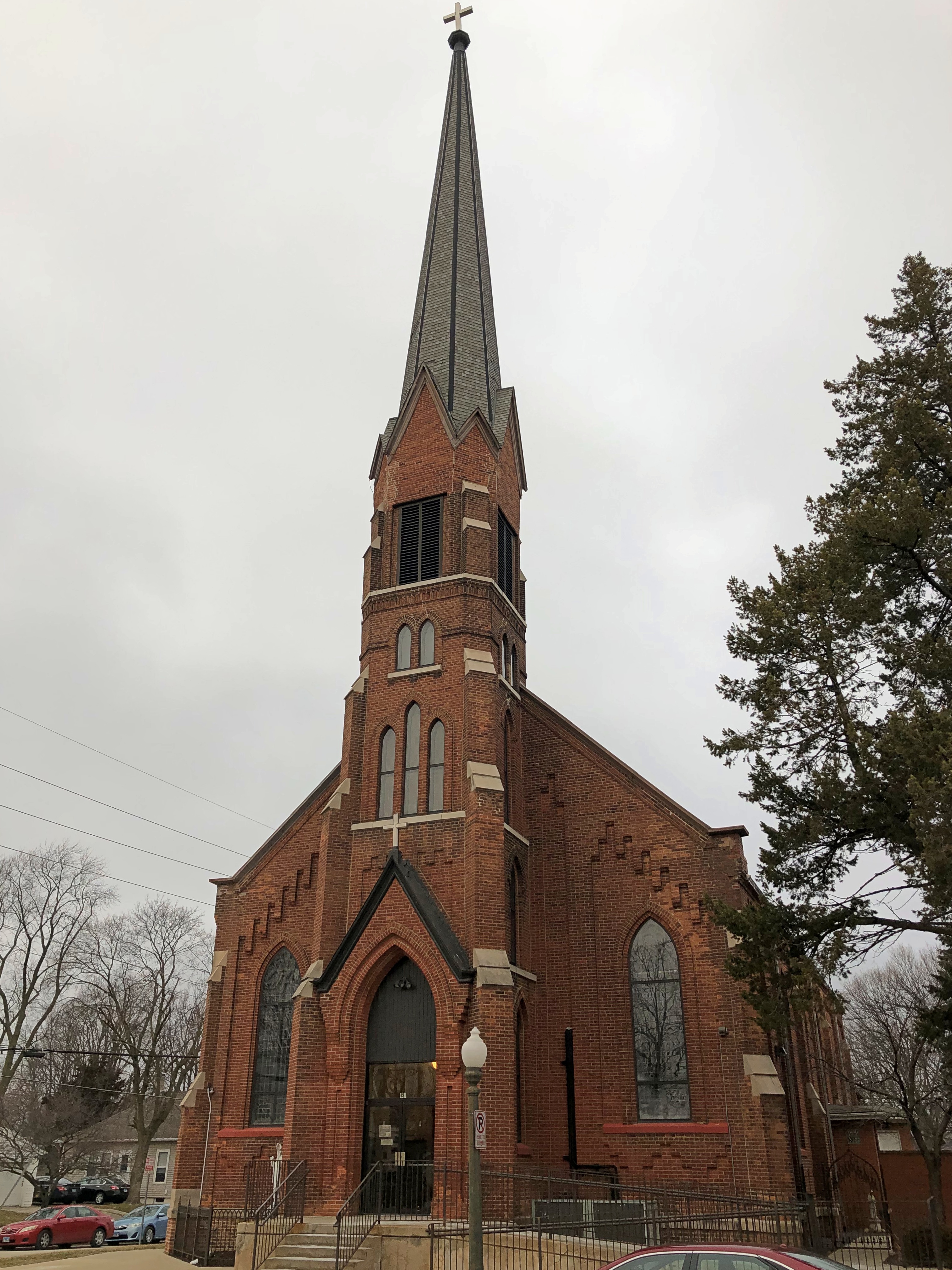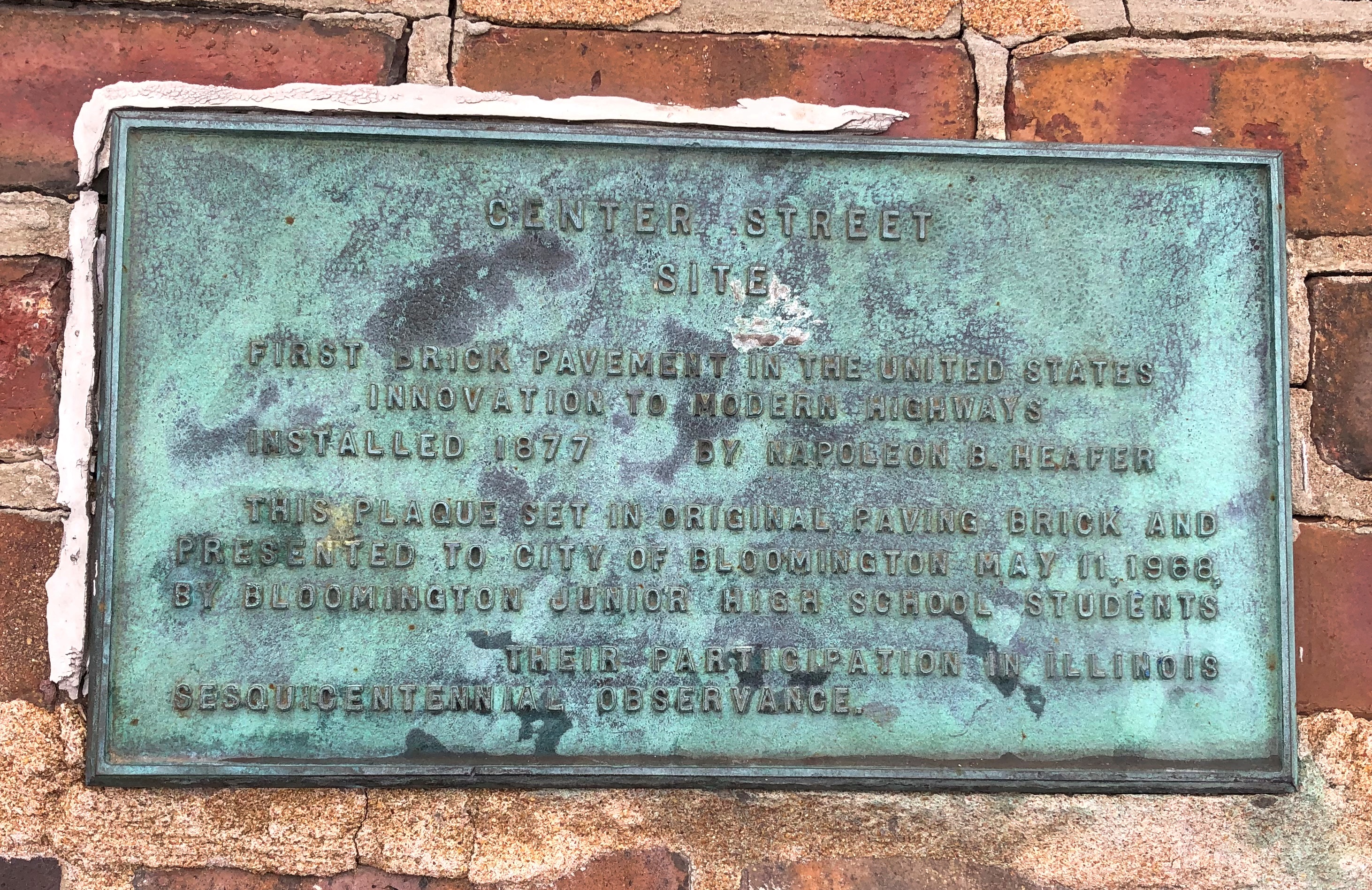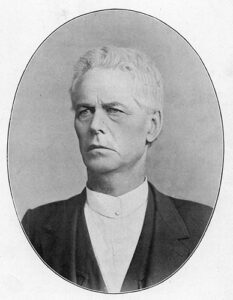A total of four hours behind the wheel there and back from the northwest suburbs of Chicago to Normal, Illinois, could be considered a chore, but not if you have time to stop a handful of places along the way. That isn’t always possible – weather or scheduling might prevent it – but when it is, you might happen across things to see. Maybe even things you won’t see anywhere else.
Such as in Pontiac, Illinois, pop. 11,150. It’s been a surprisingly good source of stopover sights since I started driving to Normal on a regular basis, and so it was on Sunday, when I headed down to Normal to load up the car with some of Ann’s possessions. She’ll be done with school for the semester later this week, so the goal was to not be overloaded when she finally returns.
Plunge into the small streets of Pontiac – that might not be the right verb, since its grid is pretty small – and soon you’ll be at Chautauqua Park.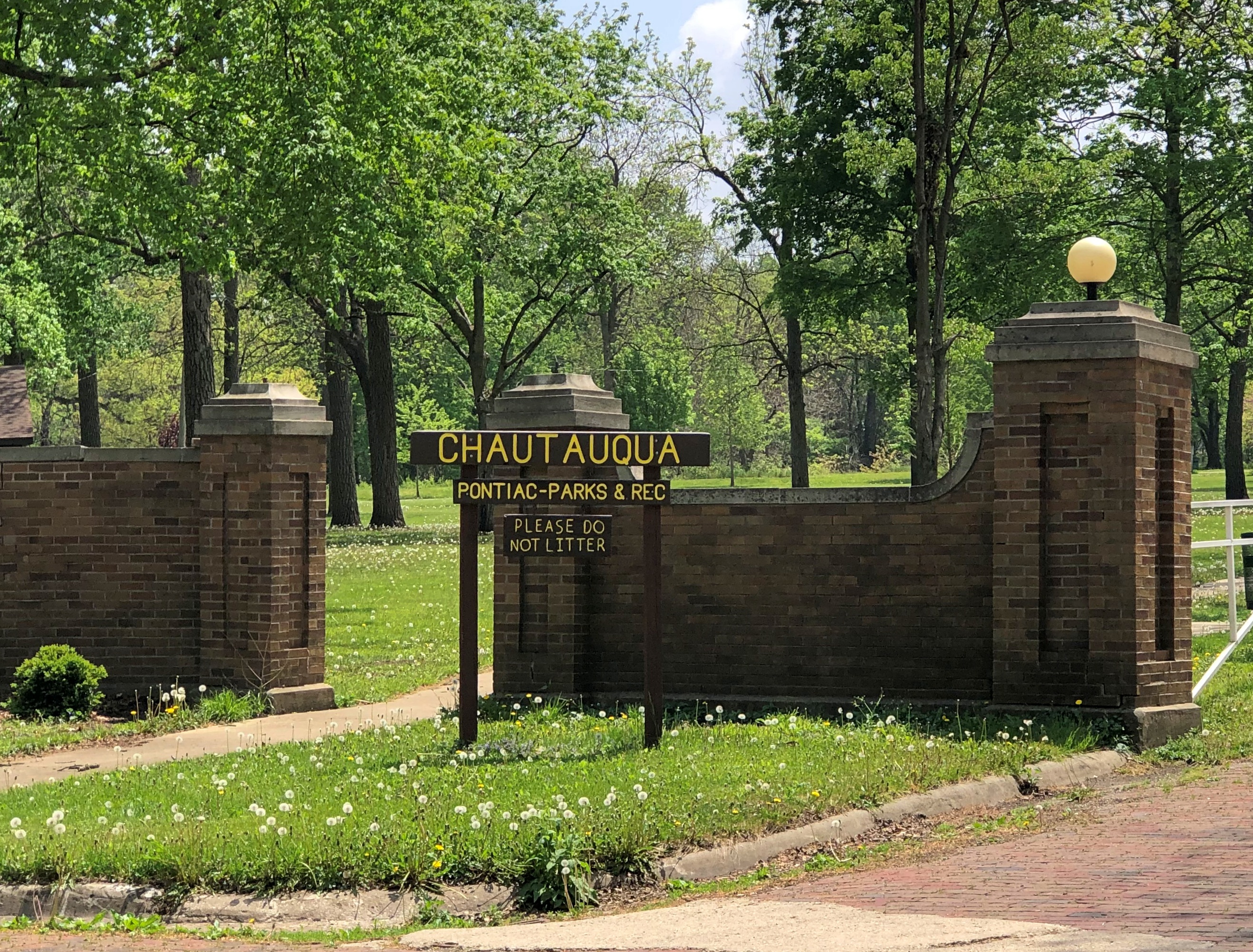
Spring green and on Sunday at least, warm enough to inspire a little sweat.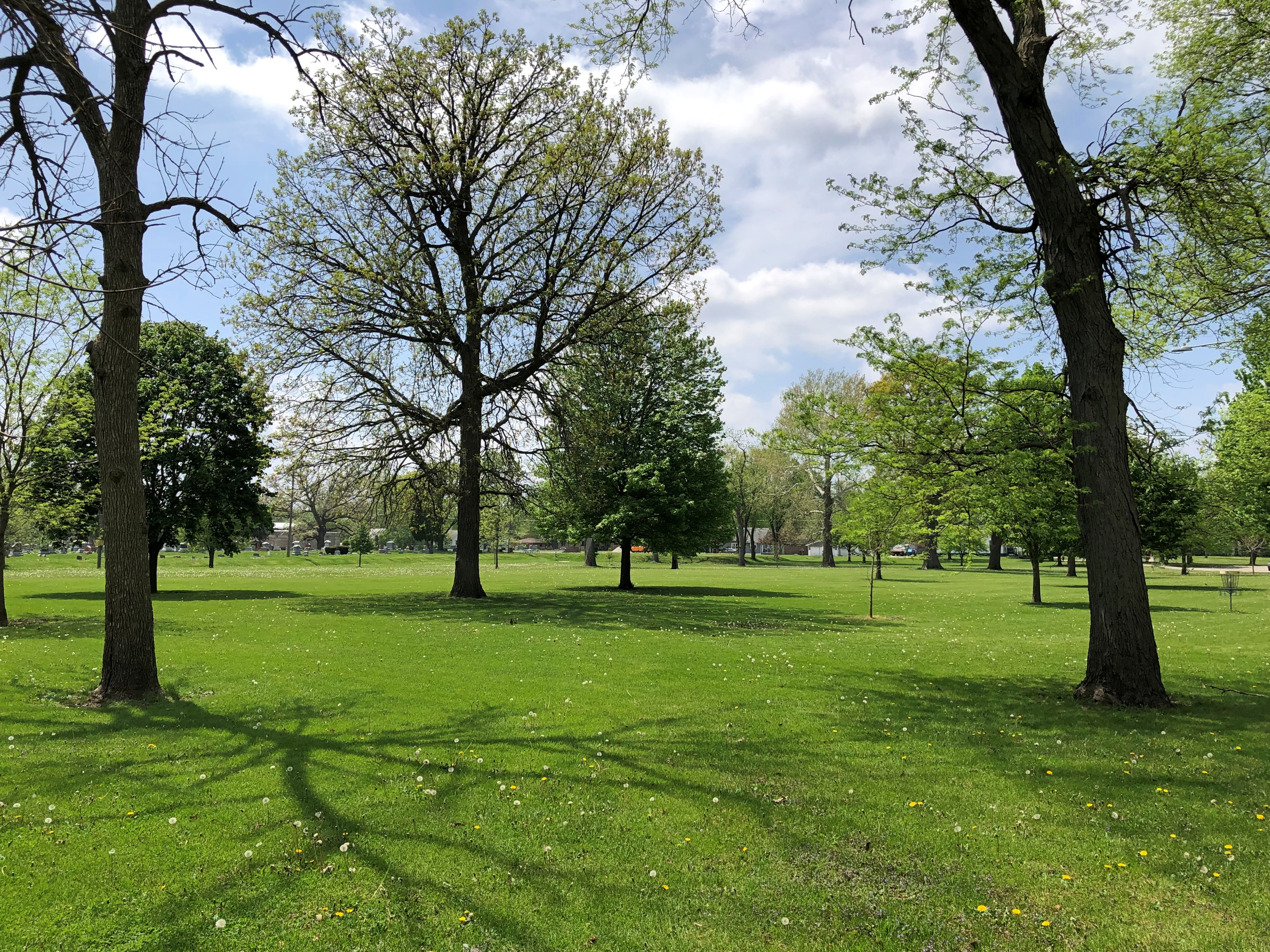
A good place to walk around, but also to read, with a good many signs like this.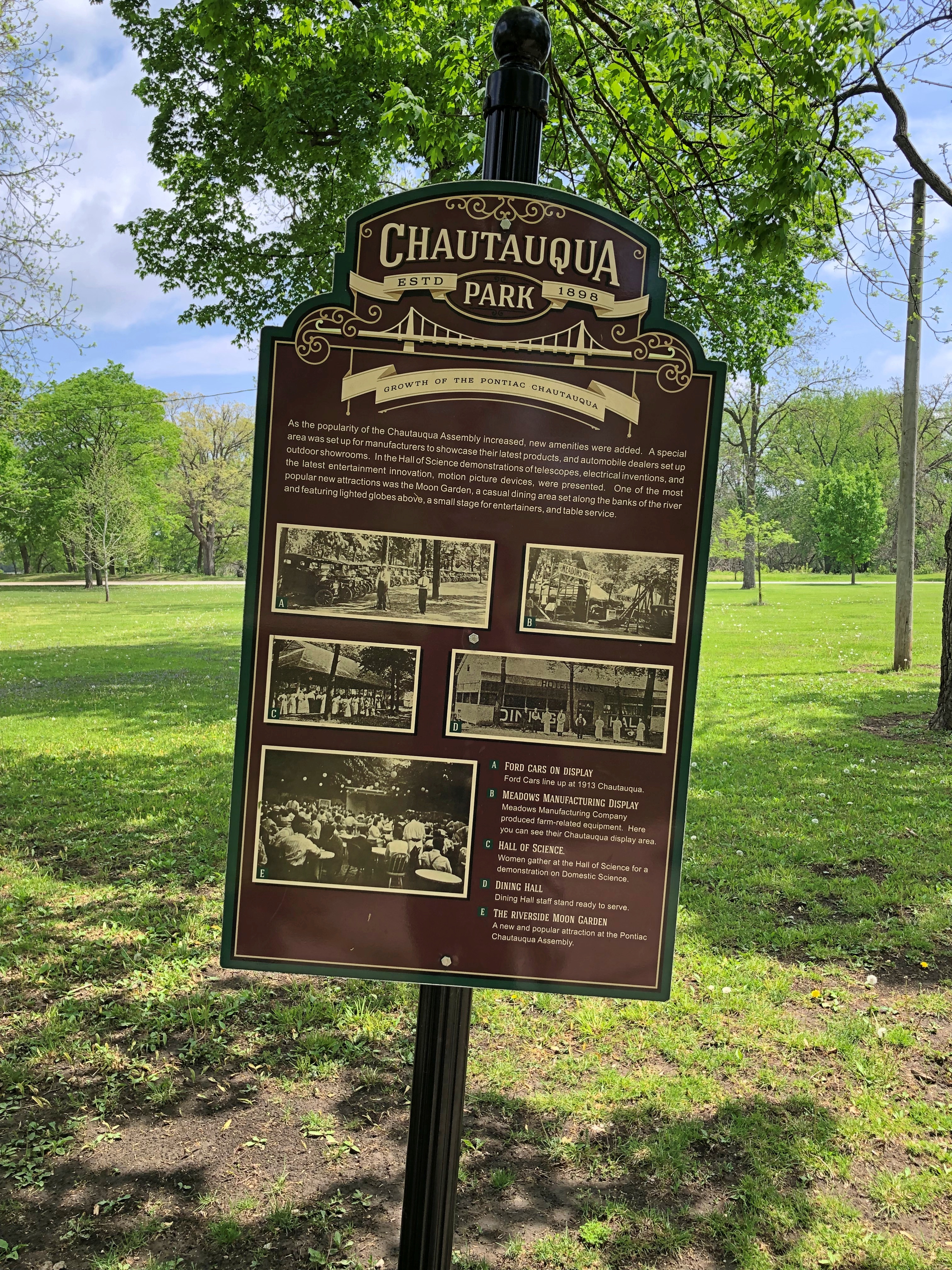
I read at least a half-dozen. Most of them told me about the history of the park as the setting for the Pontiac Chautauqua, as the park name suggests.
A few quotes from the various signs:
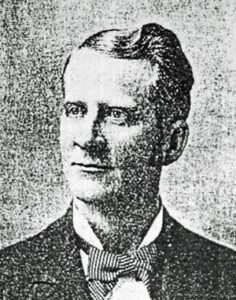
A.C. Folsom
“Under the leadership of A.C. Folsom, a group of civic-minded citizens organized to bring a Chautauqua to Pontiac. Between the years 1898 and 1929, the Pontiac Chautauqua Assembles developed into one of the Midwest’s most popular and successful summer festivals.”
“As the Pontiac Chautauqua grew, dramatic presentations became particular favorites of the crowd. Shakespeare, melodramas, domestic comedies, mysteries, and tragedies graced the stage of the pavilion. Troupes of actors from New York, Chicago and elsewhere traveled the Chautauqua circuit, playing a repertory of four or five plays.”
The Chautauqua pavilion as it appears now.
Theatrical presentations still occur there. According to a non-historic sign, the next one will be the Broadway musical version of Beauty and the Beast, June 14-18, 2023, by the Vermillion Players.
More Chautauqua Park history-sign verbiage:
“Specialty acts from all over the world brought exotic sounds which floated over the park on warm summer evenings. Here are just a few of the individuals and groups which graced the Pontiac Chautauqua: Mme. Schumann-Heink, opera star; The Weber Male Quartette; Colangelos Band; The Honolulu Students; Mr. & Mrs. Tony Godetz, Alpine Singers & Yodelers.”
“Each year of the Pontiac Chautauqua Assembly, noted lecturers, politicians and educators came to edify the event’s patrons… some of the most notable speakers include: Booker T. Washington; William Jennings Bryan; Samuel Gompers; Rev. Dr. Thomas DeWitt Talmage; Carrie Nation.”
Yep, there’s Carrie Nation at the Pontiac Chautauqua.
No visible hatchet. It’s clear she didn’t wear a corset. She considered them harmful.
As fascinating as the park’s Chautauqua history is – and there’s the basis of another limited costume series on prestige streaming, namely the story of a plucky, slightly anachronistic woman entertainer on the Chautauqua circuit, ca. 1900 – that isn’t all the park has to offer.
Namely, it sports two of the town’s three swinging bridges. Dating roughly from the time of the Chautauqua. Original iron work, with wooden planks that have been replaced many times.
Naturally, I had to cross them. One of them: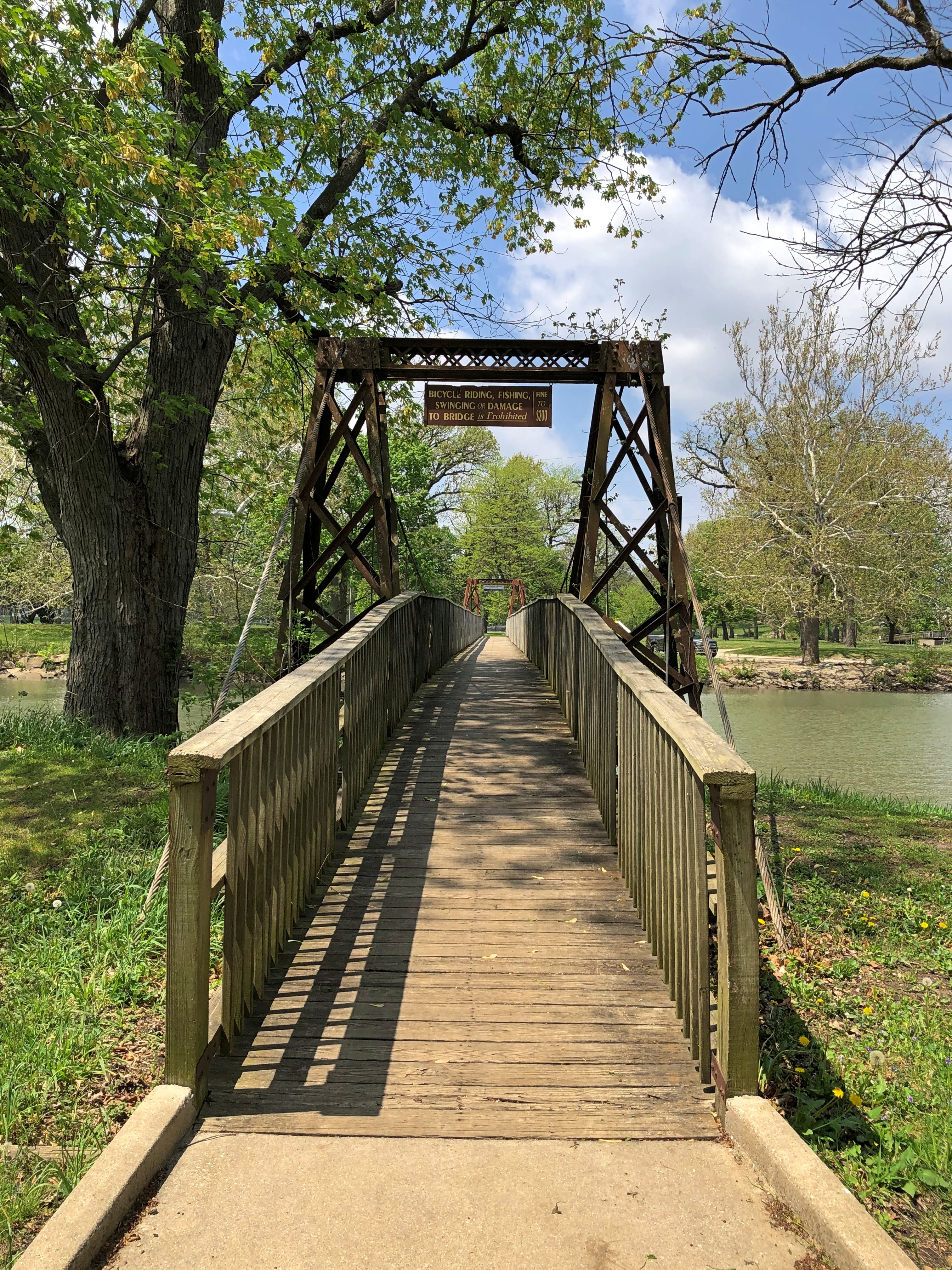
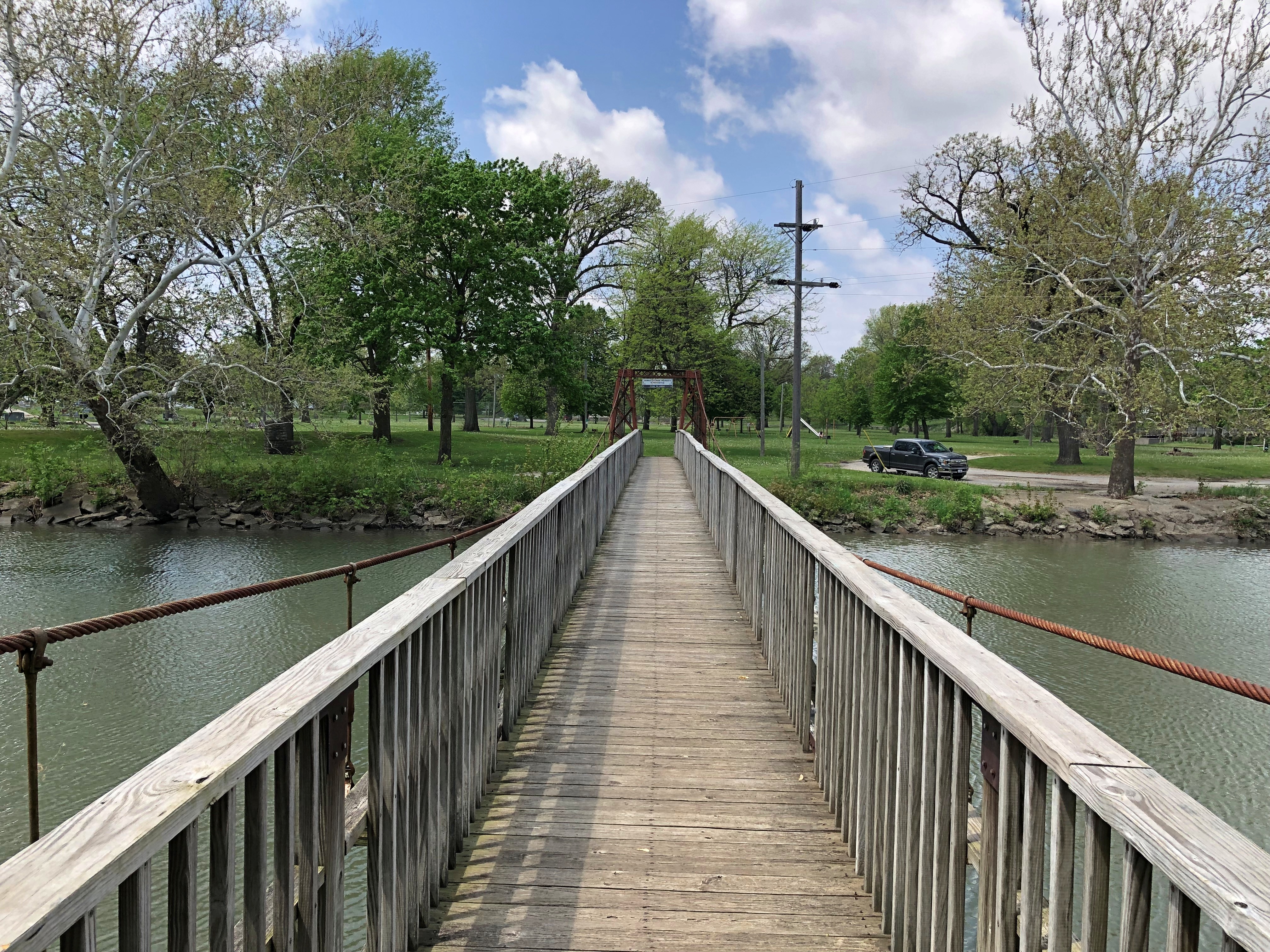
And the other.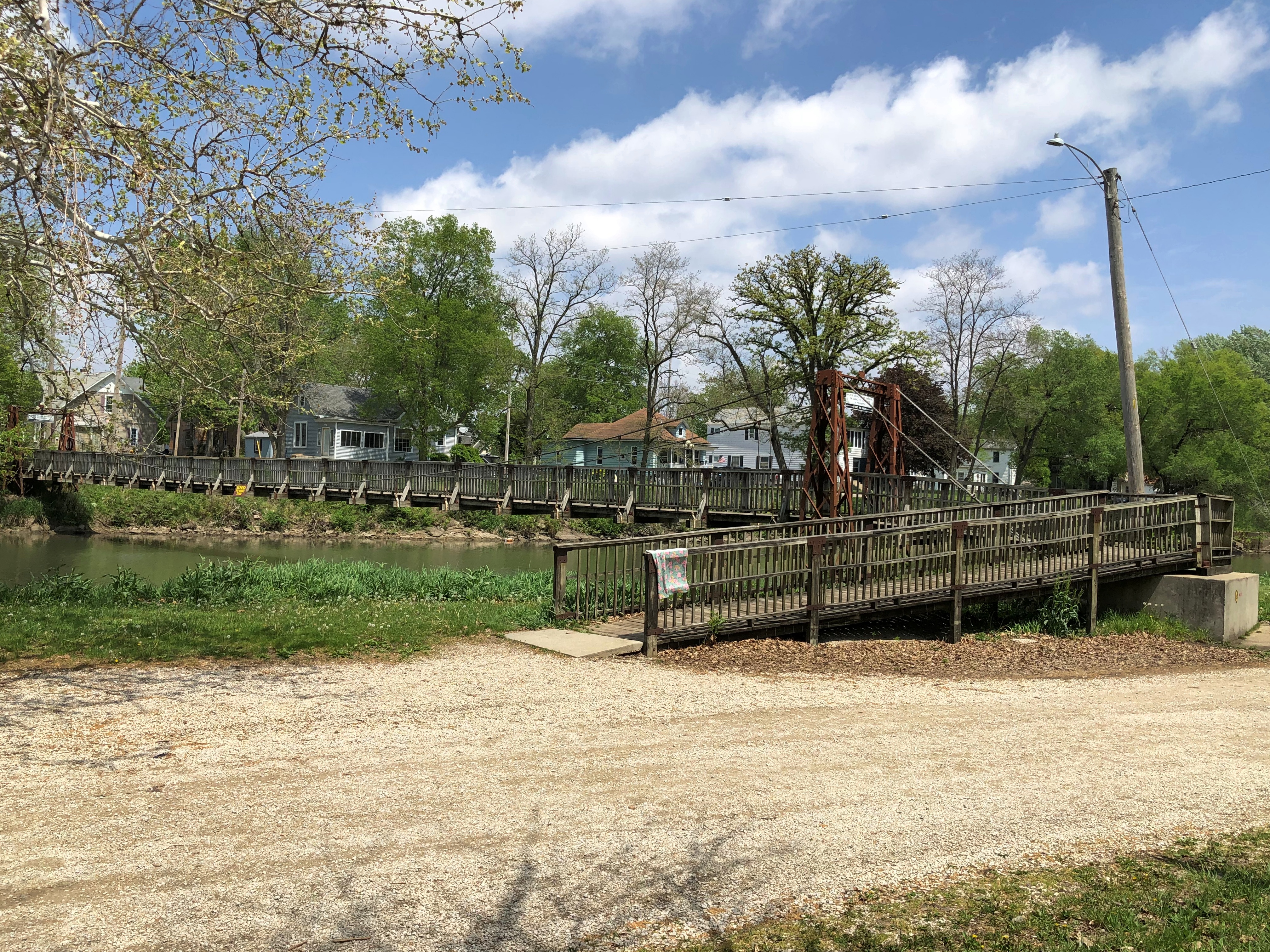
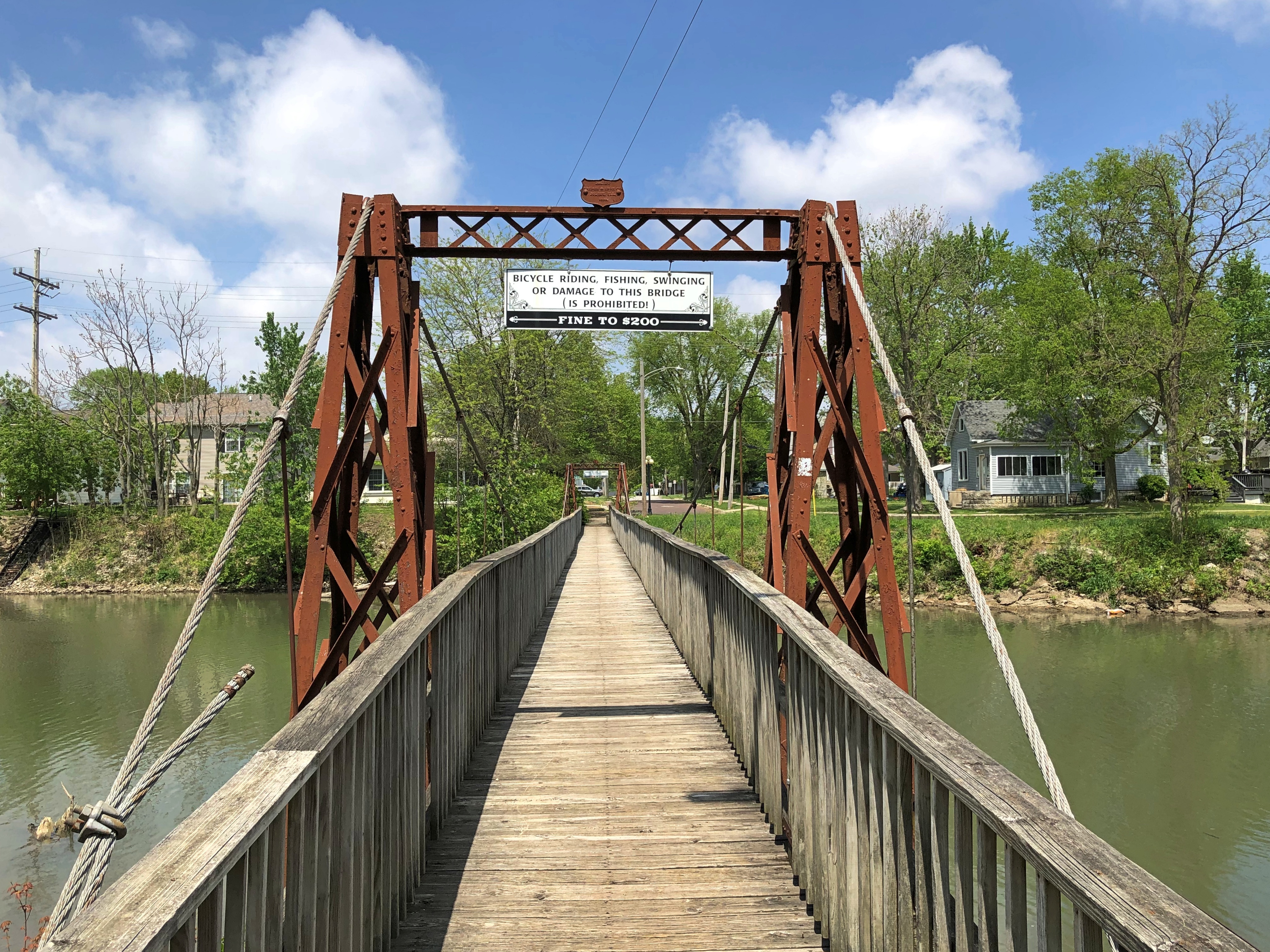
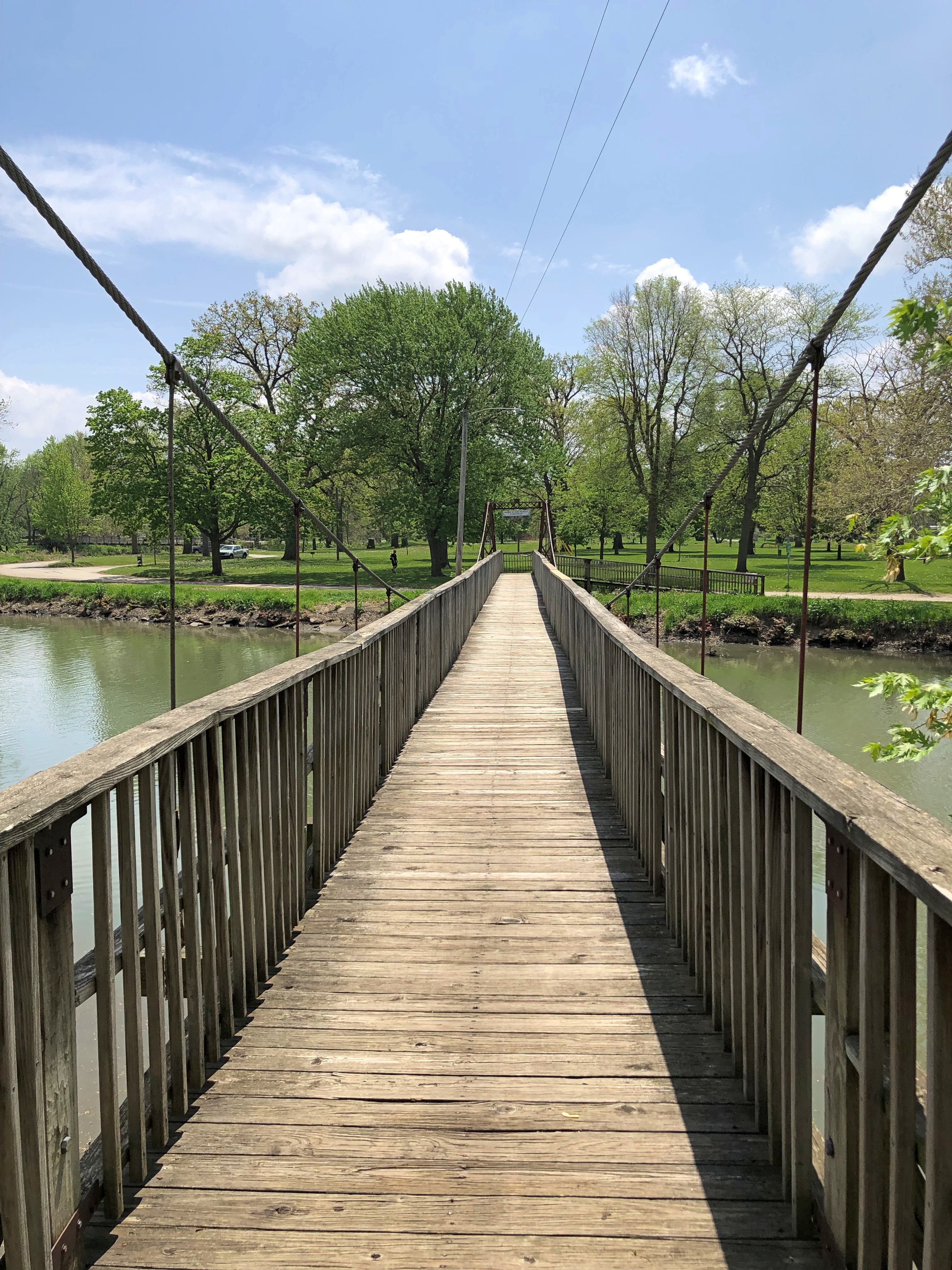
They don’t swing, exactly, at least when you walk normally, but they do wobble, and it takes a moment to get used to the motion. Nice views of the Vermilion River along with way.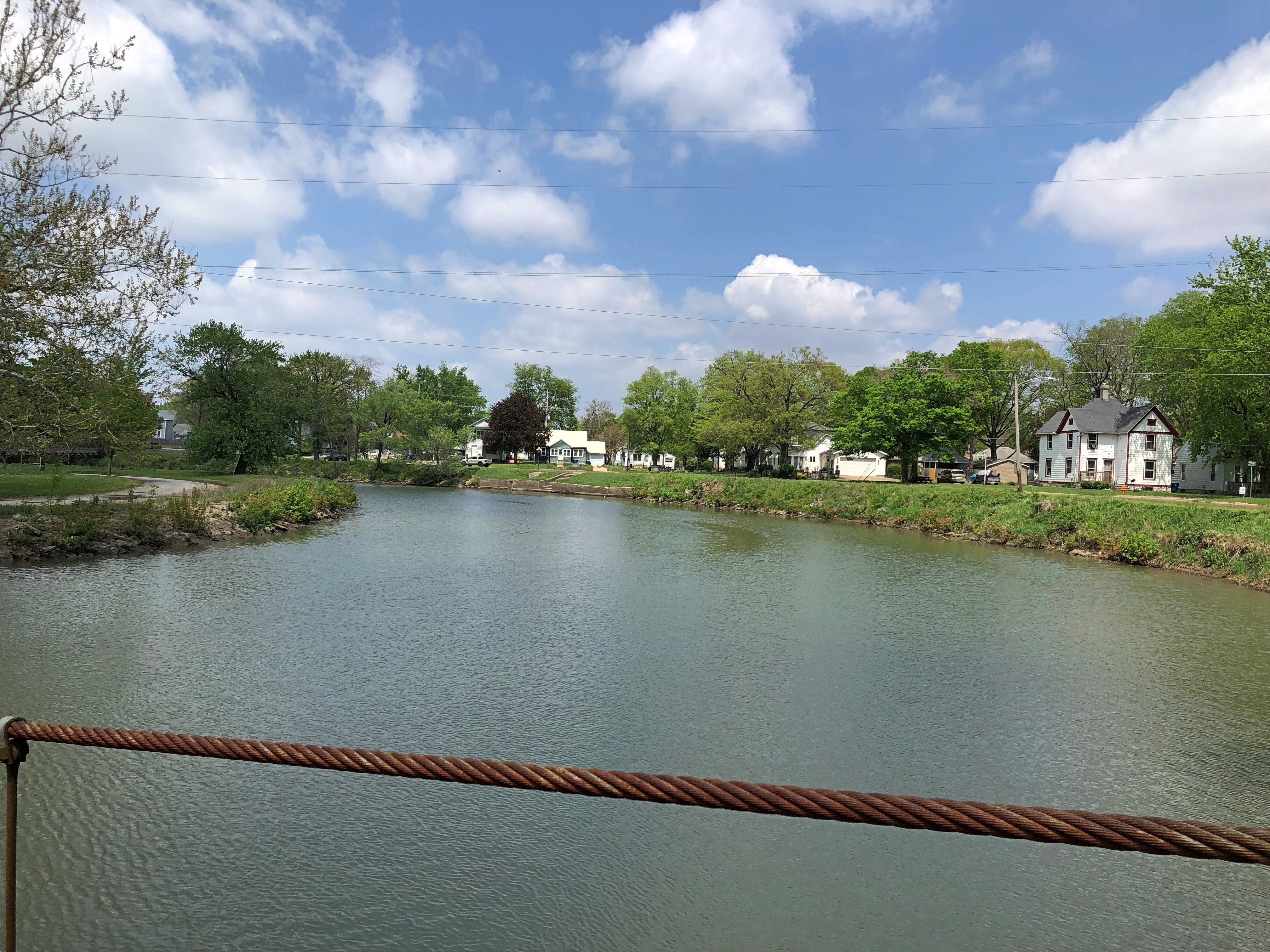

Bigger than I would have thought. At this point, the waters are on their way to the Illinois River, then of course Old Man River.
One more item in the park: a plaque-on-rock memorial.
Not just any memorial, but a fairly unusual one.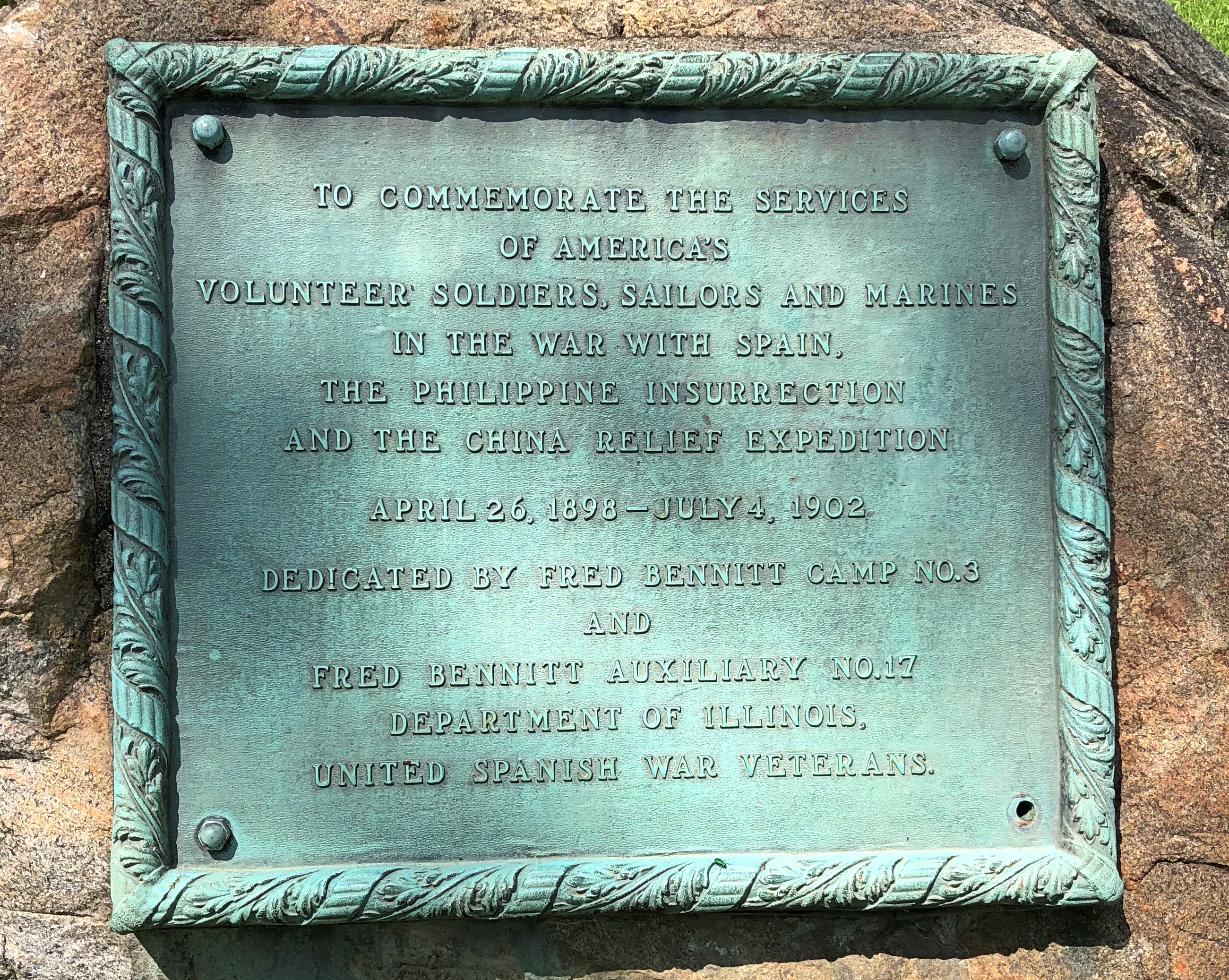
But not unknown. Naturally, I had to look up Fred Bennitt. I’m cursed that way.
